The 21st century
The 21st century began with the United States as the sole superpower in the absence of the Soviet Union, with China becoming a potential superpower.
The debate over what should be done about global warming, fossil fuel pollution and alternative energy raged in the new century after most of the 20th century was marked by industrial expansion. As the Cold War was over and Islamic fundamentalist-related terrorism on the rise, the United States and its allies turned their attention to the Middle East.
Digital technology - in its early stages of mainstream use in the 1980s and 1990s - became widely accepted by most of the world, though concerns about stress and antisociality from the overuse of mobile phones, the Internet and related technologies remained controversial.
By the end of the first decade, over 1.5 billion people worldwide used the Internet, and over 4 billion (more than half the world's population) used cell phones.
A major financial downturn gripped the world from 2007 until well into the following decade - caused by the excesses of capitalism, a sub-prime mortgage crisis in the US, and soaring debt levels. This led to a wrenching restructuring of many social, political and economic systems. For the majority of nations, recovery was driven by a combination of Keynesian policies, better regulation of financial institutions, and long term investments in building, infrastructure, energy and environmental programmes.
A new set of crises would emerge in the 2020s. As oil demand began to exceed supply, full-scale conflict erupted in the Middle East. At the same time, the effects of climate change were beginning to have a major impact on worldwide food and water supplies. Growing instability led to a number of resource wars. Even the Arctic became a battleground as nations sought to claim the last remaining oil deposits.
The 2030s and 40s were marked by a massive shift towards algae biofuel and renewable energy sources - aided by startling breakthroughs in nanotechnology. Widespread adoption of sustainable development practices greatly aided this transition. This was followed by the birth of fusion power and other technologies. Despite this, conflict was brewing around much of the world. Africa, Asia and other regions were suffering mightily due to food shortages and a growing influx of refugees affected by resource wars.
Humanity began to escape the confines of its overcrowded home planet, with the first base on Mars in the 2050s. This colony would be greatly expanded over the following decades.
Advances in computing power - which had seen exponential growth for over a century - saw AI beginning to play a major role in government and business.
Virtual Reality, in parallel with developments in neuroscience, began to profoundly change the day-to-day lives of citizens; in the developed world at least.
By 2060, the world's population had begun to level off and plateau. This was partly due to improved education and birth control - but also due to the vast numbers of deaths from starvation, drought and other adverse conditions. Entire nations were being devastated by the effects of climate change. Over half of the world's rainforests had been turned to wasteland, much farmland worldwide had been rendered useless, and freak weather events were now commonplace. Arctic sea ice in summer was non-existent. A huge amount of biodiversity had been lost, with the oceans largely devoid of life.
During this time, the USA was finally eclipsed by China as a world power, with India close behind.
The 2070s saw major growth in the use of fusion power. Accelerated space development also marked this time, with mining operations on the Moon, along with breakthroughs in propulsion allowing manned exploration of the outer Solar System. At the same time, an environmental catastrophe was unfolding on Earth, with sea levels forcing large-scale evacuations of many cities.
With continuing advances in AI, the 2080s saw an explosion in scientific discoveries. The average citizen found themselves increasingly reliant on brain-computer interfaces, and other on-person technologies, which were becoming essential for purposes of practical communication and information retrieval.
By the end of the century, it became clear that humanity no longer carried the power and influence it once had. Much of the day-to-day running of world affairs was now being carried out by ultra-fast, ultra-intelligent machines, robots and digital entities.
2000-2009 contents
2000
The world celebrates the turn of the millenium
Between 1000 AD and 2000 AD, the world changed beyond recognition.
The 2nd millennium encompassed the High Middle Ages, the Renaissance, the Early Modern Age, the age of Colonialism, industrialisation and the rise of nation states - culminating in the 20th century with the impact of science, widespread education and universal health care in many nations.
The centuries of expanding large-scale warfare with high-tech weaponry (of the World Wars and nuclear bombs) were offset by growing peace movements from the United Nations, the Peace Corps, religious campaigns warning against violence, plus doctors and health workers crossing borders to treat injuries and disease, along with the return of the Olympics as a form of contest without combat.
Scientists prevailed in explaining intellectual freedom - while huge advances in technology were developed by governments, industry and academia across the world, with education shared by countless international conferences and journals. The development of movable type, radio, television and the Internet spread information globally, within minutes - in audio, video, and print-image format - to educate, entertain, and alert billions of people by the end of the 20th century.
From the 16th century, humans migrated from Europe, Africa and Asia to the New World, beginning the ever-accelerating process of globalisation. The interwoven international trade led to the formation of multi-national corporations, with offices in multiple countries. International business ventures reduced the impact of nationalism in popular thought.
The world's population doubled over the first seven centuries of the millennium (from 310m in 1000 AD, to 600m in 1700 AD), and later increased tenfold over its last three centuries, exceeding 6 billion in 2000 AD.
Due to radical advances in genetics, some of the people alive today will live to experience the next millenium, too.

© Szefei | Dreamstime.com
The dot-com bubble bursts
The "dot-com bubble" was a speculative bubble covering roughly 1998–2000, during which stock markets in industrialized nations saw their equity value rise sharply from growth in the more recent Internet sector and related technology fields.
A combination of rapidly increasing stock prices, market confidence that the companies would turn future profits, individual speculation in stocks, and widely available venture capital created an environment in which many investors were willing to overlook traditional metrics in favor of confidence in technological advancements.
It climaxed on 10th March 2000, with the NASDAQ peaking at 5132. This was followed by a spectacular crash, with huge numbers of startups going bust. Between 2000 and 2002, more than $5 trillion was wiped off the market value of technology companies.
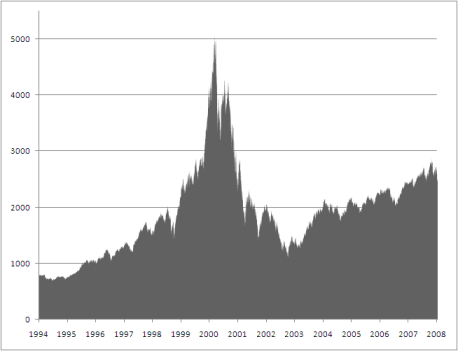
Concorde crashes in France, killing 113 people
Air France Flight 4590 was a Concorde flight from Charles de Gaulle International Airport near Paris, France, travelling to JFK International Airport in New York City.
On 25 July 2000 it crashed in Gonesse, France, killing all one hundred passengers and nine crew on board the flight, as well as four people on the ground.
As a result of this crash - together with the economic effects of 9/11 and other factors - the iconic aircraft was retired in 2003.
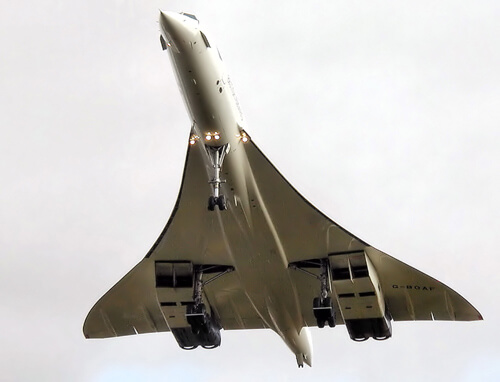
Personal home computers break the 1 gigahertz barrier
During 2000, clock speeds were going through their biggest ever rate of increase.
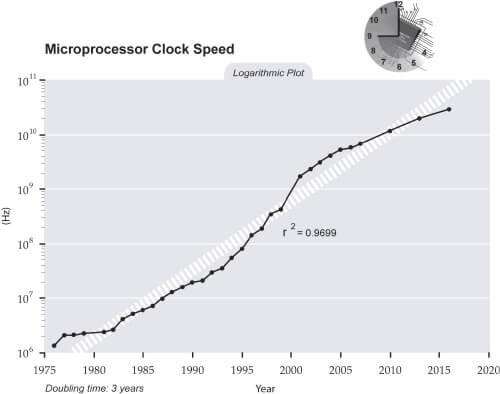
Sydney hosts the Olympic Games
This was the second time the Olympics were held in the Southern Hemisphere, the first being in Melbourne in 1956.
2001
George Bush is sworn in as the 43rd President of the United States
Following a controversial election result, Bush was sworn in as president on 20th January 2001. Though he originally outlined an ambitious domestic agenda, his priorities were significantly altered following the terrorist attacks of the same year. Wars were waged in Afghanistan and later Iraq while significant debates regarding immigration, healthcare, Social Security, economic policy, and treatment of terrorist detainees took place within the US.
Over an eight year period, Bush's once-high approval ratings steadily declined throughout his Presidency, while his disapproval numbers increased significantly over the same time frame. During 2007, the United States entered into its longest post-World War II recession and the administration responded by enacting multiple stimulus packages.
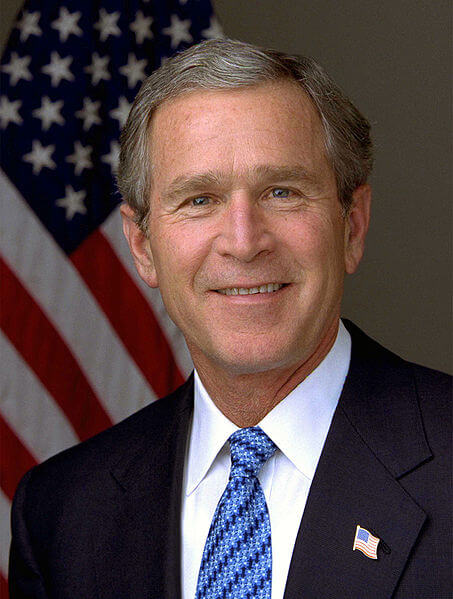
A devastating terrorist attack leaves nearly 3,000 dead in America
On September 11th, 2001, a series of coordinated suicide attacks took place in the United States. On that morning, 19 al-Qaeda terrorists hijacked four commercial airliners. The hijackers intentionally crashed two of the airliners into the Twin Towers of the World Trade Center in New York, killing everyone on board, along with many others working in the buildings.
Both towers - two of the tallest in the world at the time - collapsed within two hours, destroying nearby buildings and heavily damaging others. The hijackers crashed a third airliner into the Pentagon, just outside Washington, D.C. The fourth plane crashed into a field near Shanksville in rural Pennsylvania, after some of its passengers and crew attempted to retake control of the plane, which the hijackers had redirected toward Washington, D.C. There were no survivors from any of the flights.
2,973 victims and the 19 hijackers died as a result of the attacks. The overwhelming majority of casualties were civilians, including nationals of over 90 countries. In addition, the death of at least one person from lung disease was ruled by a medical examiner to be a result of exposure to dust from the World Trade Center's collapse.
Some American stock exchanges stayed closed for the rest of the week following the attack, and posted enormous losses upon reopening, especially in the airline and insurance industries. The destruction of billions of dollars' worth of office space caused serious damage to the economy of Lower Manhattan.
The United States responded to the attacks by launching a "War on Terrorism" - invading Afghanistan to depose the Taliban, who had harbored al-Qaeda terrorists, and enacting the USA PATRIOT Act. Many other countries also strengthened their anti-terrorism legislation and greatly expanded law enforcement powers.

The world's first space tourist
American engineer and multimillionaire Dennis Tito became the world's first space tourist in 2001. He spent nearly eight days on the International Space Station, Soyuz TM-32 and Soyuz TM-31, orbiting Earth a total of 128 times.
Tito performed several scientific experiments that he said would be useful for his company and business. Tito paid a reported $20 million for his trip, through an arrangement with space tourism company Space Adventures Ltd.
Wikipedia is launched
Wikipedia is a free, web-based, collaborative, multilingual encyclopedia project. Launched in this year, it went on to become the largest and most popular general reference work on the Internet. By 2010, more than 14 million articles (3.1 million in English) had been written by volunteers around the world.
2002
Apple introduces the iMac G4
The iMac G4 was produced by Apple from the beginning of 2002 to mid 2004. It replaced the aging iMac G3.
The iMac G4 was produced by Apple from the beginning of 2002 to mid 2004. It replaced the aging iMac G3.
This computer featured a radical new design, with a 15-inch LCD screen mounted on an adjustable arm above a hemisphere containing a full-size, tray-loading optical drive. CPU speeds ranged from 700 Mhz to 1.25 Ghz.
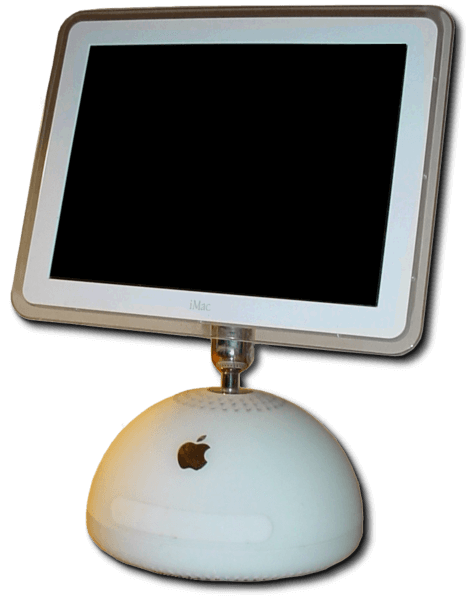
Quaoar is discovered
Quaoar is a binary trans-Neptunian object and dwarf planet, orbiting the Sun at a distance similar to Pluto. It was discovered on 4th June, 2002 by astronomers at the California Institute of Technology.
Quaoar is a binary trans-Neptunian object and dwarf planet, orbiting the Sun at a distance similar to Pluto. It was discovered on 4th June, 2002 by astronomers at the California Institute of Technology.
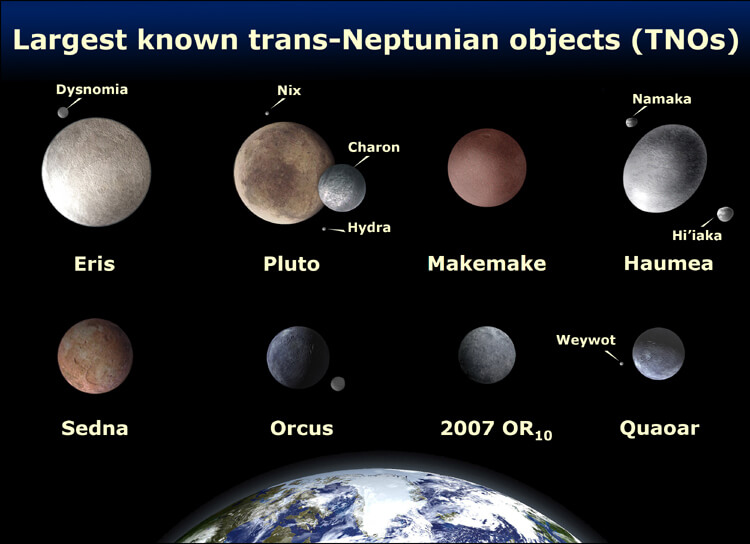
The deadliest act of terrorism in the history of Indonesia
The 2002 Bali bombings occurred on 12 October 2002 in the tourist district of Kuta on the Indonesian island of Bali. The attack was the deadliest act of terrorism in the history of Indonesia, killing 202 people, 152 of whom were foreign nationals (including 88 Australians), and 38 Indonesian citizens. A further 240 people were injured.
The 2002 Bali bombings occurred on 12 October 2002 in the tourist district of Kuta on the Indonesian island of Bali. The attack was the deadliest act of terrorism in the history of Indonesia, killing 202 people, 152 of whom were foreign nationals (including 88 Australians), and 38 Indonesian citizens. A further 240 people were injured.
The attack involved the detonation of three bombs: a backpack-mounted device carried by a suicide bomber; a large car bomb, both of which were detonated in or near popular nightclubs in Kuta; and a third much smaller device detonated outside the United States consulate in Denpasar, causing only minor damage.
Various members of Jemaah Islamiyah, a violent Islamist group, were convicted in relation to the bombings, including three individuals who were sentenced to death.
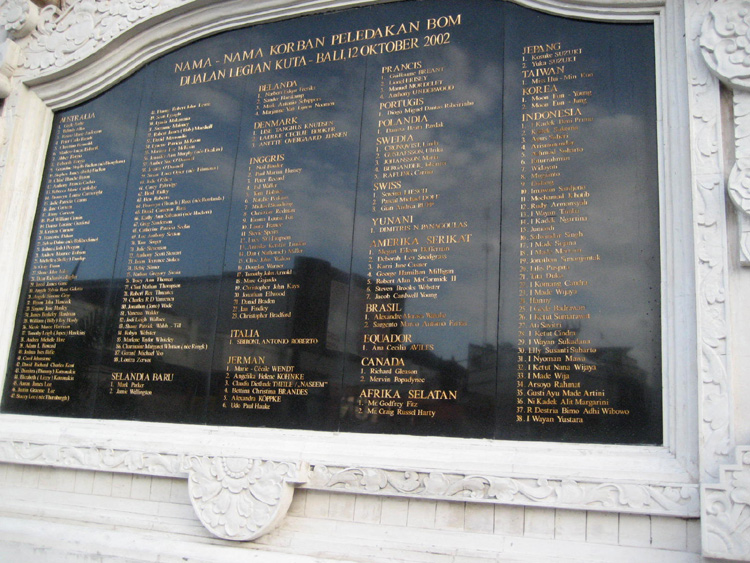
2003
Space Shuttle Columbia disaster
At the conclusion of the STS-107 mission, the Space Shuttle Columbia disintegrated during reentry over Texas, killing all 7 astronauts onboard.
At the conclusion of the STS-107 mission, the Space Shuttle Columbia disintegrated during reentry over Texas, killing all 7 astronauts onboard.
The loss of Columbia was a result of damage sustained during launch, when a piece of foam insulation the size of a small briefcase broke off the Space Shuttle external tank (the main propellant tank) under the aerodynamic forces of launch. The debris struck the leading edge of the left wing, damaging the Shuttle's thermal protection system, which was unable to protect it from heat generated by the atmospheric re-entry.
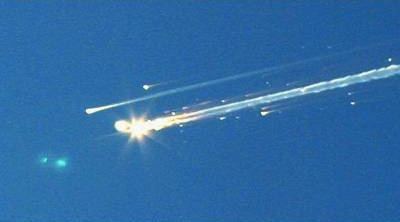
The invasion of Iraq
The invasion of Iraq was led by the United States, alongside the United Kingdom and smaller contingents from other countries. The initial invasion phase lasted from 20th March to 1st May and involved troops from the US (248,000), UK (45,000), Australia (2,000) and Poland (194). 36 other countries were involved in its aftermath.
The invasion of Iraq was led by the United States, alongside the United Kingdom and smaller contingents from other countries. The initial invasion phase lasted from 20th March to 1st May and involved troops from the US (248,000), UK (45,000), Australia (2,000) and Poland (194). 36 other countries were involved in its aftermath.
According to then President of the United States, George W. Bush and then Prime Minister of the United Kingdom, Tony Blair, the reasons for the invasion were "to disarm Iraq of weapons of mass destruction (WMD), to end Saddam Hussein's support for terrorism, and to free the Iraqi people." According to Blair, the trigger was Iraq's failure to take a "final opportunity" to disarm itself of nuclear, chemical, and biological weapons that US and British officials called an immediate and intolerable threat to world peace.
Although some remnants of pre-1991 production were found after the end of the war, US government spokespeople confirmed that these were not the weapons for which the US went to war. In 2005, the Central Intelligence Agency released a report saying that no weapons of mass destruction had been found in Iraq.
In December 2007, the Iraqi government reported that there were 5 million orphans in Iraq - nearly half of the country's children. According to the UN, Iraq's health had deteriorated to a level not seen since the 1950s. Malnutrition rates had risen from 19% before the US-led invasion to a national average of 28% four years later. Some 60-70% of Iraqi children were suffering from psychological problems. 68% of Iraqis had no access to safe drinking water. A cholera outbreak in northern Iraq was thought to be the result of poor water quality. As many as half of Iraqi doctors left the country between 2003 and 2007.
By 2010, the lowest credible estimate of civilian casualties in both Iraq and Afghanistan was around 850,000 - about 283 times as many than were killed in the attacks of 9/11. Put another way: over 121 times as many people had been killed in these wars and occupations than in all terrorist attacks in the world from 1993-2004, according to data compiled by the US State Department.
Throughout the entire Iraq War and occupation there were countless human rights abuses.
The financial cost of the war had been more than $845 billion to the US, with the total cost to the US economy estimated at $3 trillion.
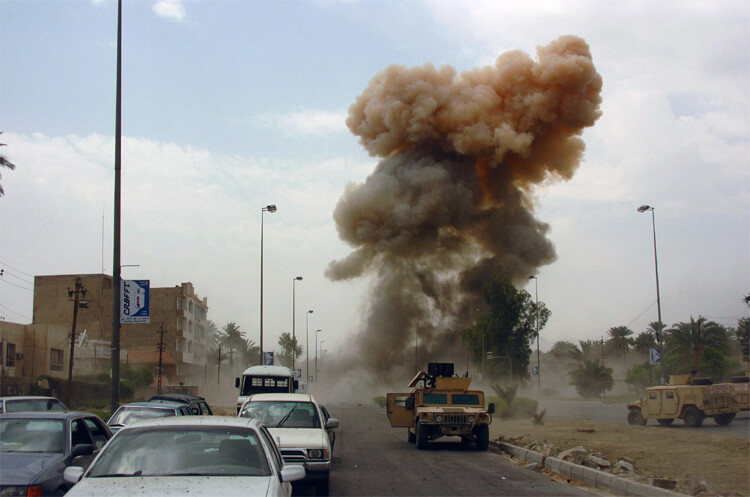
The Human Genome Project is completed
The Human Genome Project was an international scientific research project with a primary goal to determine the sequence of chemical base pairs which make up DNA and to map the 25,000 genes of the human genome from both a physical and functional standpoint.
The Human Genome Project was an international scientific research project with a primary goal to determine the sequence of chemical base pairs which make up DNA and to map the 25,000 genes of the human genome from both a physical and functional standpoint.
It began in 1990. Halfway through the project, critics pointed out that given the speed at which the genome could then be scanned, it would take thousands of years to finish.
However, a working draft of the genome was released in 2000 and a complete one in 2003. This was made possible thanks to exponential progress - like many areas of science, information on the base pairs was actually doubling every year and required only a few more doublings to reach 100%.
The project brings enormous long term benefits to the world of science and medicine. Knowledge of the effects of variation of DNA among individuals can revolutionise the ways to diagnose, treat and prevent a number of diseases that affect human beings, in addition to providing clues to the understanding of biology as a whole.
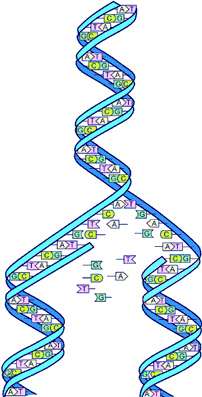
Record heatwaves kill tens of thousands in Europe
The 2003 European heat wave was one of the hottest summers ever recorded in Europe. It led to a health crisis in several countries and combined with drought to create a crop shortfall. Seven days with temperatures of more than 40°C (104 °F) were recorded in France. More than 37,000 died as a result, mostly the elderly.
The 2003 European heat wave was one of the hottest summers ever recorded in Europe. It led to a health crisis in several countries and combined with drought to create a crop shortfall. Seven days with temperatures of more than 40°C (104 °F) were recorded in France. More than 37,000 died as a result, mostly the elderly.
Heatwaves of this kind will become an annual occurence by 2080.
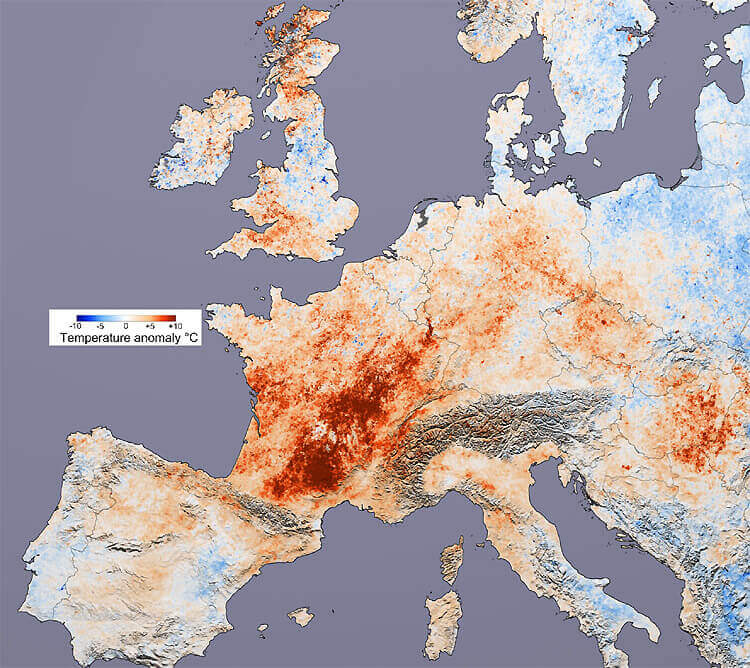
Above: 2003 heatwave temperature variations in comparison to normal temperatures in Europe.
MySpace is launched
MySpace was launched in this year and quickly became one of the most popular social networking sites on the web. In 2006, the 100 millionth account was created. However, it was overtaken by its main competitor - Facebook - during April 2008, based on monthly unique visitors.
MySpace was launched in this year and quickly became one of the most popular social networking sites on the web. In 2006, the 100 millionth account was created. However, it was overtaken by its main competitor - Facebook - during April 2008, based on monthly unique visitors.
2004
George Bush is re-elected
The US presidential election of 2004 was the United States' 55th quadrennial presidential election. It was held on Tuesday, November 2, 2004. Republican Party candidate and incumbent President George W. Bush defeated Democratic Party candidate John Kerry, the then-junior U.S. Senator from Massachusetts. Foreign policy was the dominant theme throughout the election campaign, particularly Bush's conduct of the War on Terrorism and the 2003 invasion of Iraq.
The US presidential election of 2004 was the United States' 55th quadrennial presidential election. It was held on Tuesday, November 2, 2004. Republican Party candidate and incumbent President George W. Bush defeated Democratic Party candidate John Kerry, the then-junior U.S. Senator from Massachusetts. Foreign policy was the dominant theme throughout the election campaign, particularly Bush's conduct of the War on Terrorism and the 2003 invasion of Iraq.
As in the 2000 presidential election, voting controversies and concerns of irregularities emerged during and after the vote. The winner was not determined until the following day, when Kerry decided not to dispute Bush's win in the state of Ohio. The state held enough electoral votes to determine the winner of the presidency. Both Kerry and Democratic National Committee Chairman Howard Dean have stated their opinion that voting in Ohio did not proceed fairly and that, had it done so, the Democratic ticket might have won that state and therefore the election. However, there was far less controversy about this election than in 2000.
Only three states changed allegiance. New Mexico and Iowa voted Democratic in 2000, but voted Republican in 2004. New Hampshire voted Republican in 2000 but voted Democratic in 2004. In the Electoral College, Bush received 286 votes, and Kerry 251.

Athens hosts the Olympic Games
This was the first time since 1896 that the Olympics were held in Greece.
This was the first time since 1896 that the Olympics were held in Greece.
Train bombings in Madrid kill nearly 200 people
The 2004 Madrid train bombings were a series of coordinated bombings against the Cercanías (commuter train) system of Madrid, on the morning of 11 March 2004 (three days before Spain's general elections), killing 191 people and wounding 1,800.
The 2004 Madrid train bombings were a series of coordinated bombings against the Cercanías (commuter train) system of Madrid, on the morning of 11 March 2004 (three days before Spain's general elections), killing 191 people and wounding 1,800.
The official investigation by the Spanish Judiciary determined that the attacks were directed by a Muslim al-Qaeda-inspired terrorist cell, although no direct al-Qaeda participation (only "inspiration") was established.
Nationwide demonstrations and protests followed the attacks. Some analysts claim that the Aznar administration lost the general elections as a result of the handling and representation of the terrorist attacks, rather than the bombings per se.
Hubble Ultra Deep Field
The Hubble Ultra Deep Field was an image taken by the Hubble Space Telescope, with an exposure time of 1 million seconds. It was the deepest image of the universe ever taken by humans - looking back more than 13 billion years to just a few hundred million years after the Big Bang.
The Hubble Ultra Deep Field was an image taken by the Hubble Space Telescope, with an exposure time of 1 million seconds. It was the deepest image of the universe ever taken by humans - looking back more than 13 billion years to just a few hundred million years after the Big Bang.
The HUDF image was taken in a section of sky with a low density of bright stars in the near-field, allowing much better viewing of dimmer, more distant objects. It revealed an estimated 10,000 galaxies. Located southwest of Orion in the southern hemisphere constellation Fornax, the image covers 11.0 square arcminutes. This is just one-tenth the diameter of the full moon as viewed from Earth, or smaller than a 1 mm by 1 mm square of paper held 1 meter away, and equal to roughly one thirteen-millionth of the total area of the sky.
Click to enlarge
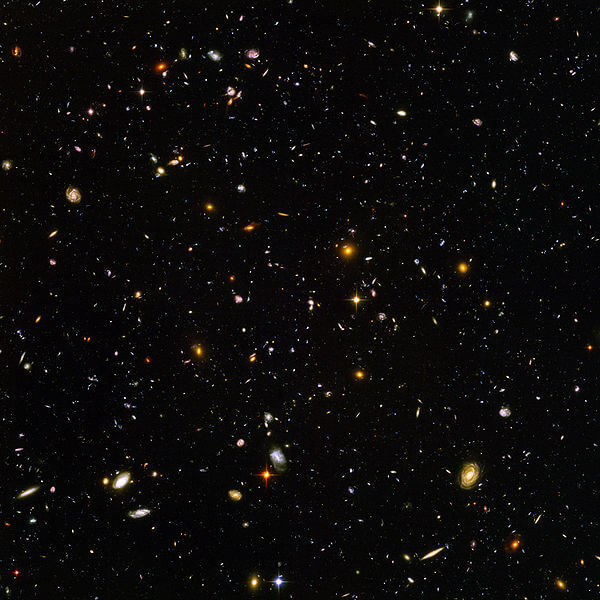
Credit: NASA
Mars Exploration Rovers
The Mars Exploration Rover Mission (MER) was a NASA mission involving two rovers - Spirit and Opportunity - exploring the surface of Mars.
The Mars Exploration Rover Mission (MER) was a NASA mission involving two rovers - Spirit and Opportunity - exploring the surface of Mars.
Their primary scientific objective was to search for and characterise a wide range of rocks and soils holding clues to past water activity on Mars. The mission was part of NASA's Mars Exploration Program which included three previous successful landers: the two Viking landers in 1976 and Mars Pathfinder in 1997.
The total cost of building, launching, landing and operating the rovers for the initial 90-Martian-day primary mission was US$820 million. However, the rovers continued to function substantially beyond their intended lifespan and remained operational into the following decade.
Click to enlarge
The first privately-funded human spaceflight
Flight 15P of SpaceShipOne became the first privately-funded human spaceflight, taking place in June 2004. It was the fourth powered test flight of the Tier One program, the previous three test flights having reached much lower altitudes. The flight carried only its pilot, Mike Melvill, who thus became the first non-governmental astronaut.
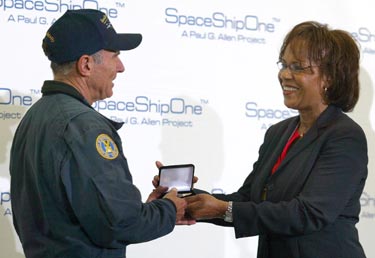
Facebook is launched
Launched in 2004, Facebook later became the most popular social networking site on the web – overtaking its main competitor, MySpace, in April 2008. It also became the most popular site for uploading photos, with 14 million uploaded daily. By 2010, it had over 350 million members – or about one-fifth of all users on the Internet.
Facebook has met with some controversy. It has been blocked intermittently in several countries including Syria, China, Vietnam and Iran. It has also been banned at many places of work to discourage employees from wasting time using the service. Privacy has also been an issue, and has been compromised on a number of occasions.
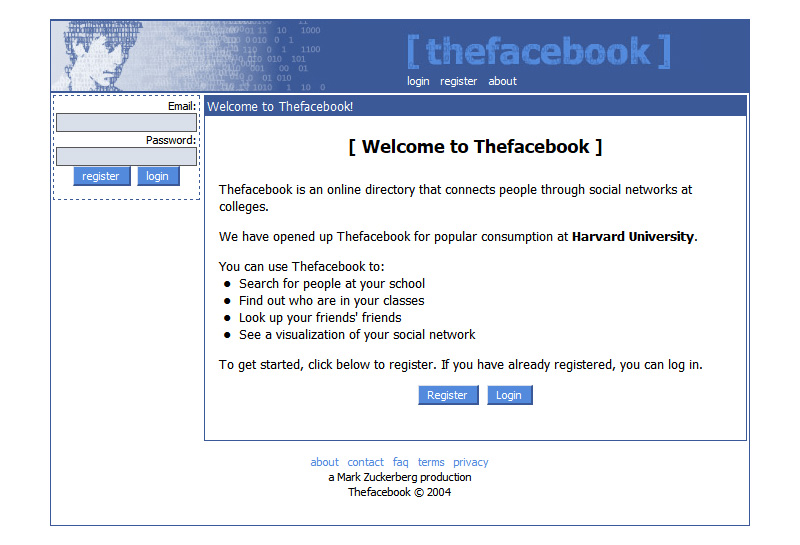
World's first 1gb SD card
In 2004, SanDisk released the first SD (Secure Digital) card with a capacity of 1 gigabyte. Costing around $500, this was enough to store 300 MP3 music files, or 2,000 images taken at 1,600 x 1,200-pixel resolution, or around nine hours of MPEG4 video.
In 2004, SanDisk released the first SD (Secure Digital) card with a capacity of 1 gigabyte. Costing around $500, this was enough to store 300 MP3 music files, or 2,000 images taken at 1,600 x 1,200-pixel resolution, or around nine hours of MPEG4 video.
SD card capacities continued to increase exponentially – doubling each year – whilst declining exponentially in cost. By 2011, they will be available at 128gb in the micro-SD form factor, measuring just 15 mm × 11 mm × 1 mm (about the size of a fingernail), or about one-quarter the size of an SD card.

London's skyline gets a new landmark
30 St Mary Axe – also known as the "Gherkin" and the Swiss Re Building – was constructed between 2001 and 2003. It officially opened in April 2004.
30 St Mary Axe – also known as the "Gherkin" and the Swiss Re Building – was constructed between 2001 and 2003. It officially opened in April 2004.
Standing 180m (590 ft) tall, it became the 2nd tallest skyscraper in the City of London. Designed by architects Norman Foster and Ken Shuttleworth, it radically altered the skyline of London and symbolised the start of a high-rise construction boom in the city.
The tower has strong environmental credentials. Natural light reaches the very core of the building – thanks to cutaway "lightwells" behind the façade, angled progressively on each floor. Occupants have 360º views of the outside world, preventing "sick building syndrome", which can be a major cause of discomfort to office workers. Light and movement sensors control artificial lighting when needed.
Meanwhile, the building’s aerodynamic form encourages wind to flow around its face, minimising wind loads on the structure and cladding, enabling the use of a more efficient structure. Wind is not deflected to ground level – as with rectilinear buildings – helping to maintain pedestrian comfort and safety at the base of the building.
Natural air movement around the building generates substantial pressure differences across its face, which can be used to facilitate natural ventilation within the building. In other words, the building can actually "breathe" by drawing in fresh air from outside, through the space formed between its double-skin glass cladding and circulating throughout its 40 storeys, once again saving huge amounts of energy consumption.
As a final touch, the building lacks parking spaces, except for disabled access. This encourages the use of public transport and bicycles, rather than cars.
Asia gets a new tallest building
Measuring 509m (1,671 ft) to the tip of its spire, Taipei 101 overtakes the Petronas Towers to become the tallest building in the world. It is the first skyscraper to break the half-kilometer mark.
Measuring 509m (1,671 ft) to the tip of its spire, Taipei 101 overtakes the Petronas Towers to become the tallest building in the world. It is the first skyscraper to break the half-kilometer mark.
Indian Ocean earthquake leaves 230,000 dead
The 2004 Indian Ocean earthquake was an undersea megathrust earthquake that occurred on 26th December 2004, with an epicentre off the west coast of Sumatra, Indonesia.
The 2004 Indian Ocean earthquake was an undersea megathrust earthquake that occurred on 26th December 2004, with an epicentre off the west coast of Sumatra, Indonesia.
Caused by subduction, it triggered a series of devastating tsunamis along coasts bordering the Indian Ocean, inundating towns and cities with waves up to 30 meters (100 feet) high. Nearly 230,000 people in fourteen countries were killed and 1.7 million displaced. It was one of the deadliest natural disasters in recorded history. Indonesia, Sri Lanka, India and Thailand were the hardest hit.
With a magnitude of 9.3, it was the second largest earthquake ever recorded on a seismograph. This earthquake had the longest duration of faulting ever observed, between 8.3 and 10 minutes. It caused the entire planet to vibrate as much as 1 cm (0.4 inches) and triggered other earthquakes as far away as Alaska.
The plight of the many affected people and countries prompted a widespread humanitarian response. In all, the worldwide community donated more than $7 billion (2004 U.S. dollars) in aid.
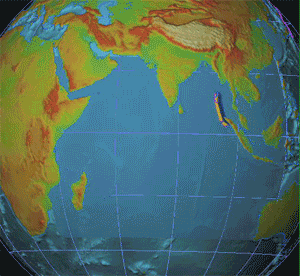
2005
Suicide bombers in London kill 56 people, injure 700 others
The 7 July 2005 London bombings, also known as 7/7, were a series of coordinated suicide attacks on London's public transport system during the morning rush hour. The bombings were carried out by four British Muslim men, three of Pakistani and one of Jamaican descent.
The 7 July 2005 London bombings, also known as 7/7, were a series of coordinated suicide attacks on London's public transport system during the morning rush hour. The bombings were carried out by four British Muslim men, three of Pakistani and one of Jamaican descent.
At 08:50, three bombs exploded within fifty seconds of each other on three London Underground trains, a fourth exploding an hour later at 09:47 on a double-decker bus in Tavistock Square. The explosions appear to have been caused by home-made organic peroxide-based devices, packed into rucksacks and detonated by the bombers themselves. Fifty-six people were killed, including the bombers, and around 700 were injured.
Hurricane Katrina floods New Orleans
Hurricane Katrina, of the 2005 Atlantic hurricane season, was the costliest hurricane - as well as one of the five deadliest, in the history of the United States. Among recorded Atlantic hurricanes, it was sixth strongest overall.
Hurricane Katrina, of the 2005 Atlantic hurricane season, was the costliest hurricane - as well as one of the five deadliest, in the history of the United States. Among recorded Atlantic hurricanes, it was sixth strongest overall.
Hurricane Katrina formed over the Bahamas on August 23, 2005 and crossed southern Florida as a moderate Category 1 hurricane, causing some deaths and flooding there before strengthening rapidly in the Gulf of Mexico. The storm weakened before making its second landfall as a Category 3 storm on the morning of Monday, August 29 in southeast Louisiana. It caused severe destruction along the Gulf coast from central Florida to Texas, much of it due to the storm surge.
The most severe loss of life and property damage occurred in New Orleans, Louisiana, which flooded as the levee system catastrophically failed, in many cases hours after the storm had moved inland. Eventually, 80% of the city and large tracts of neighboring parishes became flooded, with the floodwaters lingering for weeks.
At least 1,836 people lost their lives in the actual hurricane and in the subsequent floods, while preliminary damage estimates were in excess of $100 billion - eclipsing many times the damage wrought by Hurricane Andrew in 1992.
The levee failures prompted investigations into their design and construction. There was also an investigation of the responses from federal, state and local governments. Years later, thousands of displaced residents in Mississippi and Louisiana were still living in trailers.
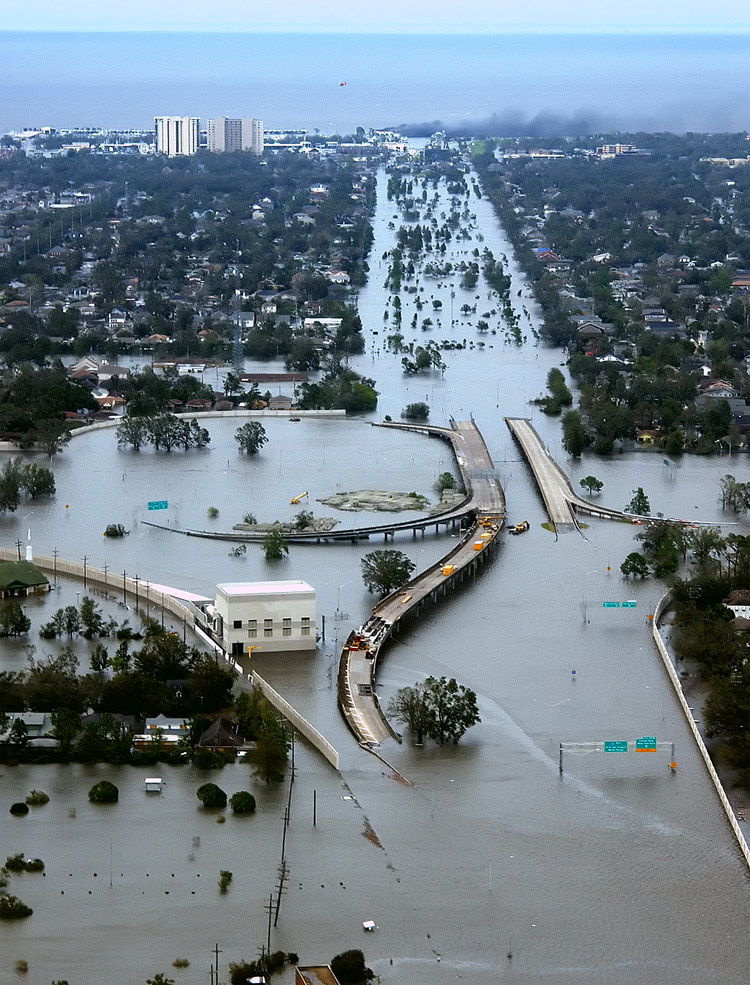
Huygens probe reveals images of Titan's surface
The Huygens probe, supplied by the European Space Agency (ESA) and named after the Dutch 17th century astronomer Christiaan Huygens, was an atmospheric entry probe carried to Saturn's moon Titan as part of the Cassini-Huygens mission. The combined Cassini-Huygens spacecraft was launched from Earth in 1997.
The Huygens probe, supplied by the European Space Agency (ESA) and named after the Dutch 17th century astronomer Christiaan Huygens, was an atmospheric entry probe carried to Saturn's moon Titan as part of the Cassini-Huygens mission. The combined Cassini-Huygens spacecraft was launched from Earth in 1997.
Huygens separated from the Cassini orbiter on December 25, 2004, and landed on Titan on January 14, 2005 near the Xanadu region. It touched down on land, although the possibility that it would touch down in an ocean was also taken into account during its design.
The probe continued to send data for about 90 minutes after reaching the surface.
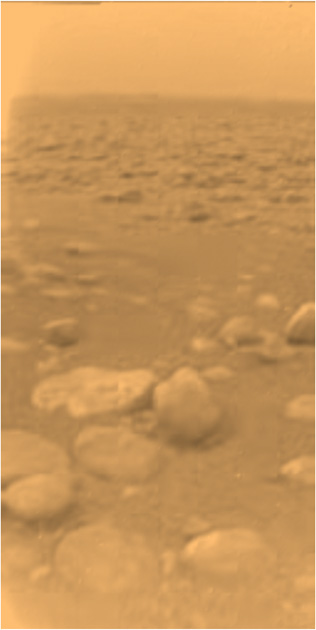
Credit: NASA
YouTube is launched
The popular video-sharing website, YouTube, was launched this year. It grew rapidly, reaching 100m views per day within a year of being launched. By 2007, the site consumed as much bandwidth as the entire Internet in 2000 - and in March 2008, its bandwidth costs were estimated at approximately $1 million a day. By 2009, the site had reached over a billion views daily, becoming the 4th most popular website after Google, Yahoo! and Facebook.
The popular video-sharing website, YouTube, was launched this year. It grew rapidly, reaching 100m views per day within a year of being launched. By 2007, the site consumed as much bandwidth as the entire Internet in 2000 - and in March 2008, its bandwidth costs were estimated at approximately $1 million a day. By 2009, the site had reached over a billion views daily, becoming the 4th most popular website after Google, Yahoo! and Facebook.
YouTube's social impact was considerable. Before its launch in 2005, there were few easy methods available for computer users wanting to post videos online. With its simple interface, YouTube made it possible for anyone with an Internet connection to post a video that a worldwide audience could watch within minutes. The wide range of topics covered by YouTube turned video sharing into one of the most important parts of Internet culture.
YouTube popularised many trends outside the Internet, created a number of Internet celebrities, and promoted democracy and debate around the globe. It even played a role in the 2008 US presidential election.
However, the site proved controversial in some nations, with governments blocking access. It also received criticism for failing to ensure copyright protection.
Angela Merkel becomes the first female Chancellor of Germany
Angela Merkel, leader of the Christian Democrats (CDU), became Germany's first woman chancellor. Mrs Merkel, a conservative, headed a coalition with the centre-left Social Democrats (SPD), who ruled before. Two years later, she became President of the European Council and only the second woman to chair the G8 after Margaret Thatcher.
Angela Merkel, leader of the Christian Democrats (CDU), became Germany's first woman chancellor. Mrs Merkel, a conservative, headed a coalition with the centre-left Social Democrats (SPD), who ruled before. Two years later, she became President of the European Council and only the second woman to chair the G8 after Margaret Thatcher.
She played a central role in the negotiation of the Treaty of Lisbon and the Berlin Declaration. In domestic policy, health care reform and problems concerning future energy development would become major issues of her tenure.
2006
Peak Oil is reached
Conventional crude oil production reached its peak in 2006. From this point onwards, fossil fuels would go into terminal decline. However, this only became clear some four years later, when the International Energy Agency (which had been notoriously optimistic in the past) released its World Energy Outlook 2010.*
Conventional crude oil production reached its peak in 2006. From this point onwards, fossil fuels would go into terminal decline. However, this only became clear some four years later, when the International Energy Agency (which had been notoriously optimistic in the past) released its World Energy Outlook 2010.*
This report confirms what many had long suspected and feared - that the primary driver of humanity's development, for over 150 years, is now finally being exhausted.* There are major issues it fails to address, such as where the crude oil for the next 25 years is expected to be found (to even maintain a plateau), as well as the energy return on energy invested, the quality of energy from newly developed fields, the inevitable recession from higher prices, the political sensitivity of remaining reserves, and much more.*
Governments remain ill-prepared for this emerging crisis, while most of the public are completely oblivious to what lays ahead. Unprecedented social, political and economic changes will reshape the world in the coming decades.*
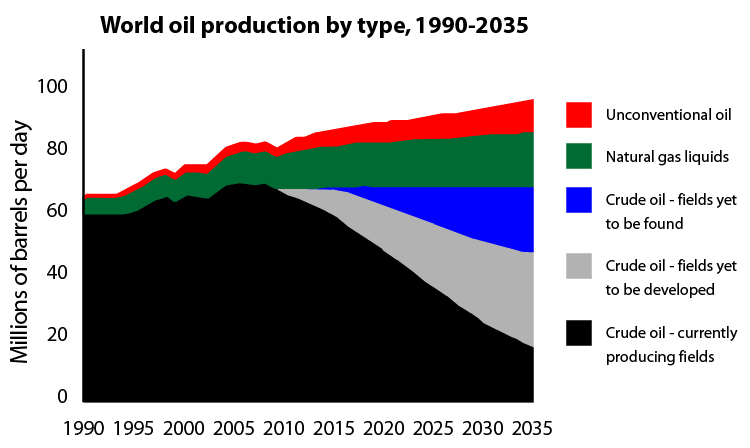
North Korea conducts its first nuclear test
North Korea announced its intention to conduct a test on 3rd October, six days prior, and in doing so became the first nation to give warning of its first nuclear test. The blast was estimated to have an explosive force of less than one kiloton, and some radioactive output was detected.
North Korea announced its intention to conduct a test on 3rd October, six days prior, and in doing so became the first nation to give warning of its first nuclear test. The blast was estimated to have an explosive force of less than one kiloton, and some radioactive output was detected.
An anonymous official at the North Korean Embassy in Beijing told a South Korean newspaper that the explosive output was smaller than expected. Because of the secretive nature of North Korea and the small yield of the test, there were questions as to whether it was an unusually small successful test, or simply a dud.
In any case, international condemnation of the tests was nearly unanimous, including from North Korea's close ally, the People's Republic of China. On 14th October 2006, the UN Security Council unanimously approved military and economic sanctions.
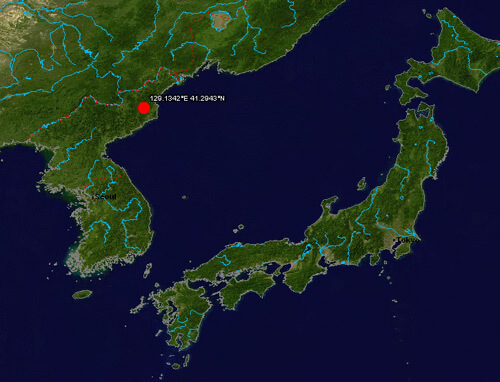
West African black rhinos are declared extinct
At the start of the 21st century, there were four subspecies of black rhino. The World Conservation Union (IUCN) announced in 2006 that one of the four subspecies, the West African Black Rhinoceros (Diceros bicornis longipes), had been tentatively declared extinct. Despite an exhaustive survey across Africa, none could be found, and there were none being held in captivity anywhere. The remaining three subspecies remained critically endangered.
At the start of the 21st century, there were four subspecies of black rhino. The World Conservation Union (IUCN) announced in 2006 that one of the four subspecies, the West African Black Rhinoceros (Diceros bicornis longipes), had been tentatively declared extinct. Despite an exhaustive survey across Africa, none could be found, and there were none being held in captivity anywhere. The remaining three subspecies remained critically endangered.
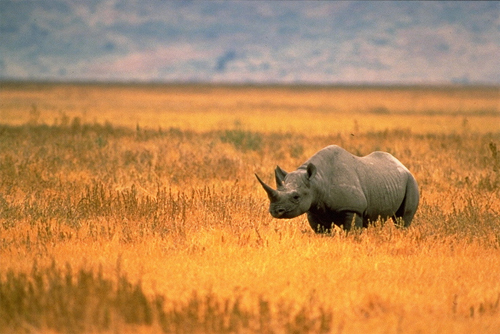
Pluto is demoted to "dwarf planet" status
From its discovery in 1930 until 2006, Pluto was considered the Solar System's ninth planet. In the late 1970s, following the discovery of minor planet 2060 Chiron and the recognition of Pluto's very low mass, its status as a major planet began to be questioned. Later, in the early 21st century, many objects similar to Pluto were discovered in the outer Solar System, notably the scattered disc object Eris, which is 27% more massive than Pluto.
From its discovery in 1930 until 2006, Pluto was considered the Solar System's ninth planet. In the late 1970s, following the discovery of minor planet 2060 Chiron and the recognition of Pluto's very low mass, its status as a major planet began to be questioned. Later, in the early 21st century, many objects similar to Pluto were discovered in the outer Solar System, notably the scattered disc object Eris, which is 27% more massive than Pluto.
On 24th August 2006 the International Astronomical Union defined the term "planet" for the first time. This definition excluded Pluto, instead adding it as a member of a new category - "dwarf planet" - together with Eris and Ceres. After the reclassification, Pluto was added to the list of minor planets and given the number 134340. A number of scientists continued to hold that Pluto should be classified as a planet.
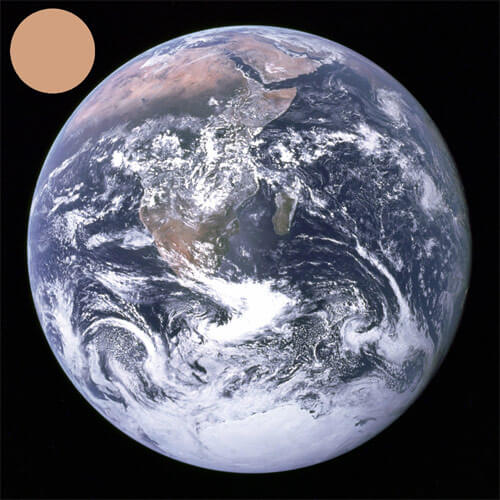
Saddam Hussein is executed
The execution of Saddam Hussein took place on 30th December, 2006. He was sentenced to death by hanging, after being found guilty of crimes against humanity by the Iraqi Special Tribunal for the murder of 148 Iraqi Shi'ites in the town of Dujail in 1982, in retaliation for an assassination attempt against him.
The execution of Saddam Hussein took place on 30th December, 2006. He was sentenced to death by hanging, after being found guilty of crimes against humanity by the Iraqi Special Tribunal for the murder of 148 Iraqi Shi'ites in the town of Dujail in 1982, in retaliation for an assassination attempt against him.
Saddam Hussein was President of Iraq from 1979 until 2003, when he was deposed during the invasion of Iraq by a U.S.-led Allied Coalition. After his capture in ad-Dawr, near his hometown of Tikrit, he was incarcerated at Camp Cropper. On 5th November 2006, he was sentenced to death by hanging.
On 30th December, he was taken to the prison to be executed. The Iraqi government released an official videotape of the execution, showing him being led to the gallows, and ending after his head was in the hangman's noose. International public controversy arose when an unauthorized cellphone recording showed him falling through the trapdoor of the gallows. The audio - which was not in the official video - revealed taunts between Saddam and his executioners, many of whom were strong supporters of Muqtada Al-Sadr. The unprofessional and undignified atmosphere of the execution drew criticism from nations around the world.
On 31st December 2006, Saddam Hussein's body was returned to his birthplace of Al-Awja, near Tikrit, and was buried near the graves of other family members.
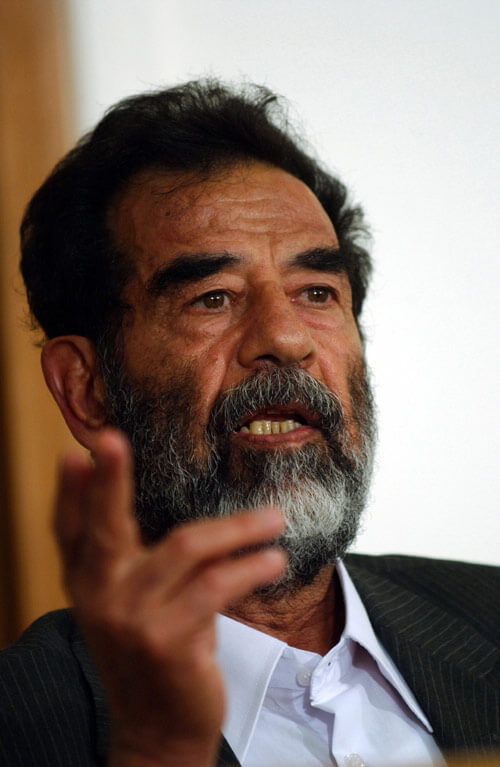
2007
Global economic downturn
During this period, the world experiences the biggest financial crisis since the Great Depression. Former chairman of the Federal Reserve, Alan Greenspan, calls it a "once-in-a-century type of event".
During this period, the world experiences the biggest financial crisis since the Great Depression. Former chairman of the Federal Reserve, Alan Greenspan, calls it a "once-in-a-century type of event".
This global financial meltdown is caused by a number of factors.
Primarily, it is a result of the Wild West casino mentality which has characterised investment banking over the last two decades, combined with a lack of regulation. Merchant bankers - keen to make a fast buck - had realised there were vast numbers of poor Americans who had been refused loans because they wouldn't be able to pay them back. Motivated by short term gains, they employed predatory mortgage lenders to offer these people the chance to own their first home. Inevitably, this led to millions of poor Americans with homes they couldn't afford. Bankers then bundled these mortgages together with other more secure loans, before selling them on to other banks, who sold them onto other financial institutions, and so on. The bankers then received enormous bonuses for the commission and fees they generated.
This "sub prime" market was a time bomb waiting to go off. As interest rates rose, millions of Americans began defaulting on repayments. The loans which had originated from them were suddenly shown to be worthless - but it was already too late, as trillions of dollars' worth had spread throughout the system. With banks afraid to lend to each other - and not knowing the extent of each others' exposure - the outcome was collapse on an unprecedented scale, with a liquidity crisis almost unparalleled in history. Some of the largest banks in the world, including Lehman Brothers and Bear Sterns, went into administration. Mortgage giants Fannie Mae and Freddie Mac were nationalised. Even the likes of AIG and Citigroup had to be rescued.
The other major factor which led to all this, was simply the greed of consumers and their desire for instant gratification. In addition to buying homes they couldn't afford, credit cards and loans were used to purchase endless luxury items and other products they didn't particularly need. Personal debt levels soared, leading to a massive rise in bankruptcies and foreclosures, triggering a worldwide recession.
Gordon Brown succeeds Tony Blair as Prime Minister of Great Britain
Initially, during the first four months of his premiership, Brown enjoyed a good lead in the polls. His popularity amongst the public was due in part to his handling of several serious events during his first weeks as Prime Minister.
Initially, during the first four months of his premiership, Brown enjoyed a good lead in the polls. His popularity amongst the public was due in part to his handling of several serious events during his first weeks as Prime Minister.
By the end of 2008, his popularity had fallen significantly, with eight Labour MPs calling for a leadership contest. However, this threat receded due to his perceived strong handling of the global financial crisis.
His popularity hit an all time low during the expenses scandal of May 2009, which Brown was seen to deal with indecisively. To make matters worse, Brown's cabinet began to rebel, with several key resignations in the run up to local and European elections in June 2009.
Nicolas Sarkozy is elected President of the French Republic
Sarkozy succeeded Jacques Chirac as French president and promised to usher in a new era of change. Among his aims was the revitalisation of the French economy. He pledged to revive the work ethic and promote new initiatives, as well as fighting intolerance. In foreign affairs, he promised a strengthening of the entente cordiale with the United Kingdom and closer cooperation with the United States. He married former model Carla Bruni in 2008.
Sarkozy succeeded Jacques Chirac as French president and promised to usher in a new era of change. Among his aims was the revitalisation of the French economy. He pledged to revive the work ethic and promote new initiatives, as well as fighting intolerance. In foreign affairs, he promised a strengthening of the entente cordiale with the United Kingdom and closer cooperation with the United States. He married former model Carla Bruni in 2008.
Arctic sea ice hits a record low
Arctic sea ice hit a record low of 4.14 million km² during the summer of 2007. This shattered the previous record, with an area of additional melting the size of five United Kingdoms. For the first time in recorded history, the fabled Northwest Passage became open to ships without the need for icebreakers.
Arctic sea ice hit a record low of 4.14 million km² during the summer of 2007. This shattered the previous record, with an area of additional melting the size of five United Kingdoms. For the first time in recorded history, the fabled Northwest Passage became open to ships without the need for icebreakers.
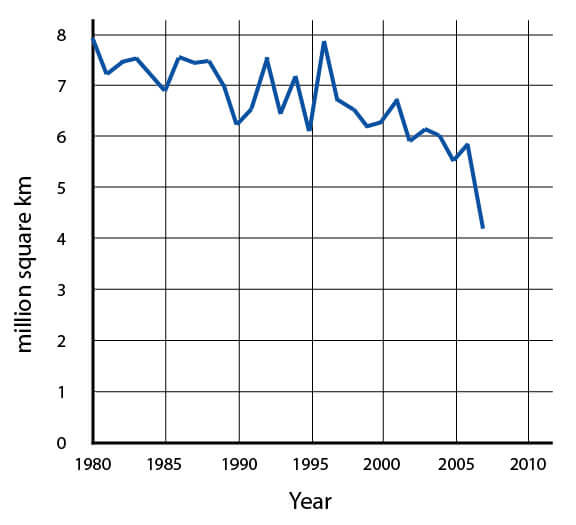
Source: NASA
Apple debuts the iPhone
Released this year, the iPhone is a multimedia-enabled smartphone designed and marketed by Apple Inc. It functions as a camera phone (also including text messaging and visual voicemail), a portable media player (equivalent to a video iPod), and Internet client (with e-mail, web browsing, and Wi-Fi connectivity), using a multi-touch screen to provide a virtual keyboard in lieu of a physical keyboard. Time magazine named it the Invention of the Year.
Released this year, the iPhone is a multimedia-enabled smartphone designed and marketed by Apple Inc. It functions as a camera phone (also including text messaging and visual voicemail), a portable media player (equivalent to a video iPod), and Internet client (with e-mail, web browsing, and Wi-Fi connectivity), using a multi-touch screen to provide a virtual keyboard in lieu of a physical keyboard. Time magazine named it the Invention of the Year.
A more advanced model, the iPhone 3G, was released in 2008. This supported faster 3G data speeds and assisted GPS. Apple released version 3.0 of the iPhone OS for the iPhone (and iPod Touch) in 2009. The iPhone 3GS had improved performance, a camera with higher resolution and video capability, along with voice control.
By 2010, over 42 million units had been sold, with tens of thousands of downloadable apps now available.
Amazon releases the Kindle
The Kindle is a software and hardware platform developed by Amazon subsidiary Lab126, for rendering and displaying e-books and other digital media. The device uses an electronic paper display and is able to download books and other digital content from Amazon, without a computer and without any monthly fee.
The Kindle is a software and hardware platform developed by Amazon subsidiary Lab126, for rendering and displaying e-books and other digital media. The device uses an electronic paper display and is able to download books and other digital content from Amazon, without a computer and without any monthly fee.

Google Street View is launched
Google Street View is a technology featured in Google Maps and Google Earth that provides panoramic views from various positions along many streets in the world. It was originally launched only in several US cities, but gradually expanded to include many more cities and rural areas worldwide.
Google Street View is a technology featured in Google Maps and Google Earth that provides panoramic views from various positions along many streets in the world. It was originally launched only in several US cities, but gradually expanded to include many more cities and rural areas worldwide.
Benazir Bhutto is assassinated in Pakistan
Bhutto was assassinated on 27th December 2007, after departing a PPP rally in the Pakistani city of Rawalpindi - two weeks before the scheduled Pakistani general election of 2008, where she was a leading opposition candidate. The following year, she was named one of seven winners of the UN Prize in the Field of Human Rights.
Bhutto was assassinated on 27th December 2007, after departing a PPP rally in the Pakistani city of Rawalpindi - two weeks before the scheduled Pakistani general election of 2008, where she was a leading opposition candidate. The following year, she was named one of seven winners of the UN Prize in the Field of Human Rights.
2008
Oil prices hit a record high of $147/barrel
In July 2008, oil prices rose to a record high of $147 a barrel following concern over recent Iranian missile tests. However, prices declined to just $33 a barrel in December, less than a quarter of the peak price reached four months earlier. A strong contributor to this decline was the drop in demand for oil in the USA, as well as the global equities slide.
In July 2008, oil prices rose to a record high of $147 a barrel following concern over recent Iranian missile tests. However, prices declined to just $33 a barrel in December, less than a quarter of the peak price reached four months earlier. A strong contributor to this decline was the drop in demand for oil in the USA, as well as the global equities slide.
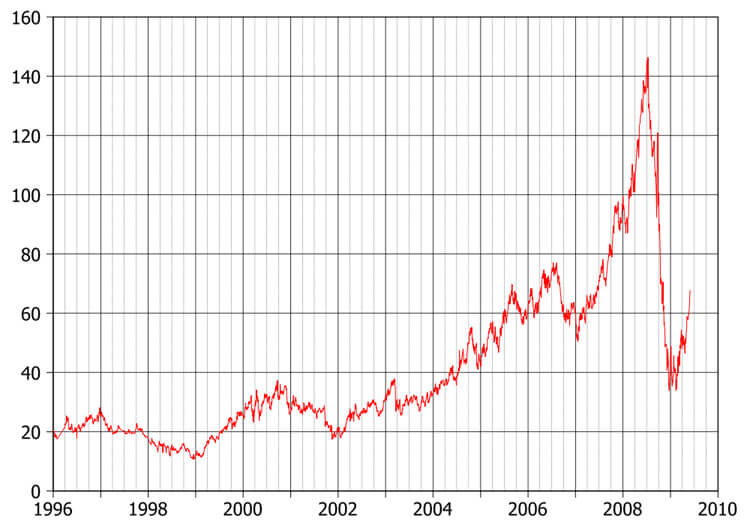
Credit: Theanphibian
The Internet continues to boom
A decade after the dotcom boom, the Internet continues to grow at a phenomenal pace. By 2008, the search engine Google had processed over 1,000,000,000,000 (one trillion) unique URLs, whilst the number of individual web pages was growing by several billion per day and the number of individual users had reached nearly 1.5 billion.
A decade after the dotcom boom, the Internet continues to grow at a phenomenal pace. By 2008, the search engine Google had processed over 1,000,000,000,000 (one trillion) unique URLs, whilst the number of individual web pages was growing by several billion per day and the number of individual users had reached nearly 1.5 billion.
The Internet can now be accessed virtually anywhere, by numerous means. Mobile phones, smartphones, datacards, laptops, handheld games consoles and cellular routers allow users to connect to the Internet from anywhere there is a cellular network supporting that device's technology. Broadband is becoming ubiquitous.
Recent trends include the rise of social networking websites (such as Facebook), social bookmarking (such as Digg) and a huge increase in blogging, micro-blogging, wiki sites, music downloads, video sharing and podcasts.
Online gaming is becoming immensely popular. It is no longer a niche market for adolescents, but very much part of mainstream entertainment - with some games generating more revenue than blockbuster movies. Users can take part in highly realistic battle simulations (such as Call of Duty), or racing games, or MMORPGs (Massively Multiplayer Online Role Playing Games) such as World of Warcraft; or they can explore and interact with entire virtual worlds (such as Second Life) and engage in the trading of virtual goods and services.
Many traditional high street retailers - especially those dealing in purely digital products such as games, DVDs or music CDs - are finding themselves increasingly outmoded by online retailers who offer greater speed, convenience and cost savings.
Scientists extract images directly from the brain
In a major scientific breakthrough, a Japanese company has developed a way of analysing electrical signals sent from the visual cortex and converting them to digital images on a screen.
In a major scientific breakthrough, a Japanese company has developed a way of analysing electrical signals sent from the visual cortex and converting them to digital images on a screen.
In one of the experiments, test subjects were shown the six letters in the word "neuron". The computer successfully reconstructed the word on screen by measuring their brain activity.*
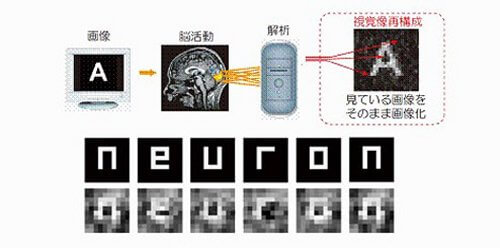
Artificial DNA
Using purely artificial components, Japanese scientists at the University of Toyama have created unusually stable, double-stranded structures resembling natural DNA. This breakthrough could lead to improvements in gene therapy, nano-sized computers and other high-tech advances.*
Using purely artificial components, Japanese scientists at the University of Toyama have created unusually stable, double-stranded structures resembling natural DNA. This breakthrough could lead to improvements in gene therapy, nano-sized computers and other high-tech advances.*
Breakthrough in wireless energy transfer
Intel Corporation demonstrates wireless electricity sent to a lightbulb at 75% efficiency.* This technology still faces a number of problems,* but will eventually see large-scale adoption. One of the main benefits will be reduced clutter in homes and offices, since the need for power cords will be eliminated.
Intel Corporation demonstrates wireless electricity sent to a lightbulb at 75% efficiency.* This technology still faces a number of problems,* but will eventually see large-scale adoption. One of the main benefits will be reduced clutter in homes and offices, since the need for power cords will be eliminated.
Major advances in CGI
New modelling technology, pioneered by California-based company Image Metrics, now enables the most minute details of a facial expression to be captured and recreated. This means a long-standing barrier known as the 'uncanny valley' - the perception that animation looks less realistic as it approaches human likeness - may soon be crossed. An example of this new technology can be seen in the video below, which shows an entirely computer-generated woman called "Emily". Researches believe the line between what appears real and what is merely rendered may be blurred completely by 2020.*
New modelling technology, pioneered by California-based company Image Metrics, now enables the most minute details of a facial expression to be captured and recreated. This means a long-standing barrier known as the 'uncanny valley' - the perception that animation looks less realistic as it approaches human likeness - may soon be crossed. An example of this new technology can be seen in the video below, which shows an entirely computer-generated woman called "Emily". Researches believe the line between what appears real and what is merely rendered may be blurred completely by 2020.*
Video adverts on London's tube
Video screen adverts - including web content displayed in real time - are appearing on the London Underground.*They are limited to the busiest stations initially, but will soon spread to the entire network. Various other cities are beginning to adopt this technology too.
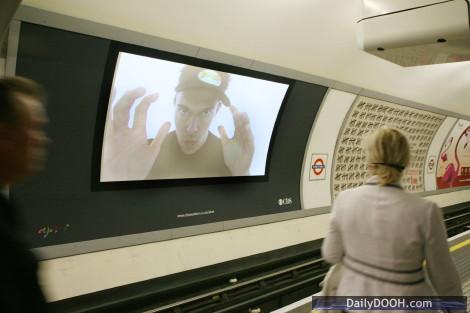
Beijing hosts the Olympic Games
The 2008 Summer Olympics were held in Beijing and featured a spectacular opening ceremony. However, the choice of China as a host country was the subject of criticism by some politicians and non-governmental organizations concerned about China's human rights record. China and others, meanwhile, warned against politicising the Olympics. At the closing ceremony, IOC president Jacques Rogge declared the event a "truly exceptional Games", after earlier asserting that the IOC had "absolutely no regrets" in choosing Beijing to host the 2008 Games.
2009
Major breakthrough in cancer research
In a major scientific landmark, the complete genetic codes for both skin and lung cancer have been identified.*Every mutation that turns healthy cells cancerous is now catalogued - paving the way for drug targets that could lead to possible cures in the near future. Blood tests to spot tumours will also be possible at far earlier stages.*
The genetic code for other types of cancer will soon be catalogued too: the USA is looking at cancers of the brain, ovary and pancreas; the UK is looking at breast cancer; Japan is studying the liver; China the stomach; and India the mouth.*
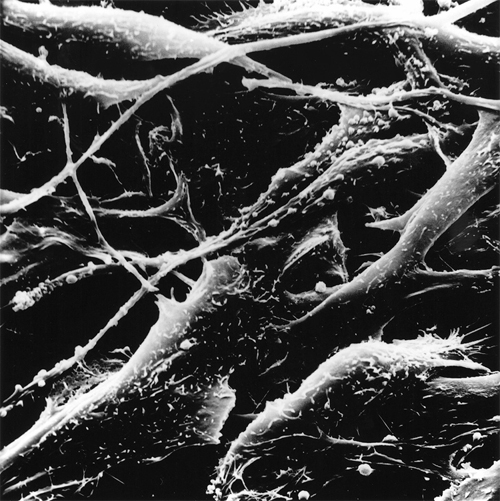
Scientists engineer plastics without fossil fuels
Scientists in Korea have developed a one-step production process for creating everyday plastics through the use of bioengineering, rather than fossil-fuel based chemicals.*
This has enormous implications for the future of manufacturing. Until now, almost all plastics have been heavily reliant on oil, an increasingly limited resource.
Furthermore, these new plastics are environmentally friendly, biodegradable and low in toxicity.
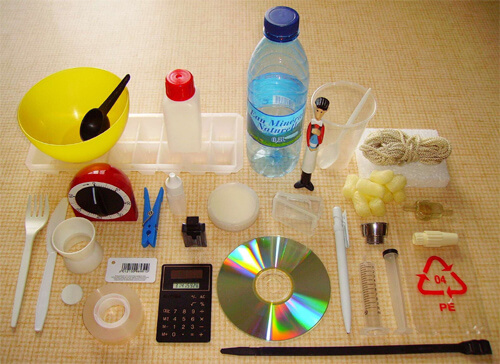
Mouse genome is fully sequenced
After a 10-year effort, scientists have finished mapping the entire mouse genome.* Given the prevalence of mice in laboratory experiments - and the similarities with our own genetic code - this will greatly aid our understanding and treatment of diseases.
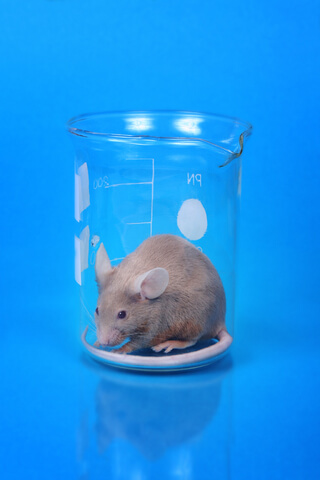
Credit: Emielcia
Water is discovered on the Moon
The Lunar Crater Observation and Sensing Satellite (LCROSS) was the first American mission to the Moon in over a decade. It was designed to relay data from the impact and debris plume resulting from the vehicle's upper stage, Centaur, hitting a large crater near the Moon's south pole.
The probe impacted successfully, with a velocity of about 10,000 km/h (6,200 mph). The plume of debris thrown up by the craft revealed significant amounts of water ice - perhaps enough to supply drinking water to future colonists as well as hydrogen for rocket fuel.*
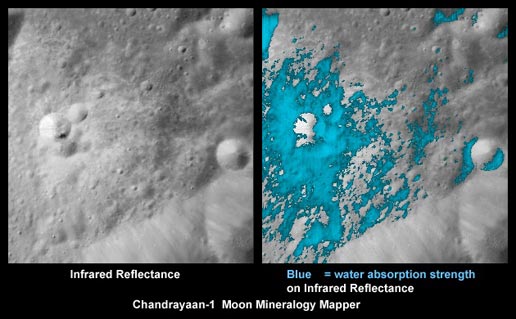
Credits: ISRO/NASA/JPL-Caltech/USGS/Brown Univ.
Mercury is 98% mapped
NASA's MESSENGER probe completed a third and final flyby of the planet in 2009. This helped to map 98% of its surface - including the previously unseen far side. It also revealed higher than expected amounts of heavy metals such as iron and titanium, forcing scientists to rethink how the small planet evolved. Data also revealed changing seasons on the planet, in the form of varying chemical compositions in Mercury's thin atmosphere.*
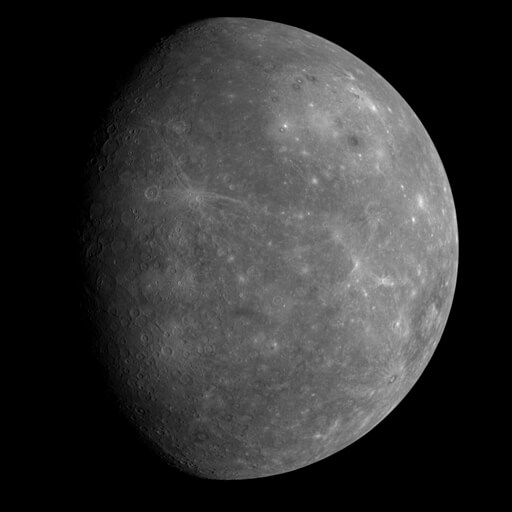
A shift towards portable (and ultra-portable) PCs
The market is moving toward portable PCs even faster than expected. By 2009, the laptop share of PCs bought worldwide has overtaken desktops for the first time.* In addition, a new generation of "ultra portables" is emerging. These are significantly cheaper and more compact than traditional laptops, but offer many of the same features including wireless Internet access.
Computers as a whole are seeing phenomenal sales growth, with almost 300 million units shipped this year alone. The emergence of India as a major IT centre is having a big influence here.
Memory cards with capacities exceeding 2TB will soon be available for digital devices - enough to store more than 4,000 RAW images, 100 HD movies, or 60 hours of HD recording.
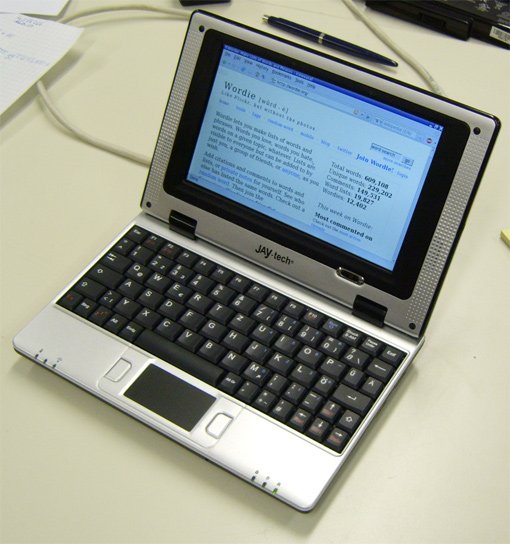
Above: The netbook form-factor provides ultra-portability
Mind control headsets for video gaming
Emotiv, a San Francisco-based company, have released a headset which allows gamers to control video gamesfrom their brain waves alone.* This is done in a completely non-intrusive manner: no crude implants or direct physical contact are required. Sensors on the headset can detect the neuroelectrical patterns in the wearer's head, and these are converted into actions on screen.
Emotiv, a San Francisco-based company, have released a headset which allows gamers to control video gamesfrom their brain waves alone.* This is done in a completely non-intrusive manner: no crude implants or direct physical contact are required. Sensors on the headset can detect the neuroelectrical patterns in the wearer's head, and these are converted into actions on screen.
The implications of this technology are staggering. Future mainstream versions could radically alter how we interact with computers, the Internet, and each other.
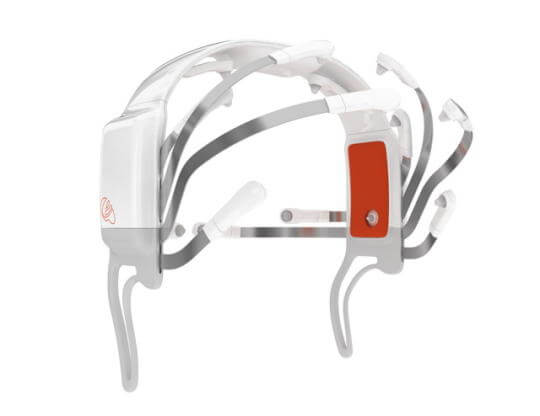
Credit: Emotiv
The tallest man-made structure in history is completed
With 160 floors, rising to a height of 818m (2,684ft), the Burj Dubai is by far the tallest structure ever built by man, shattering all previous records and setting a new benchmark for skyscrapers.
The decision to build the tower was based on the UAE government's aim to diversify from a trade-based economy to one that is service- and tourism-orientated. According to officials, it is necessary for projects like this to be built in the city to garner more international recognition, and hence more investment.
Construction of the tower and other projects is seen as controversial by some - with most of the site workers being low-paid immigrants, in some cases earning less than US$5 per day. A host of other residential complexes, hotels, office towers and luxury resorts are being built all over Dubai, making it one of the fastest growing cities in the world. In addition to the Burj Dubai, there are various other "mega projects" including the Palm Islands, a series of enormous artificial islands on which major commercial and residential infrastructure is being built.
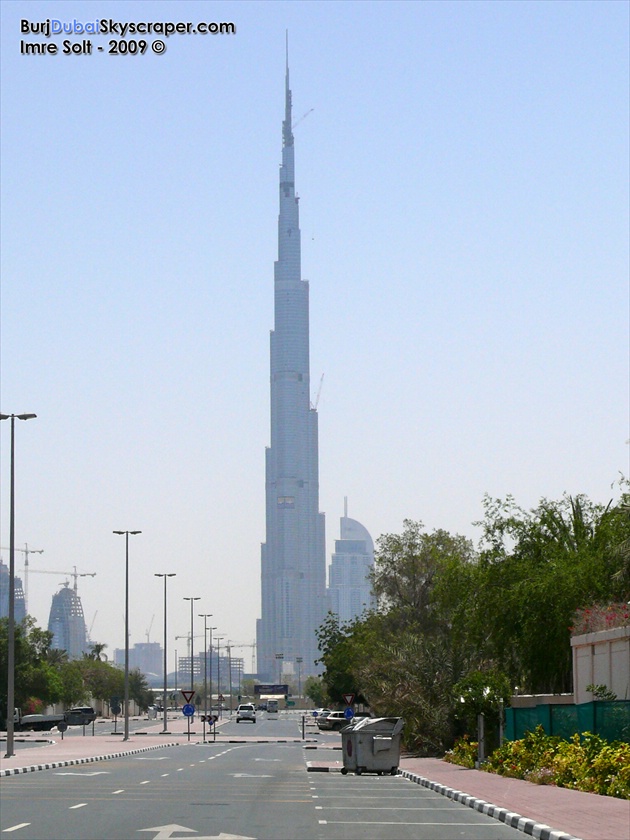
Kepler searches for Earth-like planets
The Kepler space probe is launched by NASA. It will be the first instrument capable of finding Earth-sized and smaller extrasolar planets, using Ball Aerospace's Kepler Space Observatory satellite. It will observe the brightness of about 100,000 stars over four years to detect periodical transits of a star by its planets.*
The Kepler space probe is launched by NASA. It will be the first instrument capable of finding Earth-sized and smaller extrasolar planets, using Ball Aerospace's Kepler Space Observatory satellite. It will observe the brightness of about 100,000 stars over four years to detect periodical transits of a star by its planets.*
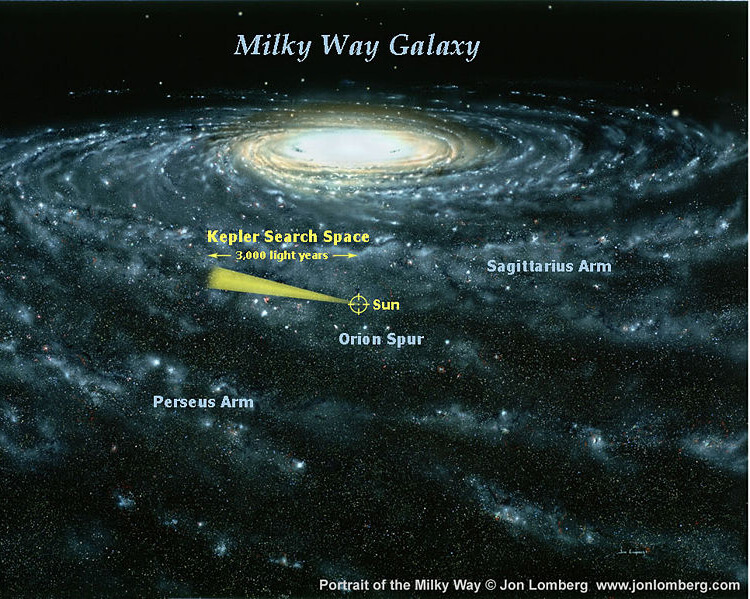
3D scanning enters the consumer market
This form of technology has been available for a while now - mainly for use in design visualization, CAD/prototyping, architecture, engineering, film production, healthcare, etc.
Other applications have included reconstructing fossils in paleontology, replicating ancient and priceless artifacts in archaeology, reconstructing bones and body parts in forensic pathology, and reconstructing heavily damaged evidence acquired from crime scene investigations.
Until now though, a significant barrier to 3D scanning has been the expense, bulkiness, and inconvenience of traditional equipment. This has made it difficult - if not impossible - for small businesses and hobbyists to have access to such technology.
From 2009 onwards, a number of companies are beginning to produce smaller, cheaper, more portable devices.
One such company is David Vision Systems, which has brought out a pocket-sized 3D laser scanner.* This can be used in combination with a simple webcam and background setup, to capture an endless variety of 3D objects (including the user's own face), for use in home videos, animations, computer games and other virtual environments.
In the next decade, 3D printing will reach the home market, allowing scanned objects to be physically reproduced.
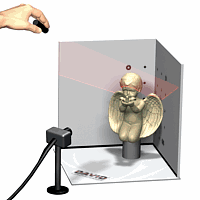
Credit: David Vision Systems
Africa's population reaches one billion
The continent’s population has doubled in the last 27 years. It will double again by the 2050s. The main reason for this explosive growth has been the lack of access to contraception and family planning centres.
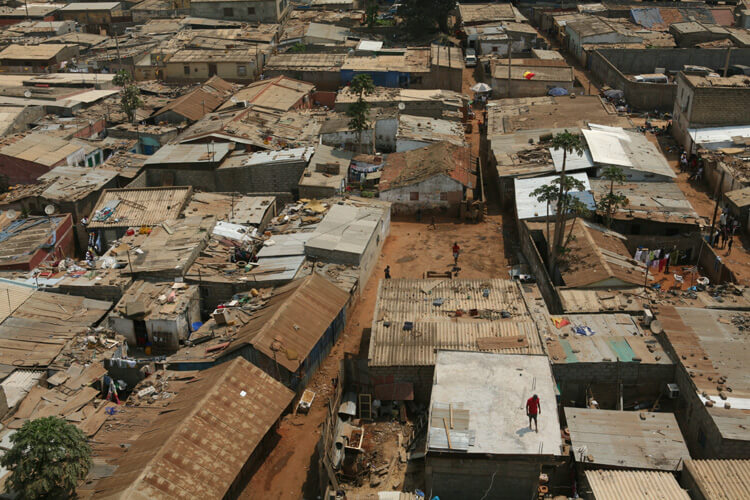
© Timurk | Dreamstime.com
2010-2019 Contents
2010-2037
At some point during this period, a devastating earthquake hits California*
Experts had been warning for years that it wasn't a matter of "if" - but "when".
Experts had been warning for years that it wasn't a matter of "if" - but "when".
The earthquake is centred on the Los Angeles basin, and is of sufficient magnitude to cause over $100 billion worth of damage. Many thousands of buildings are destroyed and there is widespread damage to roads, infrastructure, energy and water supplies. Hundreds of people are killed, while thousands more are injured.
This disaster comes as California is already going through a fiscal crisis - plunging the state into bankruptcy.
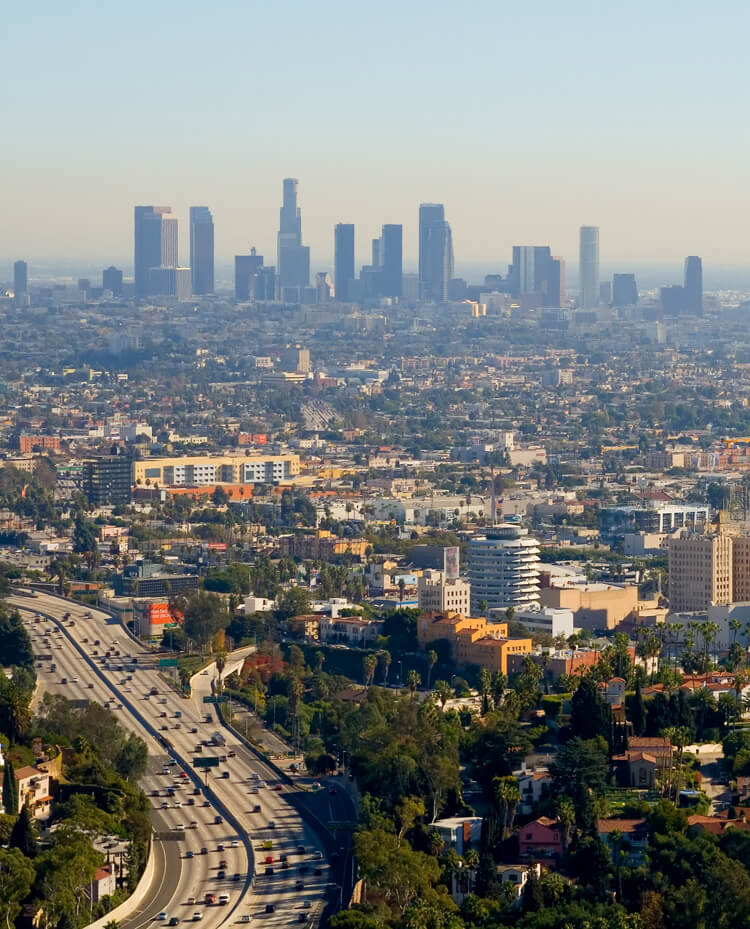 Credit: Andy Z
Credit: Andy Z2010
Scientists create artificial life
In a giant leap for biotechnology, a team of scientists led by DNA pioneer Dr Craig Venter have successfully created the first artificial lifeform. Mycoplasma laboratorium is an entirely new species of bacterium, with a man-made set of genetic code - originating on a computer - and placed on a synthetic chromosome inside an empty cell. Using its new "software", the cell can generate proteins and produce new cells.
This breakthrough raises profound questions about the essence of life, with concerns about the technology falling into the wrong hands, being used to make biological weapons, or by scientists to "play God". Instead of having a genetic relative that it evolved from, the parent of this cell is a computer.
However, the potential benefits of synthetic genomics will arguably outweigh the dangers. The ability to rewrite the software of life will revolutionise the field of biology - leading to radical new vaccines and medicines, clean water technology, advanced biofuels and much more.*
Iran is on the brink of revolution
For years, the Iranian people have suffered hardship and repression at the hands of a corrupt and tyrannical regime.
In June 2009, the disputed results of the presidential election were followed by mass protests around the country. These were bigger in scale than the unrest seen during the 1979 revolution.
Tensions boiled over, with government forces taking an increasingly fierce stance. This only intensified the violence, leading to full-scale riots and the shooting dead of demonstrators in the streets. Many hundreds were arrested. Footage of the protests - taken by phones and spread via the Internet - revealed to the world just how volatile the situation was becoming.*
President Ahmadinejad and his clerics attempted to blame the West, in order to stir up patriotic feeling among Iranian citizens, but this failed to have the desired effect.
In 2010, further protests combined with an even more ruthless crackdown by the government is pushing the nation towards a second revolution.*

Source: Lapost
China becomes the largest energy consumer in the world
China's development as an industrialised country means that this soaring energy demand will continue for some time to come.* Its economic growth is spurring a massive increase in car production (15,000 being added to its roads every day), not to mention buildings and infrastructure (which includes a new power plant every week).
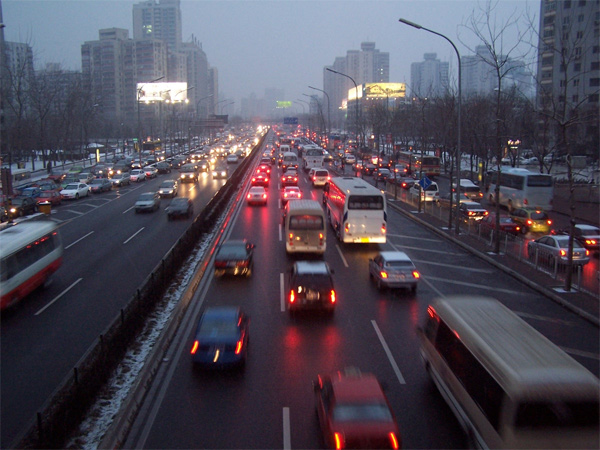
Credit: Kallgan
Localised renewable energy is becoming affordable
In many countries, the number of homes with solar power is growing exponentially - thanks to plummeting costs and increasing government incentives. This is particularly true in the USA, where the cost of a typical five-kilowatt rooftop system has dropped from $22,000 in 2007 to just $13,000 by the end of 2010, making it affordable to the middle classes.*
In many countries, the number of homes with solar power is growing exponentially - thanks to plummeting costs and increasing government incentives. This is particularly true in the USA, where the cost of a typical five-kilowatt rooftop system has dropped from $22,000 in 2007 to just $13,000 by the end of 2010, making it affordable to the middle classes.*

Credit: OxfordSquare
Apple debuts the iPad
The iPad is Apple's first tablet computer - a device category between a smartphone and laptop computer. Similar in functionality to a larger and more powerful iPhone or iPod touch, it runs a modified version of the same operating system (iPhone OS). Its included applications are also redesigned to take advantage of the larger screen with added functionality similar to their Mac OS X counterparts.
The iPad is Apple's first tablet computer - a device category between a smartphone and laptop computer. Similar in functionality to a larger and more powerful iPhone or iPod touch, it runs a modified version of the same operating system (iPhone OS). Its included applications are also redesigned to take advantage of the larger screen with added functionality similar to their Mac OS X counterparts.
The iPad has a 9.7-inch (25 cm) LED backlit multi-touch display with a pixel resolution of 1024x768, 16 to 64 gigabytes (GB) of flash memory, a 1-gigahertz (GHz) Apple A4 processor, Bluetooth 2.1, and a dock connector to sync with iTunes and connect wired accessories.
Augmented Reality (AR) is entering the mainstream
A growing number of cellphones, cameras and other digital devices now feature augmented reality. This technology displays 3D virtual elements on a real-world camera view. GPS units in combination with inertial references can map a user's precise location, then relay graphics from the web (or a web-based application such as Google Earth) and superimpose them on-screen.
A growing number of cellphones, cameras and other digital devices now feature augmented reality. This technology displays 3D virtual elements on a real-world camera view. GPS units in combination with inertial references can map a user's precise location, then relay graphics from the web (or a web-based application such as Google Earth) and superimpose them on-screen.
This concept has already been used in military training (to display imaginary aircraft and vehicles for example), but is now spreading to mainstream uses - such as travel, outdoor pursuits, communication, gaming and entertainment. Other applications include architecture and interior design (to show virtual objects in a room, for example, or to view buildings before they are constructed).
In the coming years, this technology will be available in sunglasses and even contact lenses.
The market for mobile AR services is expected to reach $732 million by 2014, with revenues derived from a combination of paid-for app downloads, subscription based services and advertising.
Macular degeneration is curable
Macular degeneration - the leading cause of blindness in people aged 65 and older - can now be treated with a miniature "telescope" implanted in the eye.* Consisting of two lenses within a small glass tube, this works like a telephoto zoom lens. It combines with the cornea to project a magnified image of whatever the wearer is looking at over a large part of the retina. Only the central portion of the sufferer's vision is damaged by the disease, so magnifying the image on the eye allows the retinal cells outside the macula to detect light, refocus it, and redirect the information to the brain.
Macular degeneration - the leading cause of blindness in people aged 65 and older - can now be treated with a miniature "telescope" implanted in the eye.* Consisting of two lenses within a small glass tube, this works like a telephoto zoom lens. It combines with the cornea to project a magnified image of whatever the wearer is looking at over a large part of the retina. Only the central portion of the sufferer's vision is damaged by the disease, so magnifying the image on the eye allows the retinal cells outside the macula to detect light, refocus it, and redirect the information to the brain.
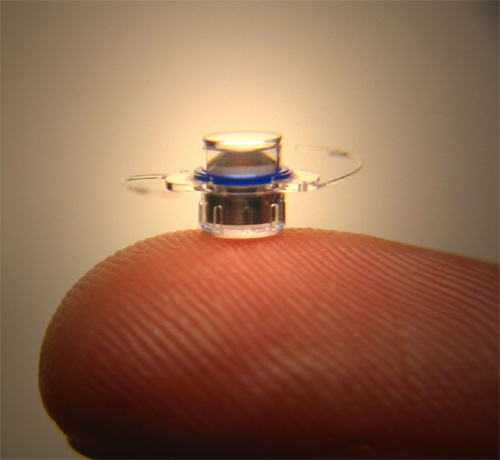
Credit: VisionCare
The first demonstration of solar-sail technology
IKAROS (Interplanetary Kite-craft Accelerated by Radiation Of the Sun) is a Japanese experimental spacecraft. Launched in 2010, it is the first spacecraft to successfully demonstrate solar-sail technology. When fully unfurled, its membrane has a diagonal span of 20m, but a thickness of just 0.0075mm. It is kept flat by a spinning motion. Tiny solar cells, dust counters and reflective steering devices are mounted as panels on the sail.
IKAROS (Interplanetary Kite-craft Accelerated by Radiation Of the Sun) is a Japanese experimental spacecraft. Launched in 2010, it is the first spacecraft to successfully demonstrate solar-sail technology. When fully unfurled, its membrane has a diagonal span of 20m, but a thickness of just 0.0075mm. It is kept flat by a spinning motion. Tiny solar cells, dust counters and reflective steering devices are mounted as panels on the sail.
The craft will spend six months traveling to Venus, then begin a three year journey to the Sun. A second, far larger version of IKAROS will be launched later in the decade, with a 50m (160 ft) sail. This will travel to Jupiter and the Trojan asteroids.
The advantage of solar sail compared with conventional rocket technology is that it gets low acceleration constantly, because photons keep hitting the membrane as long as the solar sail is in space. Although this acceleration is very small, the speed of the solar sail increases day by day. Therefore, solar sails are suitable for extremely long flights - including missions to the very edge of the solar system.
Also noteworthy is that the lack of propellant and ultra-lightweight structure greatly reduces both the manufacturing and launch costs.
Speech-to-speech translation is common in mobile phones
Large-vocabulary, continuous, speaker-independent speech recognition is now widespread on cellphones. It has become a popular (and free) iPhone app, as well as being available on Symbian phones and on the Nexus One, using Google's voice translation server.
Large-vocabulary, continuous, speaker-independent speech recognition is now widespread on cellphones. It has become a popular (and free) iPhone app, as well as being available on Symbian phones and on the Nexus One, using Google's voice translation server.
Major breakthrough in robotics
Robotic manipulation of non-rigid objects - where the configuration is unknown beforehand - is now possible. A robot developed at the University of California is capable of analysing towels "on the fly", rather than being given a fixed set of movements. It can analyse different shapes, colours and materials using a pair of high-resolution cameras, then fold and arrange them into neat piles.*
Robotic manipulation of non-rigid objects - where the configuration is unknown beforehand - is now possible. A robot developed at the University of California is capable of analysing towels "on the fly", rather than being given a fixed set of movements. It can analyse different shapes, colours and materials using a pair of high-resolution cameras, then fold and arrange them into neat piles.*
British forces withdraw from Afghanistan
The British Armed Forces have played a substantial role in the Afghanistan War. Their efforts in the country have been huge: second only to the U.S. in terms of troop numbers.
The British Armed Forces have played a substantial role in the Afghanistan War. Their efforts in the country have been huge: second only to the U.S. in terms of troop numbers.
Between 2001 and 2010, over 325 British forces personnel and MOD civilians were killed, exceeding the death toll of the Falklands War. Nearly 4,000 were injured.
From 2011 onwards, a phased withdrawal begins - and a transitioning of districts and provinces - with Afghan forces leading security operations by 2014 and the last remaining British troops gone by 2015.*
The Space Shuttle fleet is retired
This year sees the last of the Space Shuttle missions to the International Space Station and the subsequent retirement of the fleet. Two private companies - SpaceX and Orbital Sciences Corporation - will take over the remaining work, using cheaper disposable rockets. These will provide cargo delivery flights to the ISS up to 2016.
This year sees the last of the Space Shuttle missions to the International Space Station and the subsequent retirement of the fleet. Two private companies - SpaceX and Orbital Sciences Corporation - will take over the remaining work, using cheaper disposable rockets. These will provide cargo delivery flights to the ISS up to 2016.
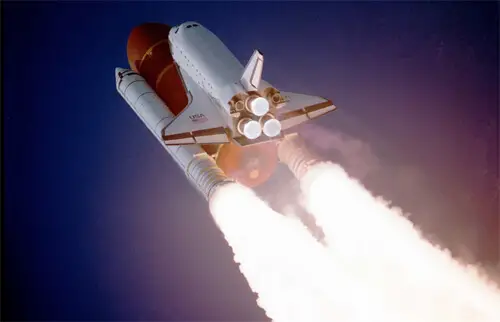
Credit: NASA
The web has a greater reach than television
In the previous decade, a rapid and irreversible shift towards web-based news outlets saw the decline of traditional print-based media. This growth has accelerated further - such that even television is now having less reach than the Internet when it comes to news reporting.
In the previous decade, a rapid and irreversible shift towards web-based news outlets saw the decline of traditional print-based media. This growth has accelerated further - such that even television is now having less reach than the Internet when it comes to news reporting.
Television and the Internet are in fact now converging together as one. Improving bandwidth and the continued growth of mobile technologies are driving much of this change.
Multi-touch surface computing is available to the mass market
These devices have been available in leisure and entertainment venues for a couple of years already - but are now cheap enough to be affordable to the mass market. The use of multi-touch technology is increasing substantially during this time. For example, sales of touch screen phones will rise from 200,000 in 2006 to over 21 million in 2012.
These devices have been available in leisure and entertainment venues for a couple of years already - but are now cheap enough to be affordable to the mass market. The use of multi-touch technology is increasing substantially during this time. For example, sales of touch screen phones will rise from 200,000 in 2006 to over 21 million in 2012.
The first open petaflop supercomputer comes online
"Blue Waters", the first open scientific research supercomputer to sustain one petaflop performance (one quadrillion calculations per second), comes online at Iowa State.* While the military supercomputer "Roadrunner" achieved this speed in 2008, its use was restricted to limited climate change problems before being placed in a classified environment to study the aging functionality of nuclear weapon stockpiles.* "Blue Waters", on the other hand, is open to university access and runs a range of science and engineering applications.
"Blue Waters", the first open scientific research supercomputer to sustain one petaflop performance (one quadrillion calculations per second), comes online at Iowa State.* While the military supercomputer "Roadrunner" achieved this speed in 2008, its use was restricted to limited climate change problems before being placed in a classified environment to study the aging functionality of nuclear weapon stockpiles.* "Blue Waters", on the other hand, is open to university access and runs a range of science and engineering applications.
Batteries that charge in seconds
A new manufacturing process for lithium-ion batteries has led to smaller, lighter batteries capable of being charged within seconds. Mobile phones, laptops and other digital devices benefit tremendously from this. Electric cars, too, can take advantage of this greatly improved technology, which now offers far greater convenience. Uptake of green vehicles therefore begins to increase significantly from this point onwards. Solar and wind power generation efficiency is also boosted, as the batteries can be used to store surplus energy.
A new manufacturing process for lithium-ion batteries has led to smaller, lighter batteries capable of being charged within seconds. Mobile phones, laptops and other digital devices benefit tremendously from this. Electric cars, too, can take advantage of this greatly improved technology, which now offers far greater convenience. Uptake of green vehicles therefore begins to increase significantly from this point onwards. Solar and wind power generation efficiency is also boosted, as the batteries can be used to store surplus energy.
22 nanometer chips are in mass production
The successor to 32nm, this latest generation of chips continue the trend of Moore's Law, each containing more than 2.9 billion transistors. They will, in turn, be succeeded by 16nm chips - close to the limits of miniaturisation for integrated circuits.
The successor to 32nm, this latest generation of chips continue the trend of Moore's Law, each containing more than 2.9 billion transistors. They will, in turn, be succeeded by 16nm chips - close to the limits of miniaturisation for integrated circuits.
USB 3.0 is available
Digital devices using this type of connection have a transfer speed of nearly 5 Gbit/s.
Digital devices using this type of connection have a transfer speed of nearly 5 Gbit/s.
This compares with 480 Mbit/s for USB 2.0 and 1.5 Mbit/s for USB 1.0.
Consumer-level robotics are booming
Thanks to falling costs, this decade sees the beginning of robots entering mainstream society. From 2008 to 2011, sales of professional and personal service robots more than double - from 5.5 million to over 11.5 million.*
Thanks to falling costs, this decade sees the beginning of robots entering mainstream society. From 2008 to 2011, sales of professional and personal service robots more than double - from 5.5 million to over 11.5 million.*
Initially popular in Japan, Korea and the Far East, they are now spreading to Western homes too. Some robots clean carpets or mow the lawn; others help busy professionals entertain children or pets; other machines feed and bathe the elderly and incapacitated.
Completion of the International Space Station
This is by far the largest man-made structure ever put into orbit - measuring 110m wide, with a mass of 345,000 kg and a living volume of 1000 cubic metres. The primary fields of research on board the station include human research, space medicine, life sciences, physical sciences, astronomy and meteorology. It will remain in operation until the early 2020s.
This is by far the largest man-made structure ever put into orbit - measuring 110m wide, with a mass of 345,000 kg and a living volume of 1000 cubic metres. The primary fields of research on board the station include human research, space medicine, life sciences, physical sciences, astronomy and meteorology. It will remain in operation until the early 2020s.

Credit: NASA
World's first commercial spaceport
A new chapter in space exploration begins with the opening of Spaceport America - the world's first purpose-built commercial spaceport. This offers sub-orbital spaceflights to the paying public.
A new chapter in space exploration begins with the opening of Spaceport America - the world's first purpose-built commercial spaceport. This offers sub-orbital spaceflights to the paying public.
Costing almost $225 million, the facility is built on 27 square miles (70 km2) of state-owned desert near Upham, an uninhabited part of New Mexico.
Among the various companies involved is Richard Branson's Virgin Galactic. Travelling at over 2,600mph (4,200km/h), the spacecraft carry up to six passengers at a time, to a height of approximately 68 miles (110km), using a single hybrid rocket motor. When maximum altitude is reached, the engines are switched off, and the passengers can experience up to six minutes of zero-G whilst looking down on the Earth.
The ships use a feathered re-entry system, feasible due to the low speed of re-entry, and are designed to re-enter the atmosphere at any angle, for maximum safety.
In the next decade, a new generation of ships will be developed capable of reaching much higher orbits. A few years after that, trips around the Moon will become possible.
Initially, the flights are very expensive (around $200,000 each). However, competition between the companies involved will greatly reduce costs, making them affordable to the majority of people later this century.
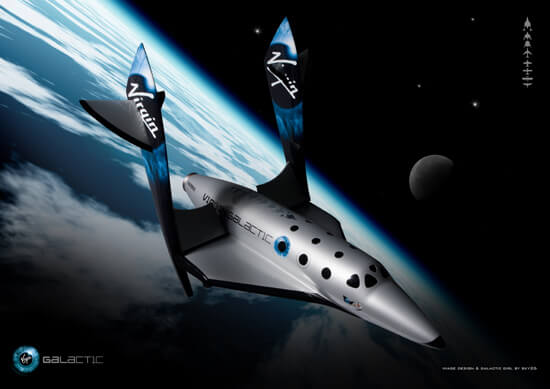
Above: SpaceShipTwo, in operation from 2011.
China's Three Gorges Dam is fully operational
Costing almost $30 billion, this is the largest power plant ever built. It has been in planning for nearly a century.
Costing almost $30 billion, this is the largest power plant ever built. It has been in planning for nearly a century.
The dam body was completed in 2006 and the originally planned components of the project were finished in 2008. However, six additional generators are installed underground in 2011 - taking its total electric generating capacity to over 22 gigawatts.
The project management team and the Chinese state regard the project as a historic engineering, social and economic success: a breakthrough in the design of large turbines and a significant move toward the reduction of greenhouse gas emissions. It will remove some 100 million tonnes of CO2 and 2 million tonnes of SO2 that would otherwise have been generated by coal-fired power stations.
However, the dam has also flooded archaeological and cultural sites, displaced 1.25 million people, and is causing significant ecological changes, including an increased risk of landslides. The building of the dam has been a controversial topic, both in China and abroad.
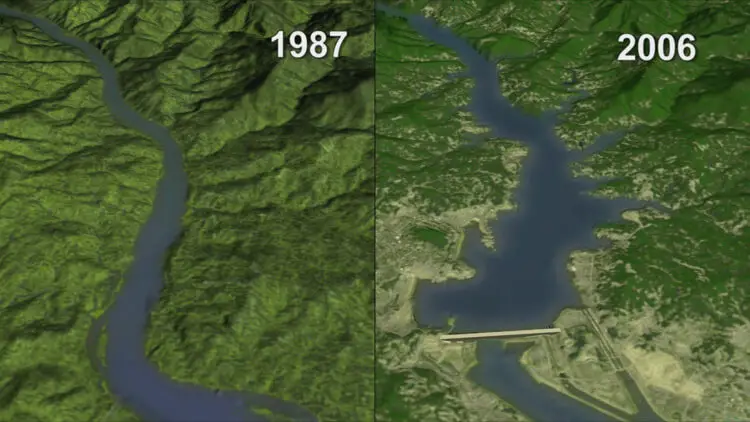
Credit: NASA SVS / USGS
Economic growth remains sluggish in many markets
Although the worst of the economic downturn has passed by now, genuine growth and recovery remains sluggish - especially in countries like the UK, where the fall in private sector debt ratios and rebuilding of savings ratios lasts well into the second half of this decade. Grinding slow growth - as low as 1-1.5% in Europe, the US and Japan - persists for several years, which still feels like a recession to most of the public, and does little to improve levels of employment. Vast interest payments for Government debt force a reduction in social and defence spending and leads to higher taxes, which also harms growth. As if this wasn't bad enough, the baby boomers are now entering their retirement years. The younger generations are faced with a huge burden of debt.
Although the worst of the economic downturn has passed by now, genuine growth and recovery remains sluggish - especially in countries like the UK, where the fall in private sector debt ratios and rebuilding of savings ratios lasts well into the second half of this decade. Grinding slow growth - as low as 1-1.5% in Europe, the US and Japan - persists for several years, which still feels like a recession to most of the public, and does little to improve levels of employment. Vast interest payments for Government debt force a reduction in social and defence spending and leads to higher taxes, which also harms growth. As if this wasn't bad enough, the baby boomers are now entering their retirement years. The younger generations are faced with a huge burden of debt.
With America nearly bankrupt, a clear shift in the balance of power is taking place from West to East. If the 19th century was Europe's century, and the 20th century was America's, then the 21st century looks like being Asia's - or at least, a combination of Asia's and America's.
London hosts the Olympic Games
London hosts the Olympic Games for the 3rd time in its history - the only city to have done so this many times. The two week event takes places amidst the largest security operation ever seen in peace-time Europe.
London hosts the Olympic Games for the 3rd time in its history - the only city to have done so this many times. The two week event takes places amidst the largest security operation ever seen in peace-time Europe.
Aside from a small number of arrests, it passes without incident. Despite this, the media tries to hype the threat of a terrorist attack as much as possible.
London is transformed this decade by a number of massive construction projects. In addition to the Olympic Games venues themselves, there is neighbouring Stratford City - an entire new business district, with over 13.5 million ft² of floor space. Then there is Crossrail - a £16 billion rail connection, linking Heathrow Airport with the central and eastern parts of the city.
Vast areas of land are being redeveloped all over the city - including Greenwich Peninsula, Elephant & Castle, Croydon, Paddington, Battersea and elsewhere. These mixed-use developments contain hundreds of thousands of new homes, shops and offices to provide for London's booming population.
Several new landmarks dominate the skyline including the 87-storey Shard of Glass. This becomes the tallest tower in Western Europe, and the first to break the 1000 ft barrier.
Windows 8 is released*
Windows 8 features a much faster startup, an App Store, integrated web applications, improved digital media support (including AVC HD and 3D video), faster resumes from low-power states, and support for both USB 3.0 and Bluetooth 3.0. It also includes facial recognition (due to the increasing use of webcams integrated into computers), which can log a user in automatically. There are major improvements for touch usage.
Windows 8 features a much faster startup, an App Store, integrated web applications, improved digital media support (including AVC HD and 3D video), faster resumes from low-power states, and support for both USB 3.0 and Bluetooth 3.0. It also includes facial recognition (due to the increasing use of webcams integrated into computers), which can log a user in automatically. There are major improvements for touch usage.
OLED screens are becoming widespread
Having reduced in cost, organic light-emitting diodes (OLEDs) are appearing in a wide variety of devices now - including mid-range smartphones, laptops and television displays. These use considerably less power than traditional LEDs and LCDs whilst allowing sharper, thinner, brighter displays.
Having reduced in cost, organic light-emitting diodes (OLEDs) are appearing in a wide variety of devices now - including mid-range smartphones, laptops and television displays. These use considerably less power than traditional LEDs and LCDs whilst allowing sharper, thinner, brighter displays.
They also eliminate the need for back lights. Sunlight that would normally "wash out" a display has no effect - the screens appear the same even in broad daylight, or when tilted at an angle.
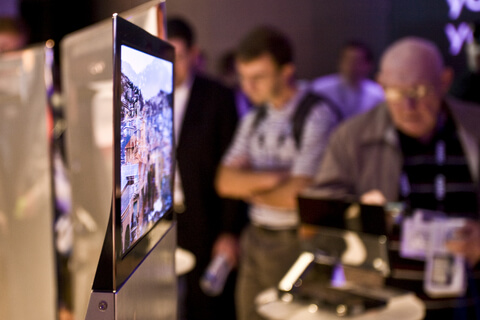 © Syrist | Dreamstime.com
© Syrist | Dreamstime.comBrain-computer interfaces allowing the paralysed to walk again
By this date, a prototype full-body exoskeleton has been devised which allows the paralysed to walk again - using their thoughts alone to control it.*
This is achieved using a neuroprosthetic device with a highly advanced brain-computer interface (BCI) at its core, driven by neurochips implanted in the patient's skull. These monitor electrical brain activity and adjust the movement of the limbs accordingly.
The project has been developed by an international team of neurophysiologists, computer scientists, engineers, roboticists, neurologists and neurosurgeons at laboratories around the world. Fresh hope is now being offered to millions of people affected by paralysis.*
A cure for baldness
Until now, more than half of men and a third of women have been affected by hair loss at some point in their lives. The $1bn hair loss industry has only provided treatments to save what they have left, or cover what they have lost - not to actually grow new hair.
Thanks to advances in stem cell research - along with a new compound - treatments are now available that can actually regenerate hair follicles.*
World's first 1-Gigawatt offshore wind farm
Construction of the largest ever offshore wind farm is underway off the southeastern coast of England. Known as the "London Array", it will supply enough power for 750,000 homes - a quarter of all those in London.*
With a total of 341 turbines, it will reduce carbon emissions by nearly 2 million tonnes every year: a significant milestone in the government's plan to cut emissions by 80% by 2050.
This project marks the beginning of a major expansion of offshore wind power in Britain. Numerous other large-scale wind farms will be constructed in the coming decades - greatly reducing the country's dependence on foreign energy and creating thousands of new jobs in the green industry.
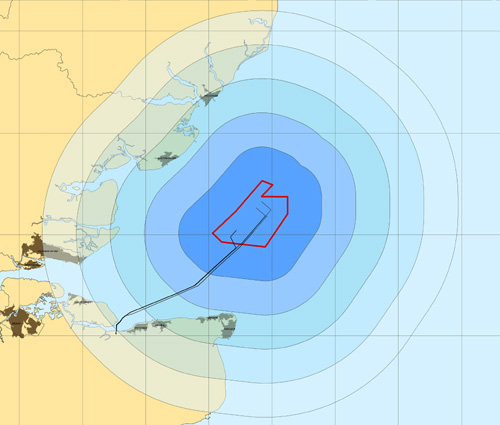
Mars Science Laboratory explores the Red Planet
This is by far the largest and most powerful rover ever sent to Mars. Among its many instruments is the first ever video camera taken to another planet, as well as the first 3D camera.
This is by far the largest and most powerful rover ever sent to Mars. Among its many instruments is the first ever video camera taken to another planet, as well as the first 3D camera.
The mission has four goals:
- to determine if life ever arose on Mars
- to characterize the climate of Mars
- to characterize the geology of Mars
- to prepare for human exploration.
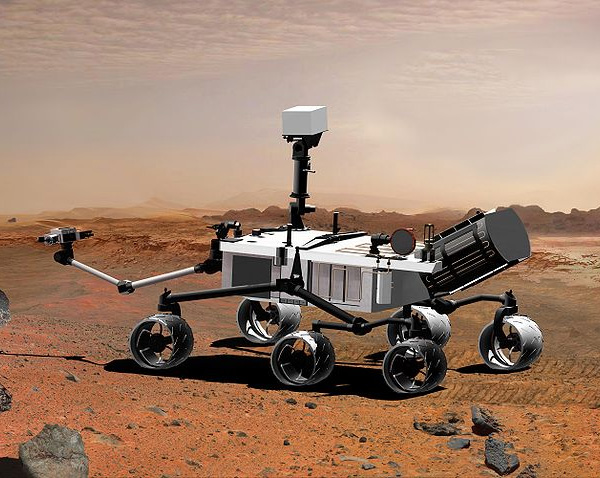
Credit: NASA / JPL
Mass hysteria grips the world as the Mayan calendar reaches the end of its current cycle
The Mayans were an ancient people that lived thousands of years ago, in what is now Central America. They are noted for having the only fully-developed written language of the pre-Columbian Americas – as well as its art, architecture, mathematical and astronomical systems. As part of their culture, the Mayans used a Long Count calendar. This identified a particular date by counting the number of days from a starting date, which is calculated to have been 11th August 3114 BCE in the Gregorian calendar. A b'ak'tun was the longest unit of measurement in this system and was equivalent to 144,000 days, or 394 years. When correlated with the modern Western calendar it can be shown that the 13th b'ak'tun ends on 21st December, 2012.
The Mayans were an ancient people that lived thousands of years ago, in what is now Central America. They are noted for having the only fully-developed written language of the pre-Columbian Americas – as well as its art, architecture, mathematical and astronomical systems. As part of their culture, the Mayans used a Long Count calendar. This identified a particular date by counting the number of days from a starting date, which is calculated to have been 11th August 3114 BCE in the Gregorian calendar. A b'ak'tun was the longest unit of measurement in this system and was equivalent to 144,000 days, or 394 years. When correlated with the modern Western calendar it can be shown that the 13th b'ak'tun ends on 21st December, 2012.
This date has generated enormous publicity, with many predicting the end of the world, or a transformative event of some kind. This is despite no record of the Mayans themselves believing that any such event would occur.
The media plays a huge role here, whipping up a frenzy of speculation. Though mostly tongue-in-cheek, it is enough to influence many gullible and/or vulnerable people. Various threats are debated: from a polar reversal of the Earth, to a global computer crash, runaway climate disaster or other cataclysm. On some talk shows, even the second coming of Christ is predicted. There are numerous hoaxes on the Internet and elsewhere, creating further confusion and paranoia during this time. Some people engage in panic buying of food, or build shutters and barricades around their homes. Others spend their entire life savings to enjoy one "last day" before the end of the world.
A small minority of people become involved in more serious activity. For these troubled individuals, it becomes almost a self-fulfilling prophecy. In their misguided belief that the world will actually end, they resort to extreme or illegal behaviour, putting themselves and others at risk. Consequently, there is a brief spike in the number of murders, rapes, accidents and suicides worldwide.
Of course, for the vast majority of rational people, the date passes without incident - and life continues as normal on 22nd December.*
Iran carries out its first nuclear test
After years of diplomatic stall tactics, Iran confirms its place in the "nuclear club" of countries.
After years of diplomatic stall tactics, Iran confirms its place in the "nuclear club" of countries.
Technology covertly supplied by Russia has allowed it to fulfill its nuclear ambitions. Faced with such a grave potential threat, Israel's economy goes into freefall.
Although the Iranian government repeatedly states its peaceful intentions, the region as a whole now enters a period of instability the likes of which has never been seen before. This nuclear test is viewed in the West as the most significant world event since 9/11.
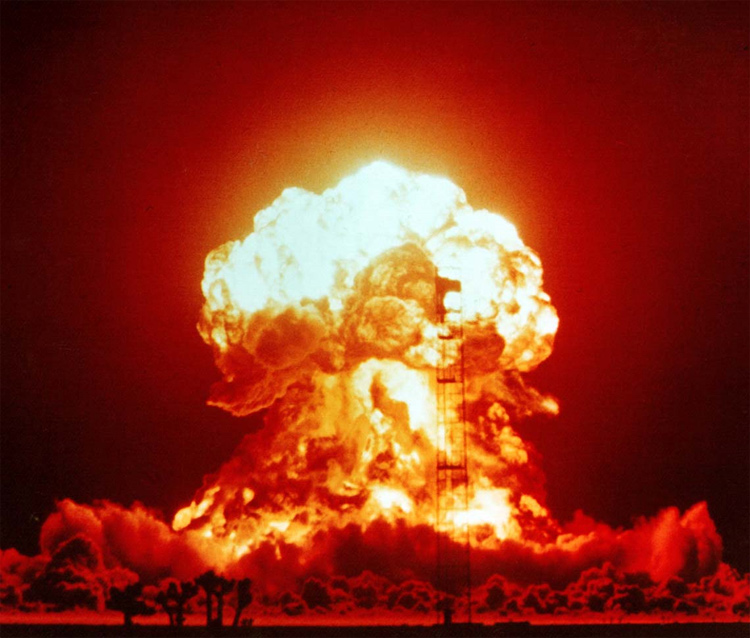
Solar flares are disrupting the Earth's magnetosphere
The Sun reaches its solar maximum this year - the period of greatest activity in its 11-year solar cycle. Because of the unusually low level of activity in recent years, this has caused a sudden build up of energy, with "solar storms" hitting the Earth's magnetosphere. These are powerful enough to disrupt electronic systems on the ground.
The Sun reaches its solar maximum this year - the period of greatest activity in its 11-year solar cycle. Because of the unusually low level of activity in recent years, this has caused a sudden build up of energy, with "solar storms" hitting the Earth's magnetosphere. These are powerful enough to disrupt electronic systems on the ground.
Satellites, air travel, car navigations, the banking system, hospital equipment, computers and many other machines are affected during these storms. There are widespread blackouts.*
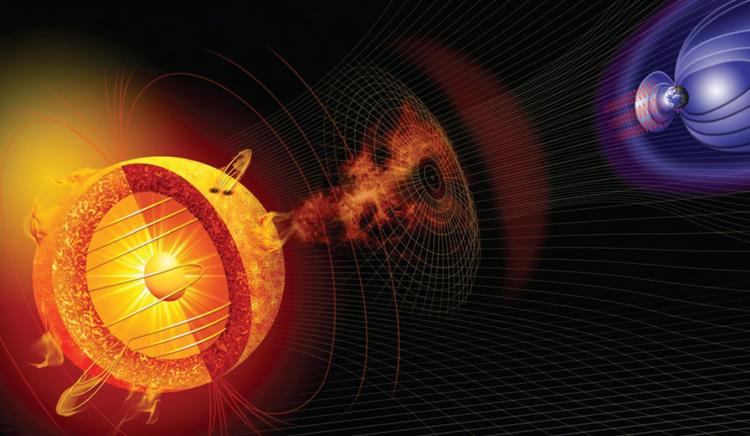
Credit: NASA
3D technologies are widespread
3D technology is now widespread across a range of communication and entertainment platforms.* It has become a mainstream element of cinema, TV, Internet, video games and even mobile. This technology provides users with a whole new level of immersion, interaction and realism.
3D technology is now widespread across a range of communication and entertainment platforms.* It has become a mainstream element of cinema, TV, Internet, video games and even mobile. This technology provides users with a whole new level of immersion, interaction and realism.
James Cameron's Avatar, released in 2009, was a major breakthrough in terms of developing this format and raising awareness of its potential.
In 2010, new 3D TV channels are introduced and these can even be viewed without 3D glasses. This effect is achieved via multiple projectors behind the screen, combined with a lens array that creates a parallax effect from any direction. Among the many TV events during this time is the first ever FIFA World Cup to be screened in 3D.
Compatibility is soon incorporated into a range of consumer products including Blu-ray recorders, games consoles and personal computers.
By 2013, the technology has become widespread in homes in developed countries.*
The first products to use memristor technology are becoming available
First theorised in 1971, memristors were described as the "missing link" in electric circuitry. As a fourth fundamental circuit element, they would have properties unachievable in the other elements (resistors, inductors, capacitors).
First theorised in 1971, memristors were described as the "missing link" in electric circuitry. As a fourth fundamental circuit element, they would have properties unachievable in the other elements (resistors, inductors, capacitors).
After 40 years of research and development, they are now appearing in consumer products.* Unlike conventional computer memory - which stores data with electronic on and off switches - memristors work at the atomic level. These nanoscale devices have a variable resistance, able to "remember" their resistance when power is off.
This makes them phenomenally faster, denser and more energy efficient than previous electronics. Mobile phones and countless other gadgets can now benefit from a vastly improved battery life, speed and memory capacity. Desktop computers and laptops, meanwhile, can be booted-up almost instantly. Because of their tiny size, memristors can also be used as microscopic sensors, gathering a wide range of data from their surroundings.*
Another benefit of memristors is their reconfigurability. They can be similar in behaviour to the synapses in brains. This offers the potential to create electronics more capable of adapting to different situations and exhibiting a form of learning, which may advance efforts in artificial intelligence. Further into the future, it may be possible to build human brain-like computers.*
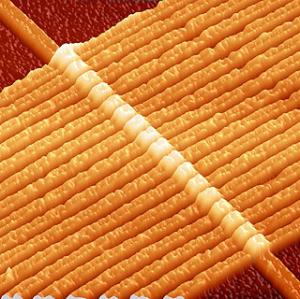
Credit: HP Labs
Direct high-speed rail from London to Frankfurt and Amsterdam
Two of Europe's biggest financial centres - London and Frankfurt - are now connected by a high-speed rail link. Trains running at 320 kph (200 mph) provide a journey time of under five hours. Combined with cheaper fares and better web access, this offers a genuine alternative to air travel. The service also runs to Brussels, Cologne, Rotterdam and Amsterdam.*
Two of Europe's biggest financial centres - London and Frankfurt - are now connected by a high-speed rail link. Trains running at 320 kph (200 mph) provide a journey time of under five hours. Combined with cheaper fares and better web access, this offers a genuine alternative to air travel. The service also runs to Brussels, Cologne, Rotterdam and Amsterdam.*
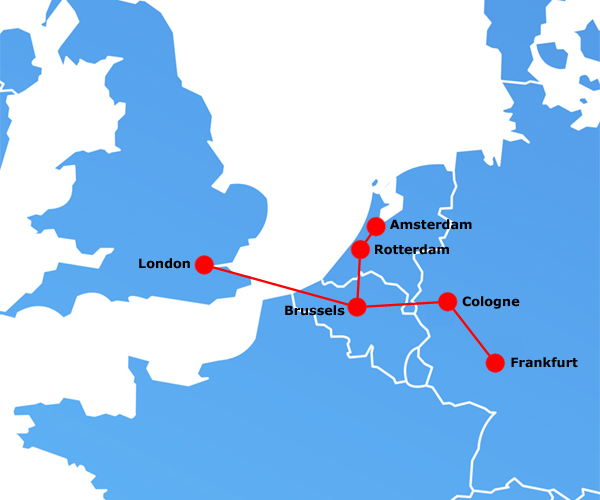 © Will Fox
© Will FoxIndia launches its second lunar exploration mission
Chandrayaan-2 becomes the second lunar probe to be sent by India's space agency. It includes an orbiter as well as two rovers: one lander/rover built by Russia, and a second smaller rover built by India. The wheeled rovers will move on the surface, picking up soil or rock samples for on-site chemical analysis. The data will be sent to Earth through the Chandrayaan-2 orbiter. The team is headed by Dr. Mylswamy Annadurai, who was behind the success of the previous mission (Chandrayaan-1).
Chandrayaan-2 becomes the second lunar probe to be sent by India's space agency. It includes an orbiter as well as two rovers: one lander/rover built by Russia, and a second smaller rover built by India. The wheeled rovers will move on the surface, picking up soil or rock samples for on-site chemical analysis. The data will be sent to Earth through the Chandrayaan-2 orbiter. The team is headed by Dr. Mylswamy Annadurai, who was behind the success of the previous mission (Chandrayaan-1).
The James Webb telescope is launched
The long-awaited successor to the Hubble Space Telescope is launched. Its primary mirror has a collecting area six times larger than Hubble. The telescope is situated in an L2 orbit approximately 1.5 million kilometres from Earth.
The long-awaited successor to the Hubble Space Telescope is launched. Its primary mirror has a collecting area six times larger than Hubble. The telescope is situated in an L2 orbit approximately 1.5 million kilometres from Earth.
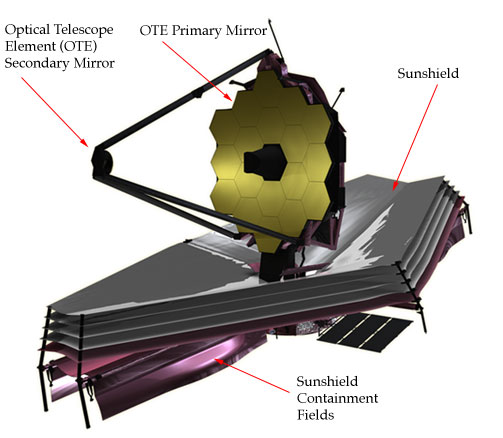
Credit: NASA
Personalised DNA sequencing for less than $100
DNA sequencing technology is now so fast and cheap that an entire human genome can be read in a matter of hours for less than $100, making it accessible to everyone. This has been made possible by a revolutionary new device called a nanofluidic chip.*
DNA sequencing technology is now so fast and cheap that an entire human genome can be read in a matter of hours for less than $100, making it accessible to everyone. This has been made possible by a revolutionary new device called a nanofluidic chip.*
Medical treatments can now be delivered on a highly personalised level, uniquely tailored to a patient's genetic code. For example, a doctor can biopsy a cancer patient's tumor, sequence all of its DNA, and use that information to determine a prognosis and prescribe treatment - all for less than the cost of a chest X-ray. In the case of lung cancer, the doctor can determine the exact genetic changes in the tumor cells and order the chemotherapy best suited to that variant. Meanwhile, parents of newborns now have the option of determining if their baby is susceptible to conditions like diabetes, and then modifying the baby's diet and medication from day one to reduce the chance of it ever manifesting.
Internet "lifecasting" enters the mainstream
Digital devices are continuing to shrink in size, becoming ever more compact and miniaturised.* On-person webcams measuring less than a centimetre across are now being embedded in clothing, hats, spectacle frames and other discrete locations. This has led to the emergence of a new form of Internet blogging known as "lifecasting".
Digital devices are continuing to shrink in size, becoming ever more compact and miniaturised.* On-person webcams measuring less than a centimetre across are now being embedded in clothing, hats, spectacle frames and other discrete locations. This has led to the emergence of a new form of Internet blogging known as "lifecasting".
Rather than text updates, every moment of a person's daily experiences can now be captured on video, in real time. This is available on social networking sites, so that communities of users can "subscribe" to the lives of individuals they wish to follow. This includes a number of famous celebrities.
16 nanometer chips are in mass production
The successor to 22nm, this latest generation of chips continues the trend of Moore's Law. Each contains more than 7.5 billion transistors. They will, in turn, be succeeded by 11nm chips.
The successor to 22nm, this latest generation of chips continues the trend of Moore's Law. Each contains more than 7.5 billion transistors. They will, in turn, be succeeded by 11nm chips.
Terabyte SD cards are available
SD cards and other memory devices continue to grow exponentially this decade, with storage capacities doubling roughly every year. A terabyte is equal to 1000 gigabytes.
SD cards and other memory devices continue to grow exponentially this decade, with storage capacities doubling roughly every year. A terabyte is equal to 1000 gigabytes.
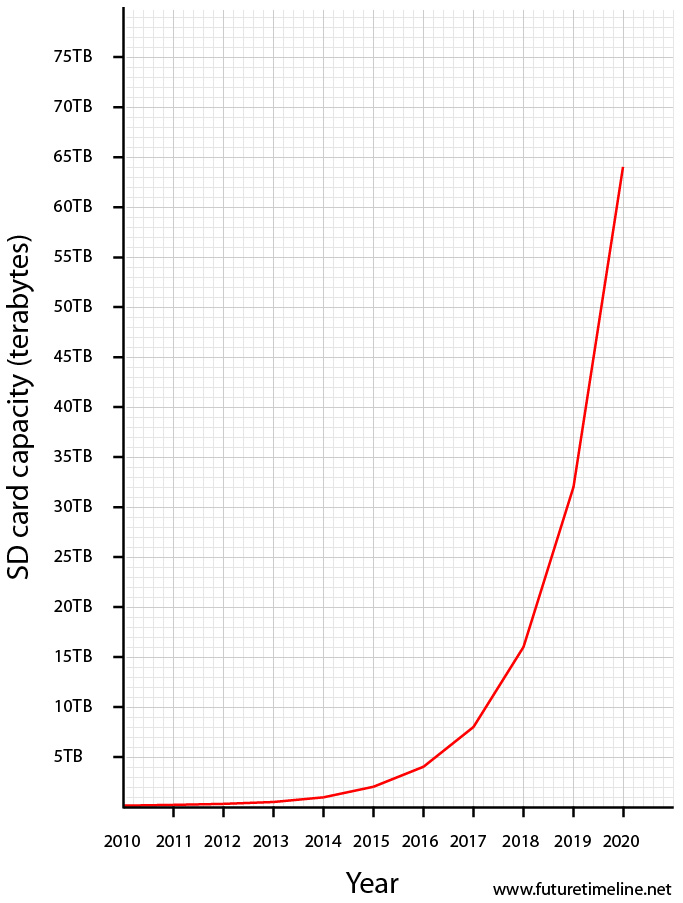
Robotic pack mules are entering military service*
Dynamically stable, quadruped robots are being deployed in military support roles now. These are accompanying soldiers in terrain too difficult for conventional vehicles. They use four legs for movement, allowing them to move across surfaces that would defeat wheels or treads. They are capable of running at 4 miles per hour (6.4 km/h), while carrying loads up to 340 pounds (150 kg) and climbing slopes with 35 degree inclines.*
Dynamically stable, quadruped robots are being deployed in military support roles now. These are accompanying soldiers in terrain too difficult for conventional vehicles. They use four legs for movement, allowing them to move across surfaces that would defeat wheels or treads. They are capable of running at 4 miles per hour (6.4 km/h), while carrying loads up to 340 pounds (150 kg) and climbing slopes with 35 degree inclines.*
Locomotion, navigation and balance are controlled by an onboard computer that receives input from the robot's many sensors, which include a stereo vision system, laser gyroscopes, joint position and ground contact monitors.
These machines greatly reduce the burden of equipment for soldiers.
MAVEN probe arrives at Mars
NASA's MAVEN probe arrives at Mars, to study its atmosphere and climate history.*
NASA's MAVEN probe arrives at Mars, to study its atmosphere and climate history.*
Its four primary objectives are:
1. To determine the role that loss of volatiles from the Mars atmosphere to space has played through time.
2. To determine the current state of the upper atmosphere, ionosphere, and interactions with the solar wind.
3. To determine the current rates of escape of neutral gases and ions to space and the processes controlling them.
4. To determine the ratios of stable isotopes in the Martian atmosphere.
2. To determine the current state of the upper atmosphere, ionosphere, and interactions with the solar wind.
3. To determine the current rates of escape of neutral gases and ions to space and the processes controlling them.
4. To determine the ratios of stable isotopes in the Martian atmosphere.
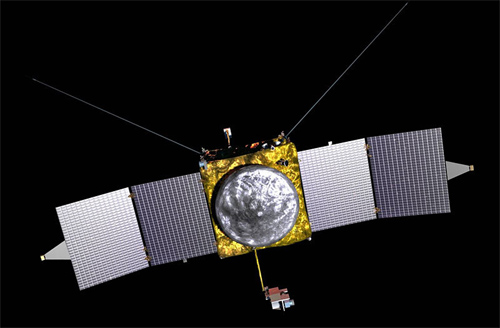
Credit: NASA
Rosetta deploys its lander on comet 67P/Churyumov-Gerasimenko
Rosetta is a probe launched in 2004 by the European Space Agency and intended to study the comet 67P/Churyumov-Gerasimenko.
Rosetta is a probe launched in 2004 by the European Space Agency and intended to study the comet 67P/Churyumov-Gerasimenko.
The craft examines two asteroids - 2867 Steins and 21 Lutetia - before rendezvousing with the comet in 2014.
The spacecraft then places a lander on it. This deploys harpoons to anchor itself to the surface, and has legs designed to dampen its initial impact. During its week-long mission, the lander uses a variety of scientific instruments to examine the surface and internal composition.*
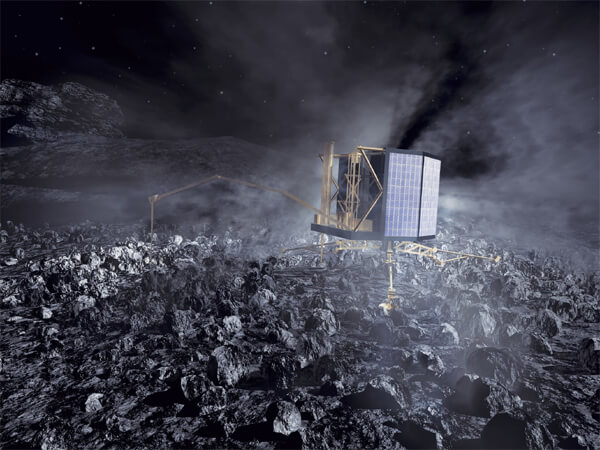
Credit: NASA
Most phone calls are made via the Internet now
By now, the majority of homes and workplaces use Voice over Internet Protocol (VoIP) systems, such as Skype.*These connections are made via the Internet, rather than traditional phone lines.
Undoubtedly the biggest advantage of VoIP is the cost. PC-to-PC phone calls can be made anywhere in the world, at any time, for free. PC-to-phone connections usually charge a fee, but are generally much cheaper than standard phone services with conventional handsets.
Another advantage is the portability. Phone calls can be made and received from any PC - provided there is a broadband connection - simply by signing into a personal VoIP account.
Phone-to-phone VoIP is also portable. When you sign up with a VoIP servicer provider, the Internet phone or adaptor that is used with that service is assigned a unique number. This 'phone number' remains valid even if your VoIP service provider is located in England and you are connected to the Internet in Australia. An Internet phone is small and light enough to take with you anywhere. It can simply be plugged into any broadband connection, anywhere in the world, and used to make and receive calls, just as though you were in your own home or office.
There are several other features that make VoIP attractive. Higher fidelity (wideband) audio, video, call forwarding, call waiting, voicemail, caller ID and multiple-way calling at no extra charge. Digital data such as pictures, documents and other files can also be transmitted during calls.
Increased automation in retail environments
Checkout operators of retail chains are increasingly being replaced with automated systems, in order to save costs and improve efficiency. The customer simply scans the items themselves, and is prompted via on-screen instructions and audio to insert their method of payment. In 2009, around 100,000 self-checkout units were installed worldwide. By 2014, this number has more than quadrupled.*
Checkout operators of retail chains are increasingly being replaced with automated systems, in order to save costs and improve efficiency. The customer simply scans the items themselves, and is prompted via on-screen instructions and audio to insert their method of payment. In 2009, around 100,000 self-checkout units were installed worldwide. By 2014, this number has more than quadrupled.*
Brazil hosts the FIFA World Cup
This is the second time the country has hosted the competition.
This is the second time the country has hosted the competition.
2015-2019
Virtual Reality makes a comeback
Exponential growth in computer power is enabling the creation of exceedingly lifelike graphics and 3D environments. At the same time, faster broadband is opening up new frontiers in cyberspace, allowing the development of Web 3.0 - the next generation of Internet. Combined with developments in on-person hardware, this is leading to a rebirth of virtual reality. Having been something of a gimmick in the 1990s, it is now becoming a serious tool for business, leisure, education and training.
Exponential growth in computer power is enabling the creation of exceedingly lifelike graphics and 3D environments. At the same time, faster broadband is opening up new frontiers in cyberspace, allowing the development of Web 3.0 - the next generation of Internet. Combined with developments in on-person hardware, this is leading to a rebirth of virtual reality. Having been something of a gimmick in the 1990s, it is now becoming a serious tool for business, leisure, education and training.
Much of the content in these environments is user-generated, with online communities for sharing and exchanging virtual objects, buildings, avatars, etc.
For the wealthy, some of the hardware options now available include pod-like structures which are fully enclosing and respond to a variety of gesture commands.*
Tigers are going extinct
The 20th century saw tiger numbers plunge by over 95% worldwide. By the 1970s, they had disappeared from Central Asia, by the 1980s from Java and by the 1990s from South China. Three of the nine subspecies – Bali, Javan and Caspian tigers – were extinct by the 1980s.
Tiger numbers continued to decline into the 21st century. By 2010, it was estimated that India – once a stronghold for these animals – had less than 800 left in the wild, while some of the rarer subspecies had only 30 individuals.Poaching remained a serious problem, with tiger skins fetching up to $20,000 in China. Habitat loss was accelerating, with farmers encroaching into tigers' territory and forests being cleared to make way for palm oil plantations.
Summits were held between conservation groups and the few countries where tigers remained. These proved to be ineffectual, however, and were more about politicians wanting to be seen doing something, rather than tackling the issues on the ground.
Within a few years, there were no longer any viable breeding populations of tigers, setting them on the path to irreversible decline. Once the most recognisable and popular of the world's megafauna, this animal would soon go the way of the dodo, with only small numbers remaining in zoos and private collections.*
2015
Worldwide PC use reaches 2 billion
PC adoption in emerging markets has been growing at a phenomenal pace. There were a billion PCs in use in 2008, and this number doubles by 2015. In other words, it took nearly 30 years to reach the one billion mark, but only seven to grow from 1 billion to 2 billion.
Lifesaver water filters are spreading to many developing countries
Third World countries are now benefitting from a revolutionary portable device. First revealed in 2007, it has become widespread by now.
Third World countries are now benefitting from a revolutionary portable device. First revealed in 2007, it has become widespread by now.
The "Lifesaver Bottle" filters water-borne pathogens, using holes just 15 nanometers across, to prevent even the smallest viruses (25 nanometers across) getting through, and eliminating the need for chemicals to treat the water. The Lifesaver Bottle is fitted with a 4000UF replaceable purification cartridge that removes bacteria, viruses, cysts, parasites, fungi, and all other microbiological water-borne pathogens.*
It also comes with an activated carbon filter, made of a high specification activated carbon block. This reduces a broad spectrum of chemical residues including: pesticides, endocrine disrupting compounds, medical residues and heavy metals such as lead and copper. The carbon filter also eliminates bad tastes and odors from contaminates such as chlorine and sulphur. It is designed to last for approximately 250 litres.*
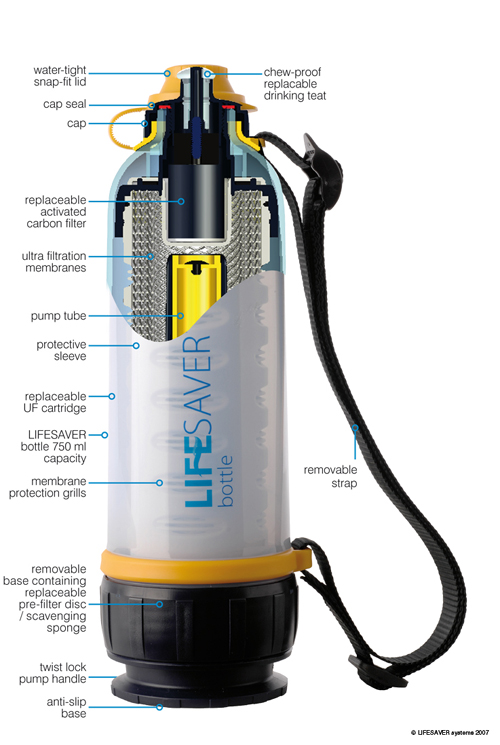
The first climate change refugees
As a direct result of sea level rises, the inhabitants of the Carteret Islands in Papua New Guinea have been forced to abandon their homelands.* Crops, trees and wells have been contaminated by seawater, while most of the buildings on the islands have been destroyed. Attempts to build sea wall defences were unsuccessful – these were simply washed away.*
As a direct result of sea level rises, the inhabitants of the Carteret Islands in Papua New Guinea have been forced to abandon their homelands.* Crops, trees and wells have been contaminated by seawater, while most of the buildings on the islands have been destroyed. Attempts to build sea wall defences were unsuccessful – these were simply washed away.*
The melting of polar ice sheets and glaciers, together with thermal expansion, could raise the level of Earth's oceans nearly 2m by 2100 - potentially displacing hundreds of millions of people.
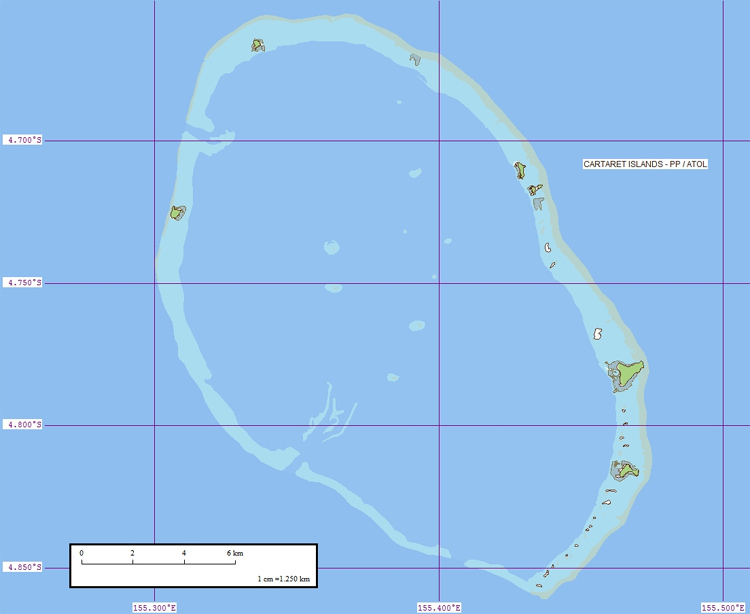
Credit: EVS-Islands
3D printing enters the consumer market
Until recently, this technology was extremely expensive - upwards of $15,000 per machine - and limited to use in industrial prototyping, product design, medical modeling and architectural models.* However, plummeting costs are now making it affordable to consumers.**
Until recently, this technology was extremely expensive - upwards of $15,000 per machine - and limited to use in industrial prototyping, product design, medical modeling and architectural models.* However, plummeting costs are now making it affordable to consumers.**
Rather than using ink on paper, these machines can actually "print" 3D objects. This is achieved by melting nylon powder and then shaping it based on computer instructions.
Countless different items can be produced – from jewellery and decorative giftware, to children's toys, kitchenware, replacement plugs, hooks, pipes, fittings, flooring and other household essentials.
Users can download new items and configurations from the Web.* Artists and hobbyists can even create their own, using these printers in combination with 3D scanners and modeling software.
In addition to falling costs, another reason that home 3D printing has taken off rapidly is that there is very little manufacturing being done in America and various other countries anymore. As a result, there is little or no pressure by manufacturing special interests against it.
In the decades ahead, this technology will evolve into nanofabricators, capable of reproducing items with atomic precision within minutes. It will ultimately lead to matter replicators with near-instantaneous production of virtually any object – including foodstuffs.
New Horizons probe arrives at Pluto
The probe was launched in 2006 and has travelled more than 4 billion kilometres through space. It returns the first close range, high resolution pictures of the icy world - along with its three moons - before passing through the Kuiper Belt. It will leave the solar system entirely in 2029.
The probe was launched in 2006 and has travelled more than 4 billion kilometres through space. It returns the first close range, high resolution pictures of the icy world - along with its three moons - before passing through the Kuiper Belt. It will leave the solar system entirely in 2029.
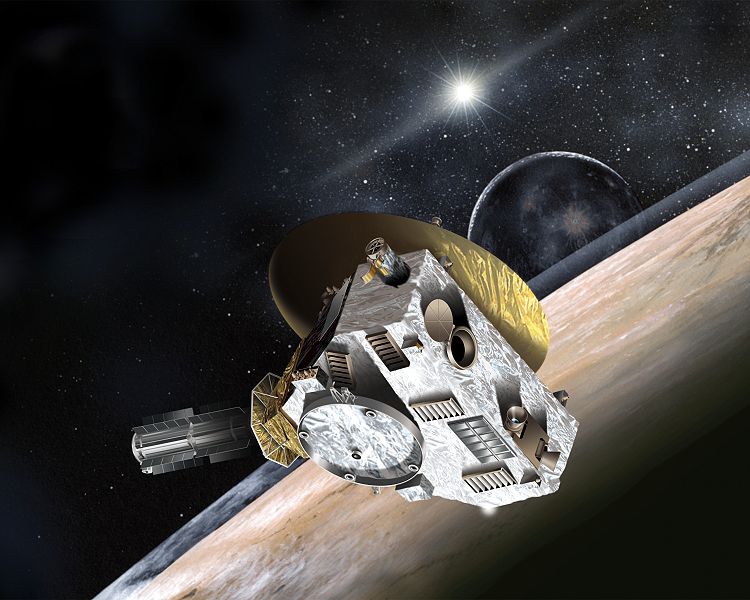
Credit: NASA
Dawn probe arrives at Ceres
Dawn is a robotic spacecraft sent by NASA on a mission to the asteroid belt. It reaches Vesta in 2011, before rendezvousing with the dwarf planet, Ceres, in 2015.
Dawn is a robotic spacecraft sent by NASA on a mission to the asteroid belt. It reaches Vesta in 2011, before rendezvousing with the dwarf planet, Ceres, in 2015.
Ceres and Vesta are the two most massive members of the asteroid belt: 950 and 530 km in diameter, respectively.Dawn is the first probe to study and photograph them at close range. Both bodies formed very early in the history of the Solar System, thereby retaining a record of events and processes from the time of the formation of the terrestrial planets.
Dawn is also innovative - it becomes the first spacecraft to enter into orbit around a celestial body, study it, then re-embark under powered flight to a second target. All previous multi-target missions (such as the Voyager program) have involved rapid planetary flybys.*

Credit: NASA
Voyager I enters the heliopause
Voyager I remains the most distant human-made object, traveling away from the Earth at a speed greater than any other space probe.
Voyager I remains the most distant human-made object, traveling away from the Earth at a speed greater than any other space probe.
Launched in 1977, its original mission was to visit Jupiter and Saturn. It became the first probe to provide detailed images of these planets and their moons.
In 2003, it entered the "termination shock" - the point where solar wind particles slow down to subsonic speeds due to interactions with the local interstellar medium.
By 2015, it has travelled so far that it has begun entering a region known as the "heliopause" - the point where the interstellar medium and solar wind pressures balance. It remains operational during this time, pursuing its extended mission to study the very boundaries of the Solar System, including the Kuiper Belt and beyond.
The probe, along with its sister - Voyager II - will continue operating as they head for the "Bow Shock", the true beginnings of interstellar space. They will transmit signals back to Earth until at least 2025 (half a century after they were launched) before their power finally runs out.
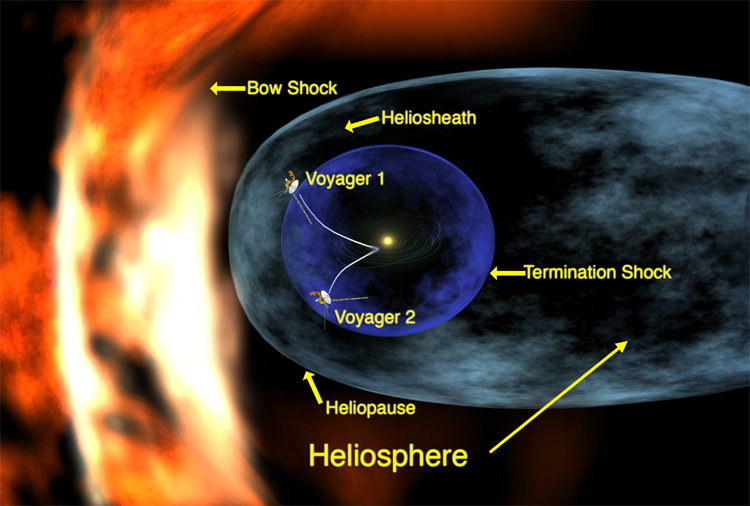
Credit: NASA
The US military withdraws its last remaining troops from Afghanistan
The war had been going on since October 2001 - both as a response to the 9/11 attacks, and as a result of ongoing issues from before the attacks. The stated aim of the invasion was to find Osama bin Laden and other high-ranking Al-Qaeda members and to put them on trial, destroy the whole organisation of Al-Qaeda and remove the Taliban regime which supported them.
The Bush administration stated that, as policy, it would not distinguish between terrorist organisations and nations or governments that sheltered them. The United Nations did not authorise the US-led invasion of Afghanistan.
The first phase was the aftermath of the terrorist attacks of September 11, 2001, when the US launched Operation Enduring Freedom, to annihilate the safe haven to Al-Qaeda and its use of the Afghan territory as a base of operations for terrorist activities. In that first phase, US and coalition forces, working with the Afghan opposition forces of the Northern Alliance, quickly ousted the Taliban regime. During the following Karzai administration, the character of the war shifted to an effort aimed at smothering insurgency.
Over the following years, however, it became clear that little progress was being made in the hunt for bin Laden - and planning to ensure the long-term political, social and economic stability of the country was lacking. America's presence in Afghanistan was inflaming tensions along Pakistan's border. In the eyes of many people, the invasion was doing more to destabilise the country than protect it. By 2010, more than 1,900 coalition troops had been killed, while even the most conservative estimates put civilian deaths in the tens of thousands. There were also multiple accounts of torture and human rights violations by coalition forces.
In addition, the cost of the war was mounting and had now reached almost $7bn per month, at a time when America was facing its worst financial crisis in decades.
Public opinion - having initially been high - declined substantially. When President Obama announced a further increase of 30,000 US troops, cities across America saw protests. Although this troop surge met with some success, it became clear that the war was simply unsustainable. Efforts by the US to train the Afghan National Army and to transfer security responsibility were plagued by inefficiency, widespread illiteracy and endemic corruption.
A phased withdrawal began in 2011, with the last remaining US troops pulling out in 2016 - fifteen years after the start of the invasion.* This made it almost as long as the Vietnam War.

Credit: US Federal Government
US vehicles are becoming more fuel-efficient
New standards enacted by the Obama administration have boosted the fuel efficiency of light duty vehicles (cars, crossovers, SUVs, vans and pickup trucks) to an average of 34 miles per gallon (MPG).*
This will reduce CO2 emissions by almost 1 billion metric tons and conserve 1.8 billion barrels of oil. In addition, the average buyer is saving around $3,000 over the lifetime of the vehicle - even after the higher initial purchase costs are taken into account.
These efficiency gains have come from smaller, more efficient engines with direct injection and/or turbochargers; more sophisticated automatic and dual-clutch transmissions (DCTs); hybrid-electric systems; clean diesel engines; tires with lower rolling resistance; more aerodynamic vehicles and lighter-weight materials.
The US still lags behind the rest of the world, however. New vehicles in Europe and Japan, for instance, are reaching 50 MPG on average.
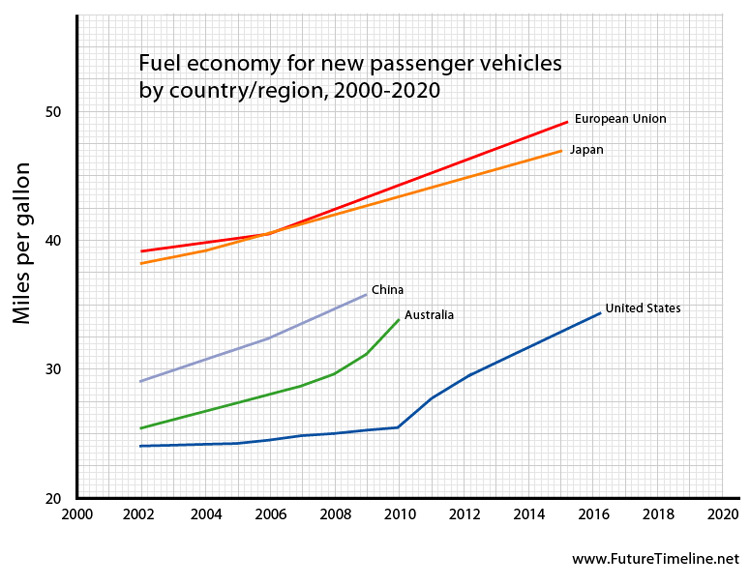
The first space hotel
Energiya - a Russian space group - launches the world's first space hotel, in a partnership with Orbital Technologies, a US hi-tech firm. Capable of housing up to seven people, it offers spectacular views of the Earth and includes a menu crafted by celebrity chefs. It can also function as a possible emergency refuge for astronauts from the ISS.
Energiya - a Russian space group - launches the world's first space hotel, in a partnership with Orbital Technologies, a US hi-tech firm. Capable of housing up to seven people, it offers spectacular views of the Earth and includes a menu crafted by celebrity chefs. It can also function as a possible emergency refuge for astronauts from the ISS.
Laser guns are in naval use
First trialled in 2010, laser weapons are now in use by a number of warships as part of their short-range defence. "Solid state" 32-megawatt beams of directed energy can be fired to a distance of more than two miles, hitting a target moving at over 300mph. This exceptionally accurate system can protect against anti-ship missiles, as well as shooting down drones and other flying vehicles.*
First trialled in 2010, laser weapons are now in use by a number of warships as part of their short-range defence. "Solid state" 32-megawatt beams of directed energy can be fired to a distance of more than two miles, hitting a target moving at over 300mph. This exceptionally accurate system can protect against anti-ship missiles, as well as shooting down drones and other flying vehicles.*
Holographic Versatile Disc (HVD) replaces Blu-Ray
These ultra-high density discs are capable of holding 1Tb of data - equivalent to over 200 DVDs. They work by analysing micro-holograms in 3D, rather than just markings on the surface. This allows data to be far more densely packed than conventional optical technology.
These ultra-high density discs are capable of holding 1Tb of data - equivalent to over 200 DVDs. They work by analysing micro-holograms in 3D, rather than just markings on the surface. This allows data to be far more densely packed than conventional optical technology.
The price of storage per gigabyte is plummeting - from around $1 per gigabyte in 2006, to less than 10 cents now. This is an example of the trend of exponential progress (rather than linear) seen in forms of information technology.
HVD itself is in danger of becoming obsolete, before it has even been properly established, as solid state flash drives are increasingly being used for digital transfer, some with even higher capacities, along with read and write speeds faster than any optical disc. The new SDXC card format specification for example has already reached the 2TB mark.
Sony launches the PlayStation 4
The PS3 has reached the end of its 10 year life cycle. The new console aims to compete with the Xbox 720 and the latest Nintendo platform, which together form the 8th generation of games consoles. Like its predecessor, the PS4 still includes physical media.*
The Strait of Messina Bridge is completed
The world's largest suspension bridge - the Strait of Messina Bridge - is completed this year, connecting Sicily with mainland Italy for the first time.* Some 3.3 km in length and 60m wide, the bridge is supported by two 382m pillars, higher than the Empire State Building in New York. There are two motorway lanes and one emergency lane in each direction catering for 6,000 vehicles per hour, a two-track railway for up to 200 trains a day and two independent lanes for service traffic and pedestrians.
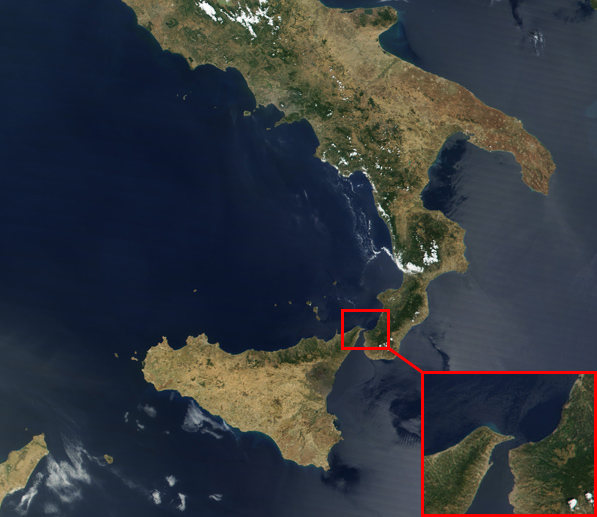
Credit: NASA
Rio de Janeiro hosts the Olympic Games
Rio becomes the first South American city to host the event.
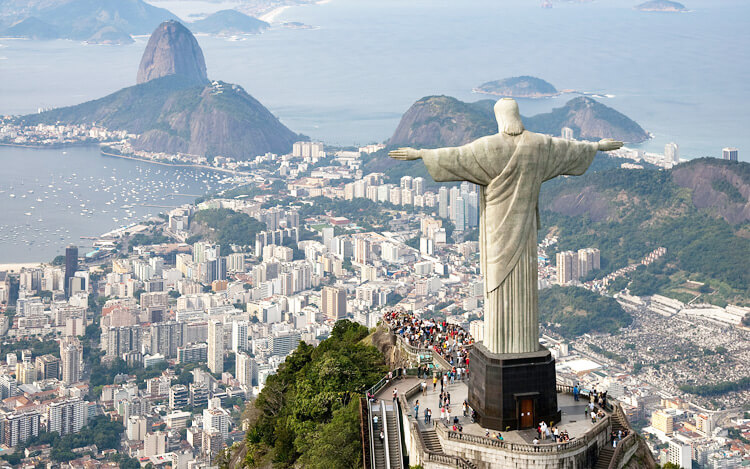
Total solar eclipse in the USA
On August 21st of this year, a total eclipse occurs in the United States - the first visible from the US since 1991 (just from part of Hawaii), and the first visible from the contiguous US since 1979.
On August 21st of this year, a total eclipse occurs in the United States - the first visible from the US since 1991 (just from part of Hawaii), and the first visible from the contiguous US since 1979.
Totality occurs along a path curving from Oregon to South Carolina, and lasts for roughly 2 minutes and 40 seconds. The location and time of "greatest eclipse" is on the western edge of Christian County, Kentucky at 36.97 degrees North and 87.65 degrees West, occurring at 18:25 UTC.
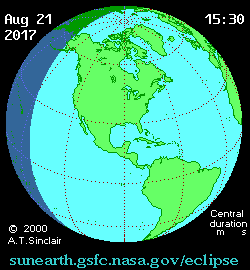
Credit: NASA
Crossrail opens in London
One of Europe’s largest ever transport projects, Crossrail expands London’s tube network capacity by over 10% and brings enormous regenerative benefits to the city. Costing over £16bn, the line is 120km in length (including 42km of tunnels). It runs from Berkshire in the west to Essex in the east, linking together all of the main economic hubs in the capital - Heathrow Airport, the West End, the City of London and Canary Wharf.
One of Europe’s largest ever transport projects, Crossrail expands London’s tube network capacity by over 10% and brings enormous regenerative benefits to the city. Costing over £16bn, the line is 120km in length (including 42km of tunnels). It runs from Berkshire in the west to Essex in the east, linking together all of the main economic hubs in the capital - Heathrow Airport, the West End, the City of London and Canary Wharf.
Ten-coach trains, roughly 200 metres long, run at frequencies of up to 24 trains per hour in each direction during the peak periods.
Electronic paper is seeing widespread use
This technology has been in development for over a decade* and is now in widespread use.
This technology has been in development for over a decade* and is now in widespread use.
Organic thin film transistors (TFT) are combined with organic, electroluminescent displays. This produces flexible, paper-thin devices less than 0.3mm in thickness and capable of running high-quality video. The applications are endless. They include true "e-books" and "e-papers" (which can also be read in the dark), clothes and other textiles with electronic displays, video posters, video leaflets, video cards, road signs that are self-illuminating, video instructions on food packaging and other boxed items.
Further development leads to much greater contrast ratio - resembling printed paper more than a screen (the latter is often hard to see in direct sunlight and other conditions).
This technology also marks a step towards the first paperless offices, which in turn helps to reduce deforestation.
Portable medical lasers that seal wounds
Star Trek-style devices shaped like pens are now available which can seal wounds, using specially controlled lasers in combination with a blood protein called albumin. Heated at just the right temperature, this forms a natural "glue" after the skin has cooled down. Using this method allows a wound to be stronger, water-tight, and less likely to scar than traditional stitches.
Following several years of development and refinement, they are used in many hospitals now.* These devices will be cheap and safe enough for the consumer market within a few years.
Teleportation of simple molecules
For a number of years, scientists had been teleporting individual atoms and particles of light. By this date, the first molecules such as water and carbon dioxide are being teleported.* This will be followed in the late 2030s by complex organic molecules such as DNA and proteins.*
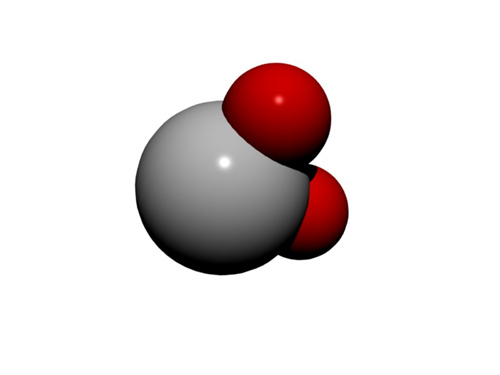
The European Extremely Large Telescope is operational
This revolutionary new ground-based telescope has the aim of observing the Universe in greater detail than even the Hubble Space Telescope. A mirror of approximately 42 metres (138 ft) will allow the study of the atmospheres of extrasolar planets. It will also perform "stellar archaeology" - measuring the properties of the first stars and galaxies, as well as probing the nature of dark matter and dark energy.
This revolutionary new ground-based telescope has the aim of observing the Universe in greater detail than even the Hubble Space Telescope. A mirror of approximately 42 metres (138 ft) will allow the study of the atmospheres of extrasolar planets. It will also perform "stellar archaeology" - measuring the properties of the first stars and galaxies, as well as probing the nature of dark matter and dark energy.
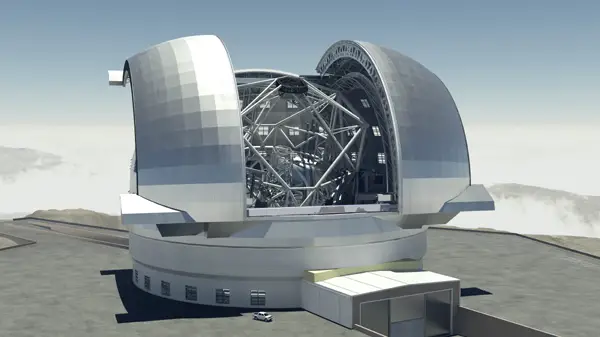
Credit: ESO
Ubiquitous internet nodes connect appliances, vehicles, etc.
In developed nations, many of the day-to-day routines in the home are becoming automated. Fridges, for instance, can be programmed to order new food before they become empty.* RFID microchips - smaller than grains of sand - are printed on packaging labels. These connect wirelessly to the refrigerator, which sends an order via the Internet. New food is then delivered to the customer's door at a pre-arranged time.
In developed nations, many of the day-to-day routines in the home are becoming automated. Fridges, for instance, can be programmed to order new food before they become empty.* RFID microchips - smaller than grains of sand - are printed on packaging labels. These connect wirelessly to the refrigerator, which sends an order via the Internet. New food is then delivered to the customer's door at a pre-arranged time.
Meanwhile, boilers and other appliances can notify an engineer when they break down, while heat and lighting systems can be activated in real time as a person is on their way home from work (rather than being programmed for a fixed time).
Devices are also being synchronised in various ways. They can even sense where you are in the home. A person can be listening to a football commentary in their bedroom, for example, then walk to the lounge and have the television activate itself, then walk to their car outside and have the signal "follow" them by turning on the appropriate radio channel. In addition to being linked with their user's home network, the majority of cars and other vehicles now have Internet access.
Robot insect spies are in military use
These "micro aerial vehicles" - no larger than a common house fly - have been in development for over a decade.*One of the major hurdles was creating sufficient battery power in such a small object, as well as keeping them light enough to remain airborne. Advances in nanotechnology solved this problem. Together with improvements in computing power, this allowed circuitry and components to be packed more closely.
The robots are being used primarily in spying missions, where they quite literally serve as a "fly on the wall" - recording and transmitting audio-visual information. An individual robot is equipped with miniature cameras, microphones, modem and GPS. Many terrorist cells are being infiltrated thanks to this.
More sophisticated versions are being developed for assassin roles. These have capsules in the abdomen of the insect, filled with cyanide or another lethal toxin. This is delivered to the target via a small needle capable of piercing human skin.
Some robots work in groups, forming networks that combine their abilities. Over the next few decades, further advances in nanotech will lead to enormous swarms of these machines being deployed on the battlefield.*
However, concerns are being raised as to how this technology will affect the privacy and safety of citizens.
Consumer devices with 100 Gbit/s transfer speeds
A new form of data transfer is now available for the consumer market. This is known as "Light Peak" and is replacing the Universal Serial Bus (USB) connections which have been the standard for many years.
The USB 3.0 specification allowed transfer speeds of 4.8 Gbit/s. An early version of Light Peak achieved 10 Gbit/s. This latest version, however, can achieve nearly 100 Gbit/s - enough to transfer a full-length Blu-Ray movie in around two seconds.
The optical technology of Light Peak also allows for smaller connectors with longer, thinner and more flexible cables. In addition, it can run multiple protocols simultaneously over a single cable, enabling the technology to connect devices such as peripherals, workstations, displays, disk drives, docking stations and more.*
Anti-fat drugs are available
A drug that lets you eat whatever you want without gaining weight is now available.* There is enormous demand for this product, which leads to a major drop in obesity levels throughout the developed world - especially in countries like the USA, which until now had been experiencing a crisis in this regard. Average life expectancy is increased as a result, since there are less people dying of heart-related illnesses.
The last of Nigeria's rainforests have disappeared
Nigeria was once among the Earth's most ecologically vibrant places - home to 4,700 plant types and 550 species of breeding birds and mammals. These included the forest elephant (Loxodonta cyclotis) and rare primates such as the drill monkey (Mandrillus leucophaeus), Sclater's guenon (Cercopithecus sclateri), the red-eared guenon (Cercopithecus erythrotis) and the red-capped mangabey (Cercocebus torquatus).
During the late 20th century, however, rampant deforestation took hold, with tree loss reaching nearly 4% per year. Between 1990 and 2005, the country lost over 4 million hectares of tree cover.* The most biodiverse ecosystems - the so-called "old growth" areas - were disappearing at an even faster rate, with an average of 11% being lost every year from 2000 onwards.
Logging, subsistence farming, road building (often sponsored by oil companies), mining and dam construction all contributed to the damage. The carbon lost from the destruction of these rainforests was exacerbated by the amount released from gas flaring - Nigeria flared more gas than any other country.
Despite some attempts at preservation, a resource-hungry population and its growing economy were unable to halt the tide of destruction. The bulk of Nigeria's rainforests eventually disappeared, the last few pockets shrinking into insignificance by the late 2010s.*
Acute spinal injuries are fully treatable
Experiments with mice in the previous decade showed that it was possible to restore function to the spinal cord, using stem cells.* After nine years of clinical trials, the process can now be replicated in humans.*
Experiments with mice in the previous decade showed that it was possible to restore function to the spinal cord, using stem cells.* After nine years of clinical trials, the process can now be replicated in humans.*
The ITER experimental fusion reactor is switched on
Human-engineered fusion has already been demonstrated on a small scale. The problem has been finding ways of scaling it up to commercial levels in an efficient, economical, and environmentally benign way.
Human-engineered fusion has already been demonstrated on a small scale. The problem has been finding ways of scaling it up to commercial levels in an efficient, economical, and environmentally benign way.
ITER - previously known as the International Thermonuclear Experimental Reactor - aims to be the first project to achieve this. Built in southern France at a cost of €20 billion, it has taken over a decade to construct and is one of the largest scientific projects ever undertaken, second only to the International Space Station. This joint research experiment is funded by the US, EU, Japan, Russia, China, India and South Korea.
To demonstrate net fusion power on a large scale, the reactor must simulate the conditions at the heart of the Sun. For this, it uses a magnetic confinement device called a tokamak. This doughnut-shaped vacuum chamber generates a powerful magnetic field that prevents heat from touching the reactor's walls. Tiny quantities of fuel are injected into and trapped within the chamber. Here they are heated to 100 million degrees, forming a plasma. At such high temperatures, the light atomic nuclei of hydrogen become fused together, creating heavier forms of hydrogen such as deuterium and tritium. This releases neutrons and a huge amount of energy.
Following its operational activation in 2019,* it is hoped that ITER will eventually produce more than 500 megawatts of power, in bursts of 400 seconds or more. This compares with 16 MW for the Joint European Torus (JET) in 1997, the previous world record peak fusion power, which lasted only a few seconds.
ITER will require another few decades before its reactor has been sufficiently perfected. To generate the sort of continuous levels of power required for commercial operation, it will need a way of holding the plasma in place at the critical densities and temperatures. This will need refinements in the design of the chamber, such as better superconducting magnets and advances in vacuum systems.
However, it could ultimately lead to a revolution in energy. If this project were to succeed, humanity would gain a virtually unlimited supply of clean, green electricity.*
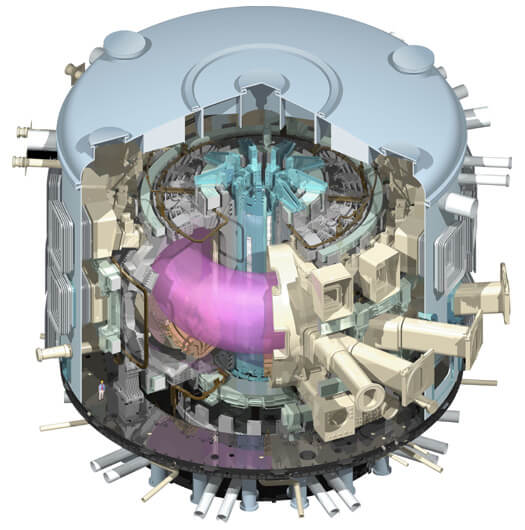
Credit: ITER
Computers break the exaflop barrier
An exaflop is 1,000,000,000,000,000,000 (a million trillion, or a quintillion) calculations per second. The world's top supercomputers are now achieving this speed. This represents a thousandfold improvement over machines of a decade earlier.*
This exponential growth will continue, so that by 2029, computers will surpass the zettaflop barrier - a thousand times faster than an exaflop computer of 2019, and a million times faster than a petaflop computer of 2009. One of the many resulting applications will be the accurate simulation of an entire human brain and its neurons in real time.
Personal computers in 2019 are becoming ever smaller, lighter and more compact - with laptops, netbooks and other mobile devices far outnumbering desktops.* Physical hard drives are becoming almost redundant, with most storage now done online using "virtual drives" housed in remote servers, aided by the tremendous growth in broadband speeds and 5G wireless communications.
Web applications have reached startling levels of power and sophistication, especially where search engines are concerned. These not only find keywords in a search, but also interpret the context of the request - and most use voice recognition software. Users can ask their computer a highly specific question (such as "I'd like to see a comedy at the cinema after 9pm, then have an Italian meal for less than $20") and receive detailed answers and recommendations, often customised to their exact personal tastes and interests.
This emerging form of AI - which effectively acts like a personal assistant - means the web now offers a far more productive and intuitive experience.*
Bionic eyes are commercially available
Following trials, the world's first bionic eyes are now available for persons with degenerative vision loss.
These devices use miniature cameras, mounted on a pair of glasses. The cameras beam visual information into an electrode array which is connected to neurons in the retina. Electrical impulses are then transmitted through the optic nerve to the vision centres of the brain.
The first prototype of this technology was somewhat crude and pixelated, with only 100 dots of resolution. However, this new version provides 1000 dots, allowing the patient to recognise faces and read large print.*
Bionic eyes continue to gain in sophistication over the following decades, making exponential progress in resolution and visual quality. Fully artificial eyes eventually become available that can actually provide better vision than normal eyes - leading even healthy people to "upgrade" their sight.
Automated freight transport
Autonomous rapid transit systems have already been in place at certain airports, and on the metro systems of cities. By this date, significant numbers of driverless trucks have begun appearing on the roads.* They are capable of travelling hundreds of miles by themselves, negotiating traffic and other obstacles, and utilising advanced GPS technologies. They have a number of advantages over human drivers - such as being able to run 24 hours a day without getting tired, never being absent, and not requiring a salary or training. The trucks can also detect mechanical or software faults.*
These automated vehicles will eventually include cars, taxis and other types of road vehicles, becoming widespread by the 2030s.
The Aral Sea disappears from the map
As recently as the 1970s, the Aral Sea was the world's fourth largest lake, with an area of 68,000 km2.
However, Soviet irrigation projects diverted the Amu Darya and Syr Darya rivers which fed into it. By 2004, the sea had shrunk to 25% of its original surface area, and a nearly fivefold increase in salinity had killed most of its natural flora and fauna. By 2007, it had declined to 10% of its original size, splitting into three separate lakes, two of which were too salty to support fish. The once prosperous fishing industry had been virtually destroyed, and former fishing towns along the original shores became ship graveyards.
The Aral Sea was also heavily polluted, largely as a result of weapons testing, industrial projects, pesticides and fertilizer runoff. Wind-blown salt from the dried seabed damaged crops and polluted drinking water, while salt- and dust-laden air causd major public health problems in the Aral Sea region. The retreat of the sea also caused localised climate change, with summers becoming hotter and drier, and winters colder and longer.
Although a dam project in 2005 saved what little remained of the northern part of the sea (the Small Aral), the much larger southern part of the sea (the Large Aral) continued to shrink, and by 2019 had evaporated entirely.*
Global oil demand exceeds 100 million barrels per day
Meanwhile, new oil discoveries continue to show an alarming decline. As the decade draws to a close, it becomes painfully obvious to all that Peak Oil has been reached. Food and energy prices begin to skyrocket - leading to economic stagnation the world over. With 60% of remaining oil located in the Middle East, further conflict looms in this troubled region.*
Meanwhile, new oil discoveries continue to show an alarming decline. As the decade draws to a close, it becomes painfully obvious to all that Peak Oil has been reached. Food and energy prices begin to skyrocket - leading to economic stagnation the world over. With 60% of remaining oil located in the Middle East, further conflict looms in this troubled region.*
2020-2029 Contents
2020-2035
World energy crisis*
Throughout this period the world is thrown into turmoil as demand for oil begins to greatly exceed supply - crippling many economies and triggering widespread social unrest.*
Throughout this period the world is thrown into turmoil as demand for oil begins to greatly exceed supply - crippling many economies and triggering widespread social unrest.*
There are major conflicts throughout the Middle East and Central Asia. The most significant of these resource wars actually involves the one-off use of a tactical nuclear weapon.
The crisis plays out for nearly two decades, gradually being resolved by a switch to renewable energy and alternative fuel technologies - but the transition is by no means a smooth one. By the mid-2030's, the geopolitical map of the Middle East is almost unrecognisable compared with 20 years previously.
Internet use reaches 5 billion worldwide
The number of Internet users has now reached almost 5 billion - equal to the entire world's population circa 1987. This compares with 1.7 billion users in 2010 and only 360 million in 2000.*
Vast numbers of people in developing countries now have access to the web, thanks to a combination of plummeting costs and exponential improvements in technology. This includes laptops that can be bought for only a few tens of dollars, together with explosive growth in the use of mobile broadband. Even the most remote populations on Earth can take advantage of the Internet, thanks to the infrastructure now in place.*
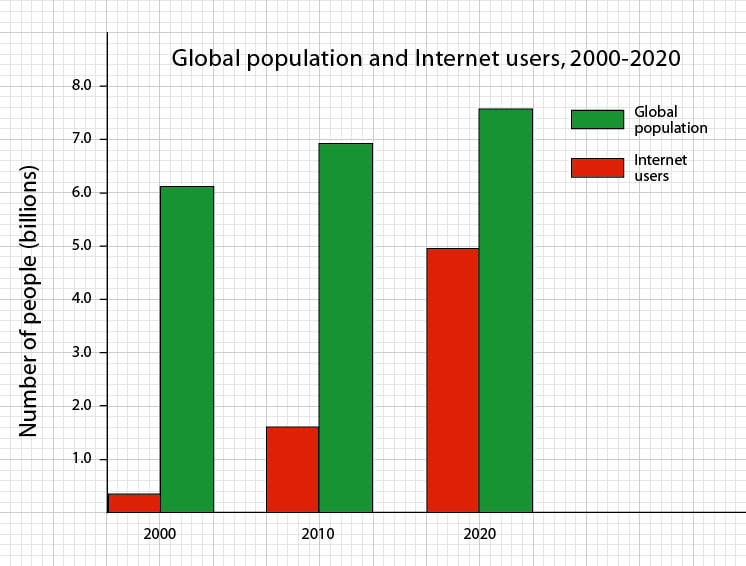
Texting by thinking
In 2020, mobile phones are becoming available with the option of texting by thought power alone.*
In 2020, mobile phones are becoming available with the option of texting by thought power alone.*
A sensor-mounted headset is worn by the user. This contains brain-machine interface technology, which analyses brain waves and converts them into digital signals.*
Some of the higher end models feature glasses or visors, with displays built into the lenses. This allows completely hands-free texting, effectively creating a form of electronic telepathy. The process is rather slow at this stage - requiring a high degree of concentration - but advances in the coming decades will revolutionise communication.
Complete organ replacements grown from stem cells
In the previous decade, it was already possible to grow individual tissues, tendons and cartilages from stem cells. By 2020, scientists have fully characterised how every part of the heart works - enabling them to grow complete replacements for use in transplants.*
The need for external donors is eliminated, and since the organ is genetically matched to the patient, there is no chance of rejection. Natural, living tissue is also far more flexible, sophisticated and efficient than artificially built components - so this new treatment offers radical hope to millions of people affected by cardiovascular disease. Until now, around 15m people have died each year from heart-related conditions.
The economic benefits are huge. A significant fraction of healthcare costs have been attributable to organ failure, the recurring treatments for chronic diseases and their subsequent complications. This new regenerative medicine effectively provides a cure, rather than ongoing treatment. Until now, direct healthcare costs of organ replacement and associated care have been $350 billion globally (about 8 percent of global healthcare spending).
As well as the heart, various other organs are developed over the subsequent decade: lungs, livers, kidneys, spleens, stomachs and sexual organs all become available by 2030. Internal organ failure is gradually becoming a thing of the past; for those who can afford the treatments, at least.
Combined with new vitrification techniques* (which allow organ banking without damage from ice crystal formation), this is a major breakthrough in longevity extension.
Holographic TV is mainstream
Breakthroughs in rewritable and erasable systems have made it possible to mass-market the first truly holographic TV displays.*
This form of technology had been in development for nearly three decades. One of the main problems encountered was that the displays required a lengthy delay between each "rewrite" - making it impractical for televisual displays. However, recent advances in power transfer have overcome this problem, with displays now capable of running at 24 frames per second.
Typical holographic screens of this period are relatively small. They are also very expensive, and still viewed as a luxury item for now. However, further refinement of this technology leads to bigger, more powerful displays; while competition between the major vendors later succeeds in bringing down costs, making them affordable to the majority of people.
The screens can either be fixed to a wall (with all the image writing lasers behind the wall), or placed horizontally on a table (with all the components underneath).
Initially popular in Japan and the Far East, the displays rapidly find their way to the rest of the world and make traditional CRT and LCD screens obsolete.
Over the next few decades perfection of this technology will see entire rooms turned into holographic environments.
Sweden becomes the first oil-free country
This has been achieved through large-scale investments in renewable energy, massive tax incentives and grants for scientific research, and a detailed programme of energy conservation. The country is powered entirely by zero-carbon technologies, and has rid itself completely of gasoline cars and oil-heated homes.* From this decade onwards, Sweden experiences massive prosperity and growth.
This has been achieved through large-scale investments in renewable energy, massive tax incentives and grants for scientific research, and a detailed programme of energy conservation. The country is powered entirely by zero-carbon technologies, and has rid itself completely of gasoline cars and oil-heated homes.* From this decade onwards, Sweden experiences massive prosperity and growth.
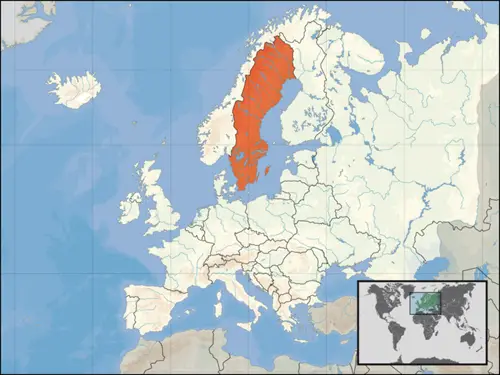
Credit: David Liuzzo
Glacier National Park and other regions are becoming ice-free
By now, the Glacier National Park in Montana has become completely ice-free, the park's namesakes having disappeared as a result of global warming.
 | 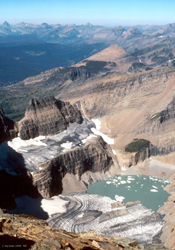 | 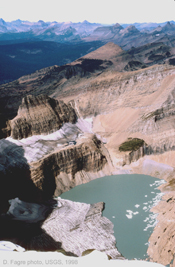 | 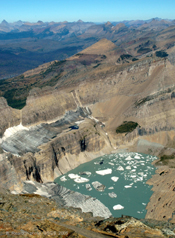 |
1938 | 1981 | 1998 | 2005 |
An earlier model (shown below) had forecast this event for 2030, based on a study by the US Geological Survey, along with 1992 temperature predictions by the UN's Intergovernmental Panel on Climate Change (IPCC). However, updated computer models and fresh data obtained in 2009 indicated a temperature rise more than twice as rapid as previously thought.*
As early as 2020, therefore, the glaciers were gone, leaving behind only barren rock. Many cold water dependent plants and animals subsequently died out due to loss of habitat - including a number of rare species. Reduced seasonal melting of ice also affected stream flow during the dry summer and fall seasons, reducing water table levels and increasing the number of forest fires. This had the added effect of putting more carbon into the atmosphere. The loss of glaciers also reduced the aesthetic visual appeal of the region for visiting tourists.
This process is being mirrored all over the world, with non-polar ice beginning to vanish from many prominent regions including the Andes, Alps, Himalayas and Kilimanjaro.
Later this century, glacier loss from the Himalayas will have a devastating impact - destabilising much of the Indian subcontinent, including the nuclear-armed Pakistan. Floods and mudslides will be the initial result of the melting; but afterwards, fewer and smaller glaciers will mean less run-off to rivers such as the Ganges that would normally provide fresh water for drinking, agricultural production and hydroelectric power generation. Given that the Mekong, Yangtze and Yellow rivers are affected too, this means water shortages for potentially 2.5 billion people.*
Wholly lifelike CGI
Computer-generated people used in the latest video games now achieve a wholly lifelike appearance. Advances in modelling techniques have allowed programmers to recreate the subtlest of movements, facial expressions, lighting and other physical effects. Complex animated scenes featuring entirely computer-rendered people are becoming indistinguishable from reality.*
Computer-generated people used in the latest video games now achieve a wholly lifelike appearance. Advances in modelling techniques have allowed programmers to recreate the subtlest of movements, facial expressions, lighting and other physical effects. Complex animated scenes featuring entirely computer-rendered people are becoming indistinguishable from reality.*
"Thoughtcrime" is becoming a reality
Twenty years on from 9/11, mind readers are now a common feature of airport security, as well as sports stadiums and other high profile events. This technology faced problems to begin with, as there were false positives recorded by the machines – but recent advances in neuroscience and computer analysing software have greatly improved their accuracy.*
The system uses "non-invasive" sensors and imagers. These observe a person's emotional state, facial expression, body language, body temperature, heart rate, breathing pattern and other cues. Analysed together, these factors can determine whether they are planning to commit a crime.
Specific words, phrases and imagery within the person's brain are still years away from being fully decipherable. However, it is now possible to establish their basic, overall intentions beyond any reasonable doubt.*
This technology is also replacing the lie detectors used in courtroom settings.
Fully reusable, single-stage-to-orbit spacecraft
Until now, all orbital spacecraft have used multiple stages. This has required jettisoning parts of a launch vehicle during the flight, in order to reduce weight. In the early 2020s, however, a new prototype "space plane" is developed with funding from the EU. This can operate without the need for booster rockets, fuel tanks, engines or other external components, instead utilising a hybrid jet/rocket system.*
The vehicle takes off from a specially strengthened runway. It uses a precooled jet engine (rather than scramjet) to reach speeds of Mach 5.5 (1700 m/s), then closes the air inlet and operates as a highly efficient rocket to complete the journey to orbit.
Although its payload is only 12 tons (about one-third the capacity of the space shuttle), the craft is substantially cheaper (about 1/10th) and far more efficient (about 400-fold) than earlier spacecraft.* After completing a mission, it reenters the atmosphere with its skin protected by a strong ceramic, landing back on the runway like a normal aeroplane. It then undergoes any necessary maintenance and is capable of flying again in just two days (compared to two months for the space shuttle).
These planes are initially unmanned. However, later versions will be used for space tourism – capable of transporting up to 20 passengers in a purpose-built module and costing around $500,000 per person.*
Telecommuting is a standard flexible work option
In an effort to cut real estate costs, become more eco-friendly and attract the growing number of people seeking work-life balance, most companies by now have adopted a "work wherever you want, whenever you want" policy.
An increasingly global talent pool is emerging, with companies aggressively pursuing the best available workers, regardless of where they reside. Combined with superfast broadband in the home, telecommuting has grown tremendously as a result.
In addition, soaring fuel costs have led to many office-based employees working a four-day week, usually consisting of four 10-hour days.
In today's corporate workplaces, multi-touch surface computing is becoming ubiquitous - along with seamless integration of wireless devices and applications. Near-paperless offices are becoming a reality.
This combination of advanced technologies and flexible work options is leading to greatly improved speed, productivity and efficiency in companies around the world.
Traditional microchips are reaching the limits of miniaturisation
Semiconductor companies are reaching the limits of miniaturisation for computer chips. The smallest transistors are now being built with 11-nanometre manufacturing processes. This is close to the size of individual atoms. Silicon is impossible to scale below this size, due to the effects of quantum tunnelling.
Moore's Law - the trend which has seen computer power doubling every two years - enters a new paradigm shift, with traditional microchips abandoned in favour of "stacked" 3-dimensional circuits made from carbon nanotubes.*
Water crisis in southwest USA
Southwestern parts of the USA – including Nevada, Arizona and southern California – are faced with crippling water shortages, on a scale normally only seen in Third World countries.
Lake Mead, a key source of water for more than 25 million people (or about 8% of the US population), has run dry as a result of climate change.* Increased population growth and associated demand for water resources have also played a part.
Once the largest reservoir in the country, it has declined to almost nothing due to the Colorado River’s net deficit of nearly 1 million acre-feet of water per year. This crisis has occurred despite mitigation measures implemented early in the previous decade.
As well as providing fresh water, Lake Mead has been a major source of hydroelectric power, via the Hoover Dam. Blackouts are now occurring across much of the area. Las Vegas and its famous lights are particularly hard hit. Authorities have been attempting to stabilise the situation by constructing solar power facilities both in and around the city, as well as laying groundwater pipelines from elsewhere in Nevada.* Improved methods of water conservation and new agricultural techniques are also being introduced. However, even these measures are proving to be insufficient, and major societal and economic disruption is unavoidable in the short term. A virtual exodus of people from the affected regions is underway during this time.
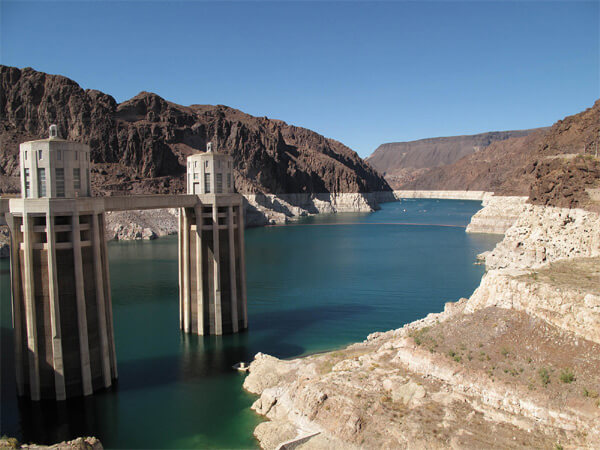
Lake Mead as seen from the Hoover Dam, clearly showing the "bathtub ring". Credit: Cmpxchg8b
Nanotech clothing enters the mass market
A variety of nanotechnology-based clothing is available now. This includes the first truly waterproof garments. These are made from polyester fibres coated with millions of silicone filaments. They are structured in such a way that water simply falls off, without leaving any dampness.*
Other textiles utilising nanotechnology include self-cleaning carpets. Millions of tiny fingers, embedded in the fabric, gently sway and lean towards the edge of the room, shifting dust and other garbage in a matter of minutes. Collectors fixed into the skirting board then gather and dispose of any detritus as necessary. This has already been used in hotels, luxury apartments and high-grade office buildings - but is now entering the consumer market thanks to falling costs.
Nanotech is also being used extensively by the military, as well as police forces. Ultra-lightweight but extraordinarily impact-resistant jackets and body armour are becoming available. Fireproof suits can also be made safer using these new materials.

Credit: University of Zurich/Wiley Vch
Tooth regeneration is transforming dental care
Having been demonstrated in mice, bioengineered tooth regeneration is becoming available to humans. Using a combination of stem cells, scaffold material and signaling molecules, a fully functional and living tooth can be regrown in around two months - complete with roots, inner pulp and outer enamel.
Having been demonstrated in mice, bioengineered tooth regeneration is becoming available to humans. Using a combination of stem cells, scaffold material and signaling molecules, a fully functional and living tooth can be regrown in around two months - complete with roots, inner pulp and outer enamel.
Until now, dental implant therapies have required pre-existing high quality bone structures for supporting the artificial implants. Full reconstruction of natural, healthy teeth in patients without adequate bone support is therefore now possible. Fillings and dentures are becoming obsolete as a result, improving the health and well-being of many millions of people.*
Piezoelectric nanowires are appearing in high-end products
The piezoelectric effect, in which crystalline materials under mechanical stress produce an electric current, is now being utilised at the nanoscale level to power a variety of devices.*
The piezoelectric effect, in which crystalline materials under mechanical stress produce an electric current, is now being utilised at the nanoscale level to power a variety of devices.*
Tiny vibrations - such as those created by wind, sound waves, friction, and even the turbulence of blood flow - can be captured and harnassed by a nanowire mesh. The bending of this mesh in response to these subtle forces can generate over 200 millivolts.
This form of self-powering technology is so sensitive, it can even be embedded in clothing. For instance, the subtle movements of a belt, shirt or trouser pocket can produce enough power to charge the batteries of a cell phone.
Implantable medical devices benefit particularly well from this. Hearing aids, for example, no longer require batteries since they can be powered by sound waves hitting them. Meanwhile, bone-loss monitors and other sensors can be activated by stresses to the body - then beam an alert signal to a computer.
Piezoelectric nanowires have a range of other applications. They can be used in engineering, for example, to detect microscopic fractures in an aeroplane or spacecraft. They can also be used in identity verification: a grid of piezoelectric wires underneath a signature pad (or other touchscreen device) can be used to record the pattern of pressure applied, which is then checked against a database.
Deafness is curable
Recent advances in stem cell research have provided a method of regenerating sensory cells within the inner ear. Humans are born with 30,000 cochlear and vestibular hair cells per ear. Unlike many animal species, they are unable to regenerate these when they are damaged. However, experiments with mice showed that it was possible to induce stem cells - as well as reprogrammed fibroblasts - into creating enough replacement hair cells to fully restore hearing. This process was then replicated in people.*
Recent advances in stem cell research have provided a method of regenerating sensory cells within the inner ear. Humans are born with 30,000 cochlear and vestibular hair cells per ear. Unlike many animal species, they are unable to regenerate these when they are damaged. However, experiments with mice showed that it was possible to induce stem cells - as well as reprogrammed fibroblasts - into creating enough replacement hair cells to fully restore hearing. This process was then replicated in people.*
Using the patient's own skin as a source of stem cells means that the replacements are a perfect genetic match for their body, avoiding issues of immune rejection. This form of therapy also enables a variety of other ailments to be treated, such as balance disorders and tinnitus.
Laser-driven fusion energy makes progress
Magnetic confinement - as seen in the ITER - has thus far been the preferred approach to studying fusion energy. However, the potential of lasers is now being explored in greater depth. Following years of engineering and construction, a major new research facility is operational in Europe.* This aims to demonstrate the feasibility of commercial-level fusion.
The High Power laser Energy Research facility (HiPER) uses a laser-driven inertial confinement reactor. Lasers are fired into a central core, where they collide with a single fuel pellet, compressing it to high density. A second laser is then fired, in a more intense pulse with nanosecond precision. This ignites the fuel, raising the core temperature to over a hundred million degrees celsius - hotter than the centre of the Sun - allowing fusion reactions to occur. Helium is formed, releasing energetic neutrons in the process. These neutrons are captured, generating electricity.
HiPER's "fast ignition" approach uses much smaller lasers than previous designs, yet generates power of the same magnitude. This offers a total "fusion gain" that is much higher than earlier devices, with a ten-fold reduction in construction costs.
HiPER is only a prototype - but when fully developed, fusion will become a revolutionary form of energy production. It will be a giant leap forward in addressing climate change, pollution, energy security and the ever increasing demand for consumption.
Borneo’s rainforests have been wiped from the map
The world’s 3rd largest island, Borneo was once home to a staggering range of biodiversity, covering hundreds of thousands of square kilometres. Its lush rainforests have now almost completely disappeared as a result of deforestation.* Many rare species are declared extinct around this time including the Orangutan – one of the most intelligent of the great apes.*
Gorillas are extinct in Central Africa
Rampant and uncontrolled poaching, together with large-scale deforestation, agriculture, mining, pollution, disease and militia operations have led to the terminal decline of gorilla populations.* Only those in captivity now remain.

Credit: Dozyg
Turkey becomes self-sufficient in energy production
While many countries are struggling with the effects of peak oil, a lucky few have benefited from recent new discoveries. Turkey, for example, has become entirely self-sufficient in energy production - with 10 billion barrels of oil reserves and over 1.5 trillion cubic meters of natural gas uncovered in the Black Sea.*
These huge reserves have enabled the country to completely end its dependence on foreign imports and meet its energy needs for at least the next 30 years. Turkey's standing in the world is increased significantly as a result, boosted further by its recent entry into the EU.
Celebrations are also taking place this year to mark the 100th anniversary of the foundation of the republic.
A permanent cure for migraine is available
Migraine is a leading cause of disability, affecting one in five people worldwide. This debilitating condition is characterised by severe headaches, nausea, vomiting, photophobia (increased sensitivity to light), and phonophobia (increased sensitivity to sound). Approximately half of those affected have such severe attacks that they cannot function normally in their day-to-day life.
In 2010, scientists discovered a genetic defect linked to this condition, which provided a target for new treatments. After years of clinical trials, a drug is now available that corrects the faulty gene permanently.*
The biggest refugee crisis in world history
Torrential flooding in southeast Asia - brought on by a combination of rising sea levels, melting glaciers and extreme weather events - is creating the biggest refugee crisis in world history. Bangladesh and other parts of the region are seeing literally tens of millions of men, women and children displaced from their homes.*
This unfolding horror is the first major crisis of the 21st century which can be attributed directly to global warming.
Although a number of different countries are affected, the disaster is centred on Bangladesh with its high population (over 150 million) and high density, situated in the low-lying Ganges River delta. With most of the country just a few metres above sea level - and with a flat topography - storm surges are flooding vast areas of land with virtually no hope of recovery. As well as the physical damage to infrastructure, salt in the ground means that fields up to 40km from the new coastline are rendered useless for growing crops.*
Millions are drowned, while many others die in the subsequent looting and chaos that sweeps the nation, and a whole series of conflicts begins to erupt along the border with India.* The sheer scale of this catastrophe makes it difficult to coordinate relief efforts. Relatively speaking, only token assistance can be offered by the UN.
Ironically, Bangladesh has contributed very little in the way of pollution blamed for accelerating climate change.
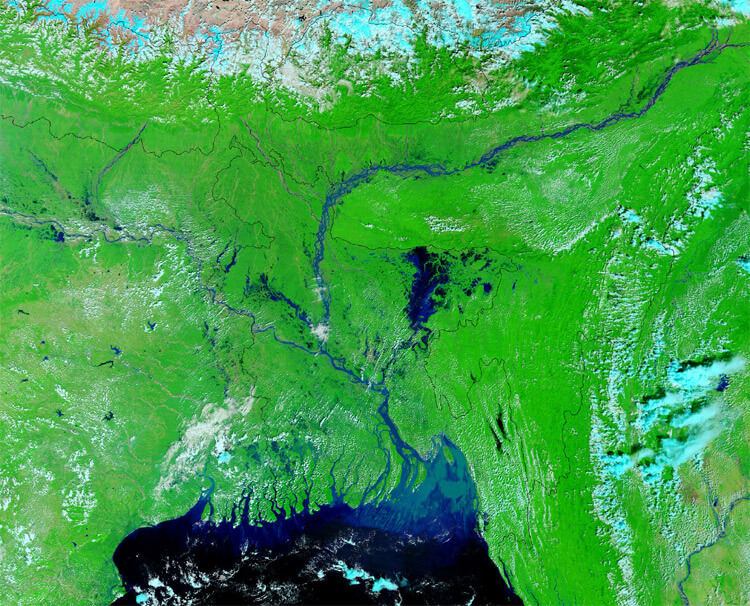
Credit: NASA
African elephants are on the brink of extinction
Despite efforts to curtail the ivory trade, huge numbers of elephants continued to be poached throughout Africa. Their population - which stood at 600,000 in 2009 - declined by nearly 40,000 each year.*
Only a handful remain in Africa today. Zoos and safari parks around the globe are now working to maintain a viable population for future rewilding.
A cure for the common cold is available for general public use
It was previously believed that antibodies – produced by the immune system – could only attack a virus fromoutside the cell, and that once a cell was infected by a virus it was doomed to die.
It was previously believed that antibodies – produced by the immune system – could only attack a virus fromoutside the cell, and that once a cell was infected by a virus it was doomed to die.
In 2010, however, scientists made a revolutionary discovery. It was found that certain antibodies could "piggyback" on an invading virus as it entered the cell. Once inside, they would trigger a protein called TRIM21, pulling the virus into a disposal system and eliminating it. Artificially boosting the amount of TRIM21 was shown to help this process.
What had once seemed impossible - a cure for the common cold - was edging towards a reality. Further research, including animal tests, led to the first trials on humans in the mid-2010s.
Though successful in the laboratory, this drug faced the lobbying efforts of pharmaceuticals, concerned at their sudden loss of profitability. Nevertheless, it eventually became available to the public.
The treatment can be taken in inhaler form and cures colds in under two hours. Workplace absences are decreased substantially as a result. A number of other viruses responsible for a range of diseases can also be targeted by this new approach. They include norovirus, which causes winter vomiting, and rotavirus, which results in severe diarrhea and kills thousands of children in developing countries.*
Completion of the Square Kilometre Array
Our view of the universe is greatly expanded with the completion of a major new observatory.* This radio telescope has a total collecting area of approximately one kilometre. It operates over a wide range of frequencies and its size makes it 50 times more sensitive than any other radio instrument.
Our view of the universe is greatly expanded with the completion of a major new observatory.* This radio telescope has a total collecting area of approximately one kilometre. It operates over a wide range of frequencies and its size makes it 50 times more sensitive than any other radio instrument.
By utilising advanced processing technology, it can survey the sky more than 10,000 times faster than ever before. With stations extending to a distance of 3,000 km from a concentrated central core, it continues radio astronomy's tradition of providing the highest resolution images in all of astronomy.
Click to enlarge
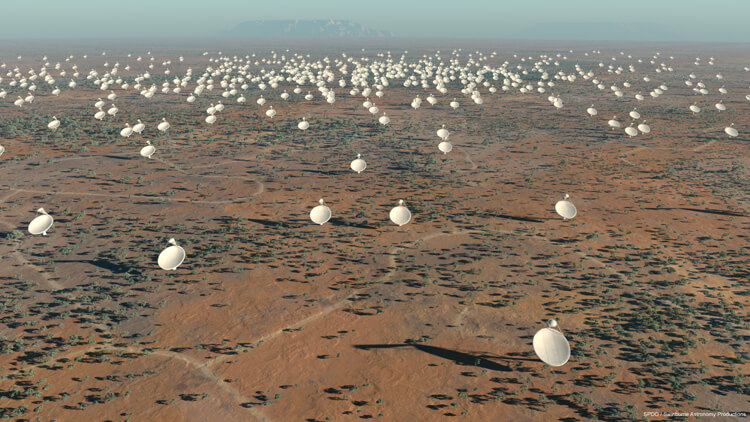
Image used with permission from Jo Bowler, SKA Program Development Office, Jodrell Bank Centre for Astrophysics.

Image used with permission from Jo Bowler, SKA Program Development Office, Jodrell Bank Centre for Astrophysics.
Petabyte storage devices are available
Data storage devices are continuing to grow exponentially, with capacities doubling every year. Nanotechnology is enabling truly vast quantities of information to be stored. A petabyte is 1000 terabytes, or one million gigabytes. Secure digital and microSD cards have disappeared by now, replaced by an even smaller form-factor.
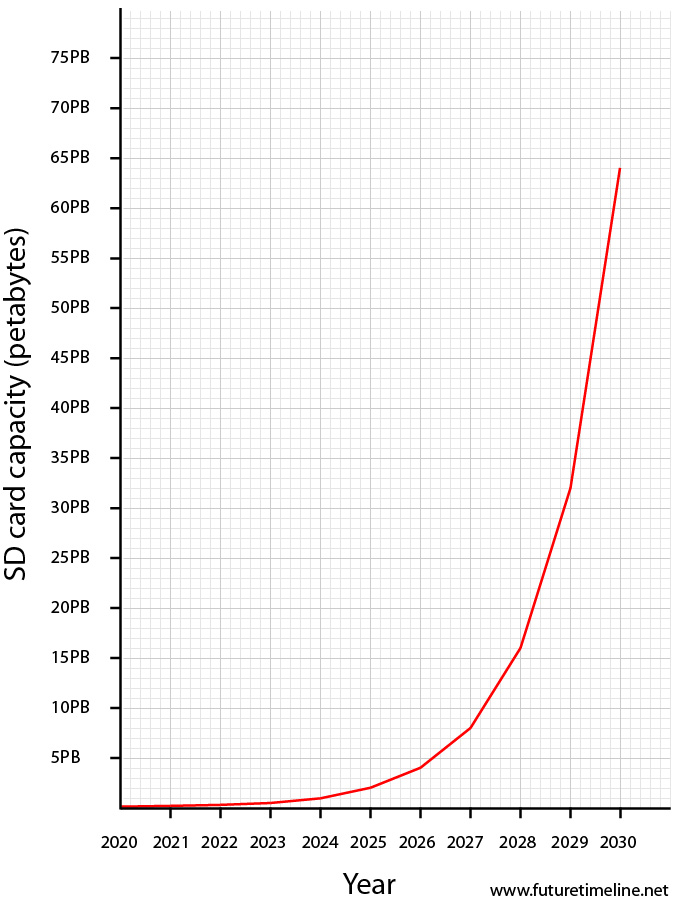
The first probe to fly into the Sun's outer atmosphere
Solar Probe Plus is a historic mission, flying into the Sun's outer atmosphere (corona) for the first time. This probe travels to within 5.9 million km (3.6 million miles) of the Sun's surface - just four times the length of its diameter.
At such close range, a shield is needed at the front of the spacecraft. This is made of reinforced carbon-carbon composite, able to withstand temperatures of 2000°C. At closest approach, Solar Probe Plus hurtles around the Sun at approximately 450,000 miles per hour; fast enough to get from Philadelphia to Washington in one second.
The mission's primary scientific goals are:
• To determine the structure and dynamics of the magnetic fields at the sources of solar wind.
• To trace the flow of energy that heats the corona and accelerates the solar wind.
• To determine what mechanisms accelerate and transport energetic particles.
• To explore dusty plasma near the sun and its influence on solar wind and energetic particle formation.
• To trace the flow of energy that heats the corona and accelerates the solar wind.
• To determine what mechanisms accelerate and transport energetic particles.
• To explore dusty plasma near the sun and its influence on solar wind and energetic particle formation.
Coming closer to the Sun than any previous spacecraft, Solar Probe Plus employs a combination of in situ measurements and 3D imaging to revolutionise our knowledge of the physics, origin and evolution of the solar wind.*
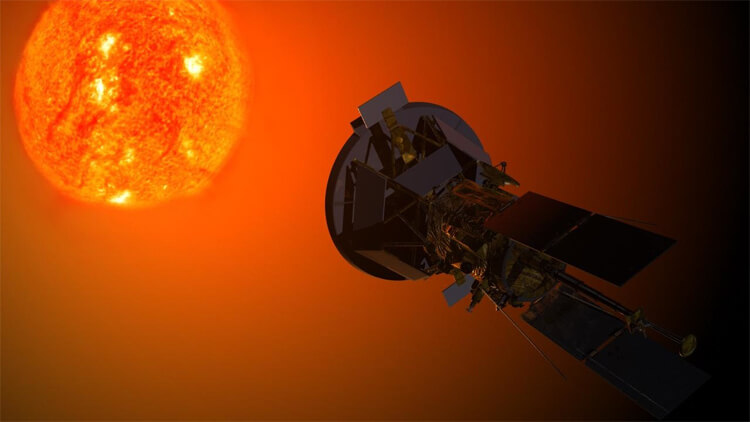
Credit: NASA
Human brain simulations are becoming possible
The exponential growth in computing power - combined with the use of nanobots - has made it possible to form accurate models of every part of the human brain.*
Between 2005 and 2025, there is a millionfold increase in computational power, along with vastly improved scanning resolution and bandwidth. Until recently, only separate regions of the brain had been modelled - but scientists are now able to combine them into one giant, complete simulation.
Llike the Human Genome Project of the 1990s, there were many in the scientific community who doubted the brain could be mapped so quickly. Once again, they failed to account for the Law of Accelerating Returns and theexponential growth of knowledge (rather than linear).*
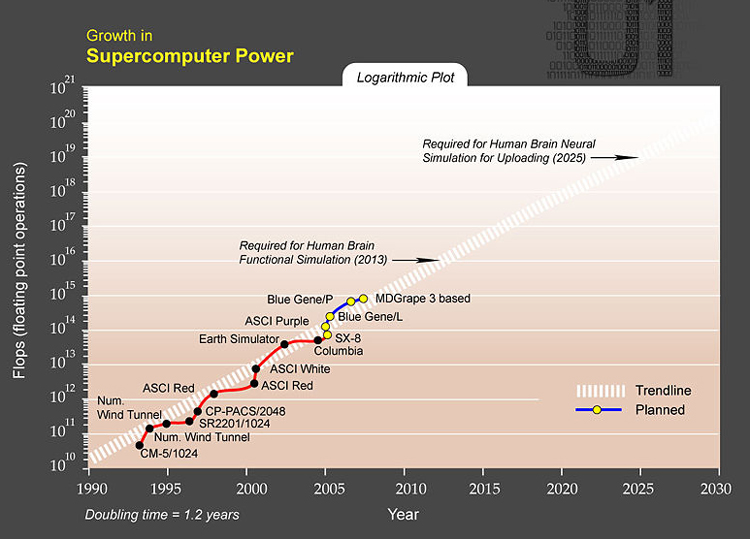 Creative Commons Attribution 1.0 / Credit: Ray Kurzweil
Creative Commons Attribution 1.0 / Credit: Ray KurzweilMedical nanobots are being developed
Microscopic robots - just a few nanometres across - are being developed as part of efforts to improve healthcare. In some countries, they have reached the trial stage and will soon be approved by the government. Utilised in medical research and treatments, their size will enable them to reach places in the body that were simply inaccessible before or too delicate for conventional instruments to operate on.
In the coming years, the most important breakthroughs will be in the treatment of cancer. Using nanobots, it will be possible to detect tumours earlier than ever before and target them with far more precision. In the 2030s, over 90% of cancers will be cured as a result of this. Even patients who would previously have been classed as "terminally ill" will routinely be saved. Monitoring of heart conditions, neurological disorders and many other illnesses will also improve dramatically. Combined with enormous strides in stem cell research, this will create a new generation of medical treatments reaching a whole new level of sophistication and efficiency.
The nanobots themselves are built on a molecule-by-molecule basis, via positionally-controlled diamond mechanosynthesis and diamondoid nanofactories. Each robot is capable of propelling itself using tiny motors and is equipped with microscopic sensing, guidance and communication devices.
China's economy continues to boom
Much of China is now highly urbanised and densified. Its booming economy has led to the construction of literally tens of thousands of new skyscrapers all over the country. There are now over 200 cities with more than a million inhabitants, compared with just 35 in the whole of Europe circa 2010.* Even many remote and isolated places are beginning to see development on an unprecedented scale. Large-scale infrastructure such as maglev trains, airports, bridges and tunnels is forming an extensive network to all corners of the nation, leaving few areas untouched. China is well on its way to becoming a developed country.
Much of China is now highly urbanised and densified. Its booming economy has led to the construction of literally tens of thousands of new skyscrapers all over the country. There are now over 200 cities with more than a million inhabitants, compared with just 35 in the whole of Europe circa 2010.* Even many remote and isolated places are beginning to see development on an unprecedented scale. Large-scale infrastructure such as maglev trains, airports, bridges and tunnels is forming an extensive network to all corners of the nation, leaving few areas untouched. China is well on its way to becoming a developed country.
Some of the largest metropolitan areas - such as Hong Kong and Shenzhen - actually begin to overlap and form "hyper cities", rivalling Tokyo in terms of population and land area. Many of the world's tallest buildings can now be found in China, including a number of kilometre-high "supertalls".
All of this has a considerable impact on the price of steel and other materials, which leads to cutbacks of many large-scale development projects in Europe, America and elsewhere. The rise of neighbouring India is adding to this. The West is now having a greatly reduced influence on setting the price of metals. Meanwhile, vast profits are being made by construction and mining firms, which leads to many high profile takeovers and acquisitions. At the same time, record numbers of accidents during this time - as a result of so much construction activity - lead to tighter regulations and improved safety in the industry. Better pay and working conditions for employees are subsequently introduced.
As China booms, its power requirements are soaring. The country has been preparing for this, however, by strengthening relations with Central Asian countries and importing more oil and gas from them, especially Turkmenistan which has made significant new discoveries. China’s entry into Central Asia was also partly motivated by the need to reduce its dependency on (a) the Middle East, and (b) the Malacca Strait for shipping oil from the Persian Gulf and Africa; a stretch of water that was becoming increasingly vulnerable to pirate attacks, and was the subject of ongoing political tensions regarding its control.
As well as strengthening its oil imports, substantial gains have been made from energy efficiency and conservation programmes, along with greatly increased use of nuclear power. By 2025 its nuclear power generating capacity is nearly 150 billion kilowatthours (khwh), passing that of Canada and Russia.* In the coming years, this will increase still further, as 4th generation nuclear power plants become available. Demands for environmental protection also lead to increased solar, wind and hydro-electric power.
Vertical farms are appearing in many cities
In an effort to deal with potential food and water shortages, many cities are now building vertical farms.* There are tremendous cost advantages of sourcing food locally, and the farms often use genetic modification processes, allowing them to harvest crops faster.
In an effort to deal with potential food and water shortages, many cities are now building vertical farms.* There are tremendous cost advantages of sourcing food locally, and the farms often use genetic modification processes, allowing them to harvest crops faster.
High-speed rail networks are being expanded in many countries
Many countries have now conducted a radical overhaul of their rail transport infrastructure.
In Spain, more than 10,000km of high-speed track has been laid, making it the most extensive network in the world. 90 percent of the country's population now live within 50km of a bullet train station.*
In the UK, a major high-speed rail line is nearing completion. This will travel up the central spine of the country - connecting London with Birmingham, Manchester, Liverpool, Preston, Glasgow and Edinburgh. Trains will be capable of reaching 200mph, slashing previous journey times by almost half.*
In Japan, Tokyo is now connected with Nagoya and Osaka - along with several smaller cities - via superfast magnetic levitation trains. Tests conducted in previous decades showed that it was possible to build a railway tunnel in a straight route through the Southern Japanese Alps. The first generation of these trains already held the world speed record, at 581 km/h (or 361mph); but recent advances in carriage design have pushed this still further, to over 600 km/hour (or 373mph). This is fast enough to compete with some commercial airliners.*
Many other countries are investing in high-speed rail during this time, due to its sheer speed and convenience, together with soaring fuel costs and environmental factors which have made car and air travel less attractive.
Even the US - which for decades had neglected its rail network - is making huge progress in this area.*
Africa and the Middle East are linked by a transcontinental bridge
A 15-year megaproject - costing over $200 billion - has seen the construction of two entire new cities, located at either ends of a 29 kilometre (18 mile) bridge. Dubbed the "Bridge of the Horns", this spans the southern mouth of the Red Sea and connects Yemen (Middle East) to Djibouti (Africa). With support for freight trains, light rail and cars, this greatly facilitates the movement of people, trade and resources between the two continents.*
Each of the hi-tech cities at either end of the bridge is powered almost entirely by renewable energy. They feature many other green technologies and sustainable development practices. As their population swells, they become major commercial, educational and tourist hubs of the region.* A highway is also built, linking them to Dubai.
Progress with longevity extension
The potential for radical life extension is beginning to enter the public consciousness. Experiments at a university have yielded the first 10 year old mice. This robust rejuvenation is a major step towards halting the ageing process in people, since mice and humans share similar DNA.*
For those under the age of 50, there is now real and genuine hope of being able to live indefinitely. Though a permanent cure for humans is still many years away, a number of therapies are now in development which can greatly reduce the cell damage, mitochondrial mutations and other adverse effects of ageing. These temporary measures can be used to buy time for the more dramatic advances in the years ahead - creating a "bridge" to the next era of medical breakthroughs.
This period sees the beginning of major public interest and awareness of the subject. At the same time, however, there is a great deal of opposition from religious institutions and conservative groups.
Stress and anxiety are reaching crisis levels
By now, a multitude of external factors - intruding into almost every aspect of peoples' day-to-day lives - has led to soaring levels of stress, anxiety and depression. In the early 2000s, around one in four citizens could expect to develop a form of mental illness. By the late 2020s, this has risen to almost one in three.
This is especially true of those living in high density urban centres. Rapid advances in technology and the Internet, rampant consumerism and advertising; the ever increasing work-related stresses, debts, living costs, bad diets, overcrowding and pollution - coupled with loneliness, alienation, and loss of national identity - not to mention the constant scaremongering by media and government; the intensifying problems of climate change, peak oil, and terrorism (plus a host of related security and surveillance measures), along with various health scares originating from overseas... the list goes on and on.
Due to the ongoing energy crisis, frequent blackouts are occurring in many countries during this time, while fuel shortages are commonplace at petrol stations. Meanwhile, record heatwaves and dangerous levels of air pollution are making summers unbearable in some urban areas. In Europe, right-wing nationalist governments are on the rise due to the massive amount of immigration occurring from Africa, the Middle East and elsewhere.
The combined impact of these many factors is having a serious impact on the mental health of citizens.*
The threat of bioterrorism is peaking
Biotechnology is now sufficiently advanced, widespread and inexpensive that a small group of people - or even a single person - can threaten the survival of humanity. Desktop fabrication labs, genetic databases and AI software are becoming accessible to the public. These enable the rapid research and synthesis of DNA, for those with appropriate technical knowledge.
Criminals have already begun to exploit this - providing access to drugs and other substances without prescriptions, for example (like offshore Internet pharmacies of earlier decades) - and now terrorists are making use of them too.
In the past, government agencies were able to combat bioterrorism by restricting access to pathogens themselves. This was achieved by regulating the laboratory use of potentially deadly agents, such as the Ebola virus. However, the advent of DNA synthesis technology means that simply restricting access to the actual pathogen no longer provides the security it once did. Since the gene sequence is a "blueprint", i.e. a form of coded information, once an organism has been sequenced it can be synthesised without using culture samples or stock DNA.
As synthesis technology has continued to advance, it has become cheap, more accessible and far easier to utilise. Like the personal computer revolution of the early 1980s, biotechnology is diffusing into mainsteam society. At the same time, the ongoing need for medical breakthroughs has necessitated a gradual easing of database regulations. Furthermore, the DNA sequences for certain pathogens - such as anthrax, botulism and smallpox - have already been available on the Internet, for decades.
It's therefore become alarmingly easy to produce a new virus (possibly an even deadlier version of an existing one) using a relatively low level of knowledge and equipment. Another, more sinister consequence, is the ability to target specific races or genetic groups of people.
One such "home made" bioweapon is unleashed around this time, with substantial casualties worldwide.*
The threat begins to subside in the 2030s, as new defensive technologies - such as nanobots - become available to the general population. These tiny devices, injected into the bloodstream, can be programmed to identify and eliminate harmful pathogens.
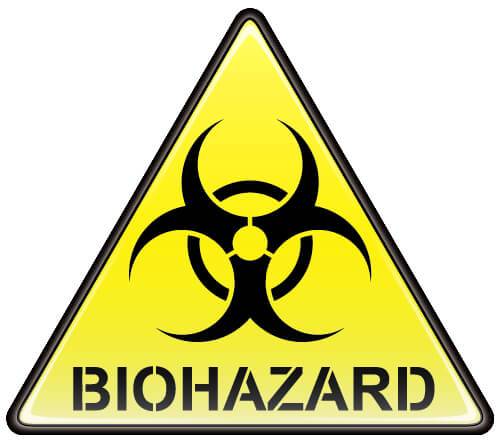
Wireless electricity is ubiquitous
All electric/electronic appliances now have antennas in place of batteries, and draw power from a single power node mounted in the ceiling of a room – eliminating the need for multiple wall sockets and bulky cables. This greatly reduces clutter in homes and offices.
A magnetic coil is housed in a small box, which can be set into a wall or ceiling. Powered by mains, this resonates at a specific frequency. Electromagnetic waves are transmitted through the air. These are received by a second magnetic coil, fitted in the laptop/TV or other appliance. This resonates at the same frequency as the first coil and absorbs energy, charging the product.
This technology began with small, short-range devices such as phone charger pads and electric toothbrush holders. Improving efficiency made it possible to beam power over distances of many metres. This allowed it to spread to larger and more energy-hungry products, such as televisions, computers and even vehicles. A universal standard was also adopted – ensuring compatibility and greatly expanding its mass market appeal.
The system is completely safe to humans. By the late 2020s, it is ubiquitous in homes and workplaces throughout the developed world.
Eventually, power lines begin to disappear from streets, with electricity passed wirelessly from building to building. Laptop users in cafes and airport terminals are able to utilise "WiTricity" hotspots. This does for battery life what WiFi did for the Internet.
Rising sea levels are wreaking havoc on the Maldives
At an average of just 1.5m above sea level, the Maldives is the lowest lying country on the planet. Rising sea levels are now beginning to devastate its economy, one-third of which relies on tourism.
The mere talk of a possible submersion, in recent years, had been damaging investor confidence. By this date, however, the tangible reality of global warming is leading to the wholesale abandonment of many islands.*
The United States of Africa is established
Following years of diplomatic negotiations, the first truly pan-African government has been formed.* This federation has a combined population of more than a billion. It consists of the 53 sovereign states on the African continent, and extends as far west as the Caribbean to include Haiti, Jamaica and the Dominican Republic.
Following years of diplomatic negotiations, the first truly pan-African government has been formed.* This federation has a combined population of more than a billion. It consists of the 53 sovereign states on the African continent, and extends as far west as the Caribbean to include Haiti, Jamaica and the Dominican Republic.
The union is faced with major challenges - including health issues such as the AIDS epidemic and malaria; political issues such as corruption and civil wars; economic issues such as improving the standard of living of millions of impoverished, uneducated Africans; and environmental issues such as famine and desertification. However, this continental unity marks a turning point for Africa. As trade links improve, wealth and stability increases, and its constituent nations find themselves better able to market their labour, products and resources. Access to education and healthcare is being boosted by a number of technological innovations.
This transformation is a slow, gradual process - but finally there is hope for a peaceful, prosperous Africa. This situation is being mirrored in a number of other Third World countries which are beginning to extend their spheres of influence. With many First World nations facing their own economic and political crises, a more even spread of power is emerging across the globe.
Construction of the Sagrada Família is complete
The Sagrada Família is a massive, privately-funded Roman Catholic church that has been under construction in Barcelona since 1882. Considered the masterwork of renowned Spanish architect Antoni Gaudí (1852–1926), the project's vast scale and idiosyncratic design have made it one of Spain's top tourist attractions - visited by millions each year. Construction of the building is finally completed this year.*
The Sagrada Família is a massive, privately-funded Roman Catholic church that has been under construction in Barcelona since 1882. Considered the masterwork of renowned Spanish architect Antoni Gaudí (1852–1926), the project's vast scale and idiosyncratic design have made it one of Spain's top tourist attractions - visited by millions each year. Construction of the building is finally completed this year.*
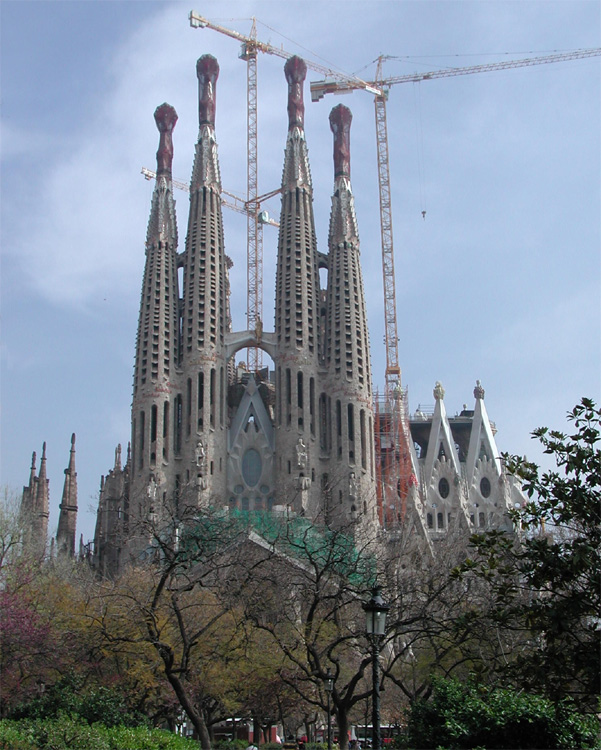
Credit: Paolo da Reggio
Contact with the Voyager probes is lost
Voyager I is now almost 23 billion kilometers from our Sun - or 150 times the distance between the Sun and Earth.
Both probes have remained operational for nearly half a century, continuing to transmit science data back to NASA. They have left the heliosphere entirely and are now headed towards the bow shock - the boundary between the stellar wind and the interstellar medium.
However, by this date, onboard power finally starts to wane. Various instruments begin shutting down, one by one, until eventually all contact is lost.
Each probe carries a gold-plated audio-visual disc, in the event that either spacecraft is ever found by intelligent alien life. The discs carry images of Earth and its lifeforms, a range of scientific information, along with a medley, "Sounds of Earth", that includes the sounds of whales, a baby crying, waves breaking on a shore, a variety of music from different cultures and eras, plus greetings in 60 different languages.*
BRICs overtake the G7
By this date, the major emerging markets - Brazil, Russia, India and China, a.k.a. the BRICs - have overtaken the combined GDP of the G7 nations.*
By this date, the major emerging markets - Brazil, Russia, India and China, a.k.a. the BRICs - have overtaken the combined GDP of the G7 nations.*
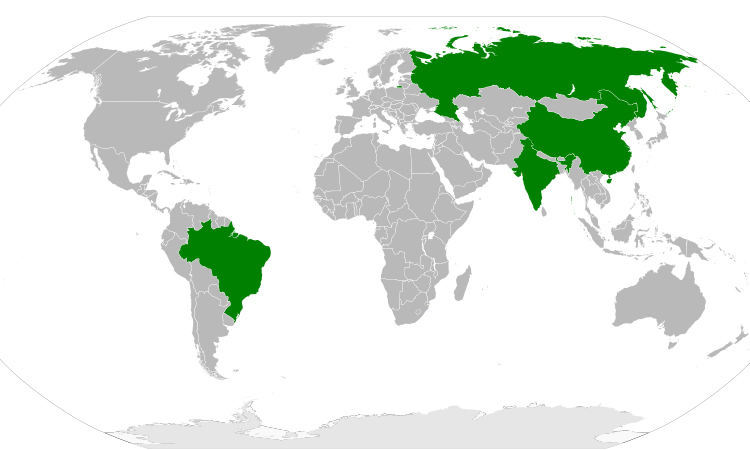
Credit: Felipe Menegaz
Carbon sequestration is underway in many nations
Following years of research and development, a number of geoengineering techniques are now being utilised for trapping and removing CO2. This is offering fresh hope for mitigating the effects of climate change.
Following years of research and development, a number of geoengineering techniques are now being utilised for trapping and removing CO2. This is offering fresh hope for mitigating the effects of climate change.
The most significant technology is "clean coal", being fitted to power plants. This is seeing widespread adoption, since it now costs less than unsequestered coal-based power generation.* The carbon dioxide is stored in geological formations deep underground (including some empty oil wells). Great care and precision must be taken in choosing these sites, however, as dumping the gas in an unstable location may cause it to leak back up to the surface or contaminate aquifers used for drinking supplies.
Another method of carbon sequestration which is showing great potential is the deployment of "artificial trees". These are shaped like giant fly swatters around 10m high, and are becoming an increasingly common sight along roads, freeways and other polluted areas.* The trees capture CO2 through a filter - thousands of times more efficiently than real trees - which is then removed and stored.
Another geoengineering project involves strips of algae, fitted to the sides of buildings, which naturally absorb CO2 through photosynthesis. They are most common in high-density urban centres, where tall buildings offer a much greater surface area. These "photobioreactors" (as they are called) not only sequest carbon, but can also produce biofuel and biochar as beneficial side effects. The biofuel can be used to generate energy whilst keeping net carbon emissions to zero, while the biochar can be used as a very good fertiliser.*
Yet another project is the addition of highly reflective panels on rooftops. These reflect sunlight back into space, reducing the amount of solar radiation being absorbed by the Earth.
Although efficient, the geoengineering techniques described above (along with various others) do not represent the ultimate solution to global warming. They are only a temporary measure. The only effective, long-term process for stabilising the earth's climate remains the large-scale adoption of solar, wind, hydro, nuclear and other renewable energy sources.
Printed electronics are ubiquitous
The printed electronics market has seen exponential growth. By now, it has ballooned to over $300 billion globally - even overtaking the silicon integrated circuit industry.*
The printed electronics market has seen exponential growth. By now, it has ballooned to over $300 billion globally - even overtaking the silicon integrated circuit industry.*
This technology began with a small number of niche, high-end products. It expanded rapidly in the 2010s, thanks to plummeting costs and improved production methods. By the 2020s it had exploded into the mainstream – creating a whole new generation of ultra-thin electronics.
Today, these have such low fabrication costs that they are ubiquitous, being present in countless everyday business and consumer applications. Many previously bulky and heavy devices can now be folded, stored or carried as easily as sheets of paper. This includes flexible TV displays that can be rolled or hung like posters, wearable mobile phones, electronic newspapers with moving pictures, disposable netbooks, "smart" packaging and labels with animated text, signage in retail outlets that can be updated shop-wide at the touch of a button.*
Multimedia players with expandable, fold-out touchscreens are especially popular. Even low-end models are now the size and weight of credit cards and can easily fit inside a wallet. With petabytes of storage, gigapixels of screen resolution and superfast transfer speeds, they are millions of times more powerful than iPods of previous decades. They are also completely wireless - no cables or physical connections of any kind are required, and music can be enjoyed using wireless earphones.
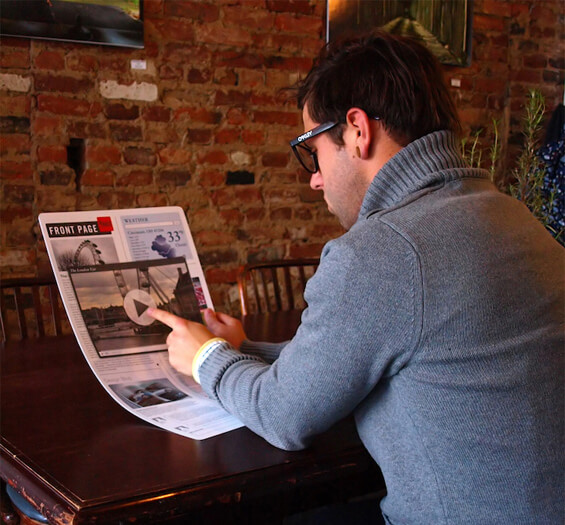
UK population reaches 70 million
Britain will soon become the most populous country in Europe, overtaking both Germany and France. This is mainly due to vast numbers of immigrants. Combined with a shrinking labour force, this is putting an enormous strain on public services - especially in London, which has born the brunt of this increase.
Britain will soon become the most populous country in Europe, overtaking both Germany and France. This is mainly due to vast numbers of immigrants. Combined with a shrinking labour force, this is putting an enormous strain on public services - especially in London, which has born the brunt of this increase.
The East End has been transformed in recent years, becoming almost a whole new city within London, and beginning to rival the West End. Vast areas of land have been redeveloped with hundreds of new residential developments, office towers, retail masterplans, green spaces and public areas - all built to the highest environmental standards.
Manned fighter planes are being phased out and replaced with UAVs
By this date, the A-10 Thunderbolt II has been replaced completely by the F-35 Lightning II - which itself becomes one of the last remaining manned fighter planes in the US military. The F-35 will remain in operation until the 2040s, eventually being replaced by a new generation of unmanned aerial vehicles (UAVs) controlled by advanced AI.
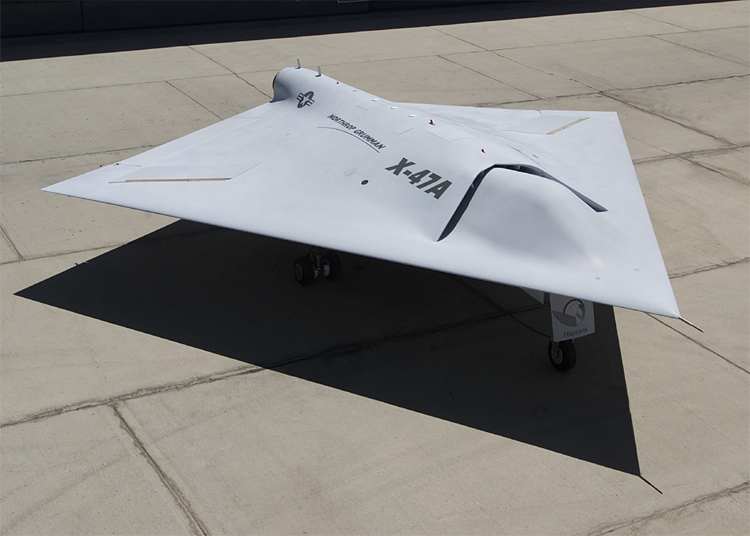
Amputees can regrow lost limbs
Drugs are now available that can stimulate human cells to regrow entire limbs.* By switching off a particular gene known as P21, adult mammalian cells can be induced to behave like regenerative embryonic stem cells.*
The treatments are applied transiently during the healing process and only locally at the wound site, which also minimises any side effects.
Further into the future, even damaged brains will be capable of being regenerated.*

Credit: Spauln
Human-like AI is becoming a reality
A major milestone is reached in the field of AI research this year, as a computer passes the Turing Test for the very first time.** In a virtual reality setting, a human judge is made to engage in a natural language conversation with one human and one machine, each of which tries to appear human. The participants are placed in isolated locations.
Graphics and voice effects have already progressed to the point that CGI characters are visually indistinguishable from real people. However, computer intelligence and interaction have also grown exponentially, such that the judge is now literally unable to tell the machine from the real human.*
Answers to certain "obscure" questions posed by the judge may appear slightly childlike from the AI - but they are humanlike nonetheless.*
Heavy automation of supermarkets and retail environments
In developed nations, the majority of retail environments are now cashless. Automated systems have made it possible for customers to shop with little or no physical interaction with a checkout.
Items are simply "scanned" as they pass out of the door. The customer is identified by a chip in their card, or with a prepayment transponder obtained from a vending machine outside the store. Transactions are then generated over the Internet.
This system greatly saves time, improves security and reduces costs for the retailer by eliminating the need for checkout staff.
Customers can also utilise Augmented Reality, to quickly locate shop items. A shopping list on their mobile phone can direct them to the appropriate aisle and shelf. High-end users can make use of glasses with displays built into the lenses.
Intelligent advertising
Personalised adverts - similar in style to those seen in the film Minority Report - are becoming widespread by the end of this decade.** Microsensors embedded in posters and other outdoor media can identify people by the chips in their mobile phone, credit card and other personal effects. These adverts are then customised depending on the interests and lifestyle of the person in question.
Pairs of ultrasonic beams - targeted to intersect at specific points - deliver a localised sound message that only a single person can hear. This means that even in crowded situations, the adverts can be made personal and unique.
Civil liberties campaigners decry the use of such technology, given the anxiety and paranoia resulting from such marketing tactics; but the demands of business win through.
Titan Saturn System Mission (TSSM)
This is a joint NASA/ESA mission involving the exploration of Saturn and its moons. The craft is launched in 2020, and goes through a total of four gravity assists (Earth-Venus-Earth-Earth), before finally reaching Saturn in 2029.*
Detailed, close-range imaging is conducted of both Titan and Enceladus - including a flyby into Titan's lower atmosphere with a hot air balloon, just a few miles above the surface. This takes place over the equator and lasts for six months, returning a vast amount of data. Equipped with ultra-high resolution cameras, the probe reveals in stunning detail the landscapes of this strange alien world.
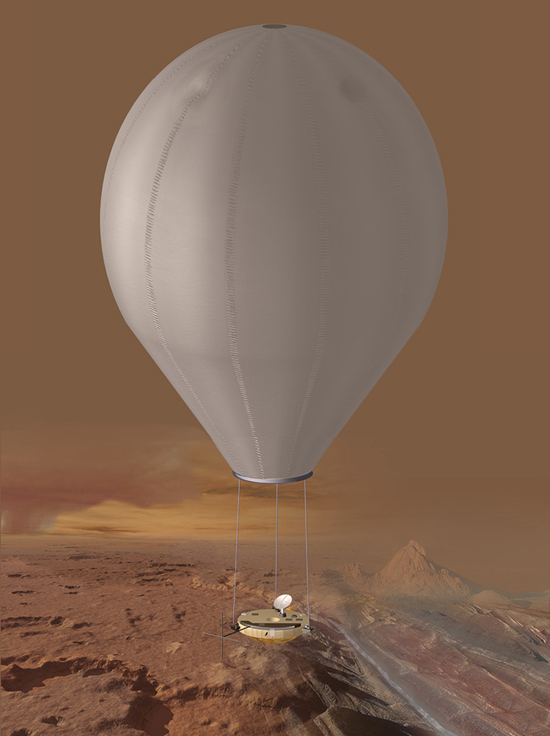
Credit: NASA
On its second Titan flyby, a surface lander is released by the orbiter. This is targeted over Kraken Mare, a northern polar sea of icy hydrocarbons. The probe descends by parachute, like the Huygens probe of 2005. A few hours later, it hits the liquid surface - becoming the first ever floating exploration of an extraterrestrial sea.
The battery-operated craft's principal function is to sample and analyze organics on the surface for a period of nine hours, including six hours of atmospheric descent and three or more hours on the surface. Both probes' data are relayed to the Titan orbiter.
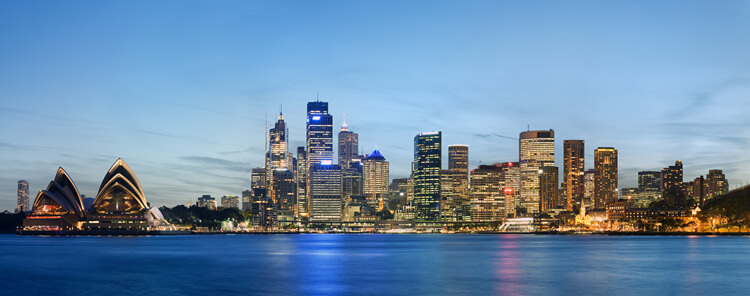


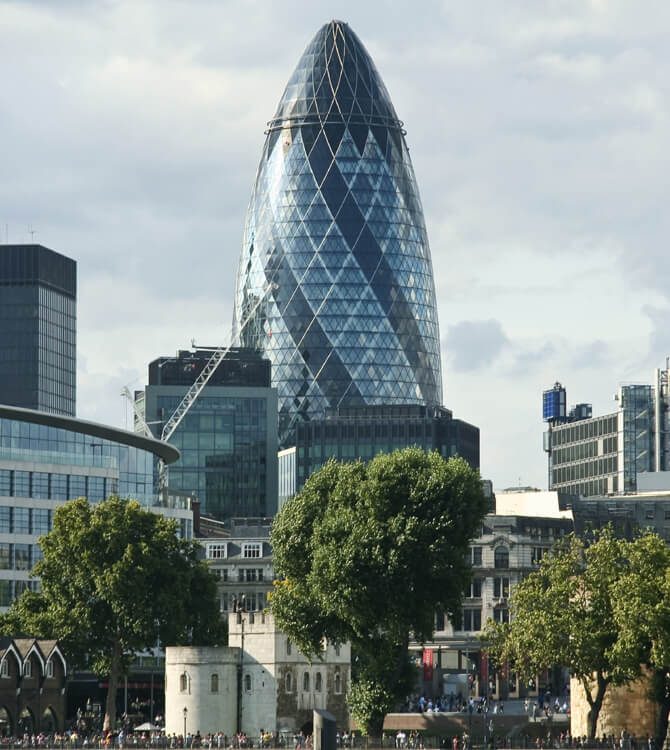
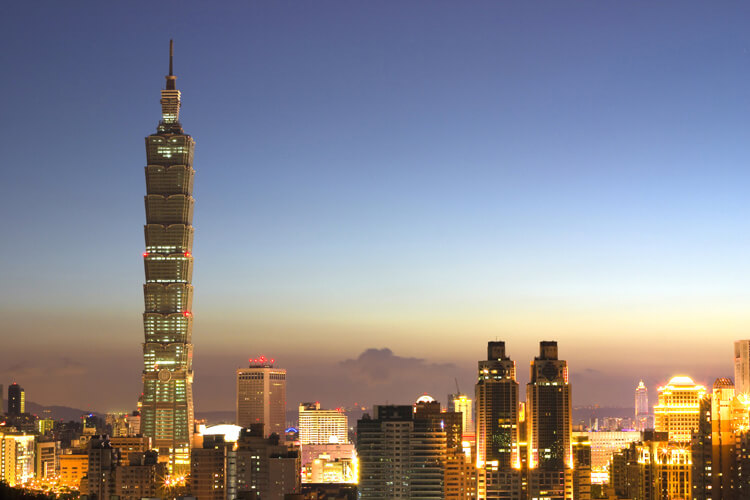
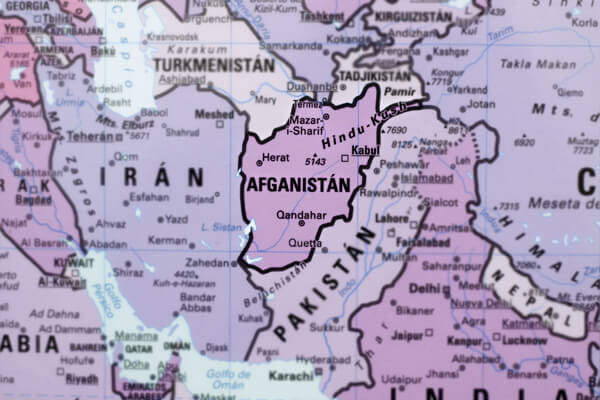

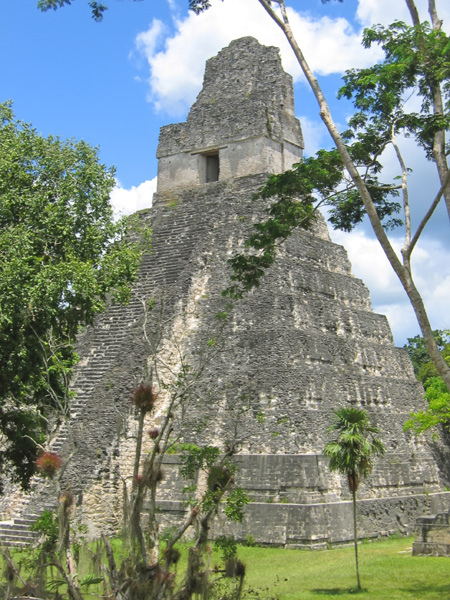
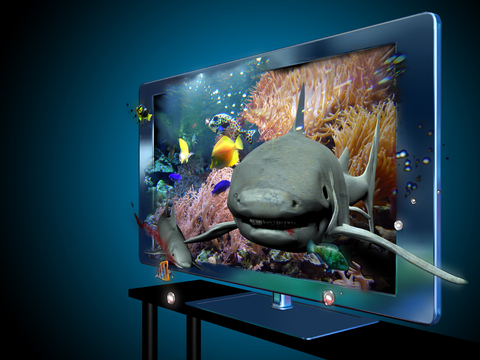
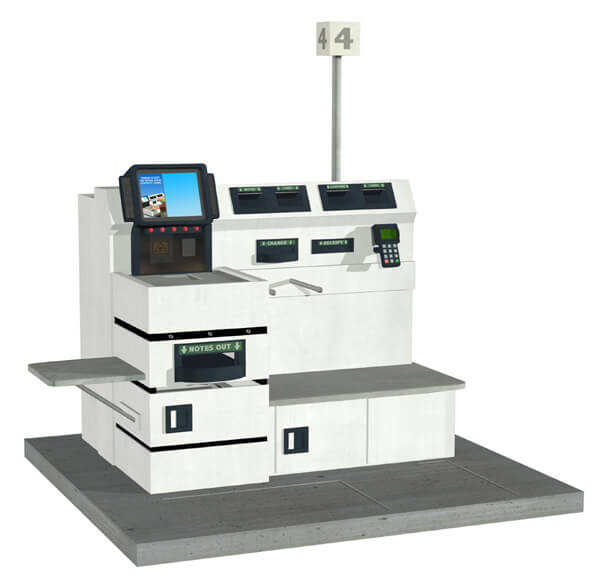

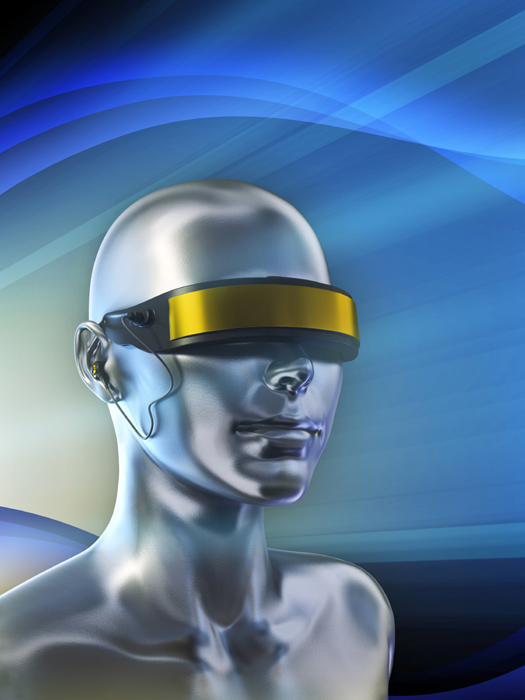

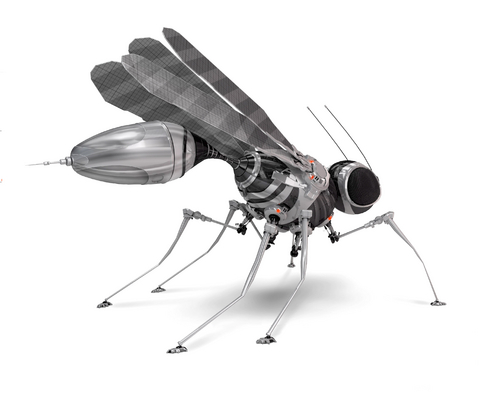
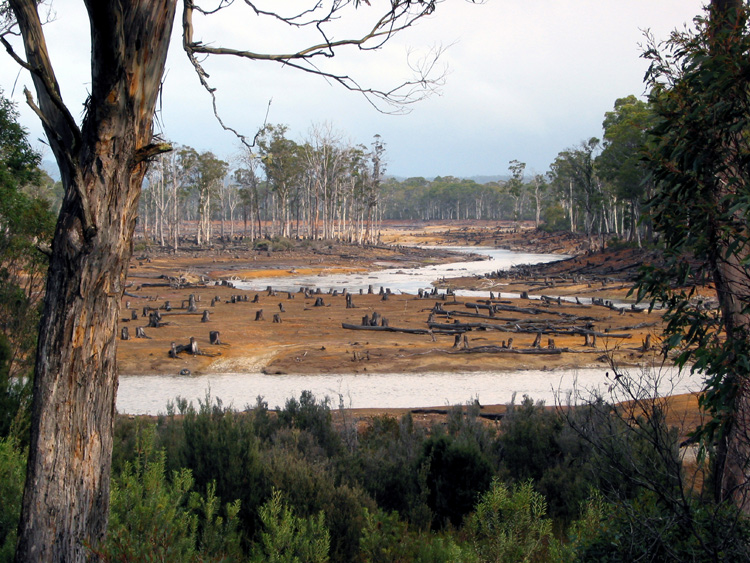
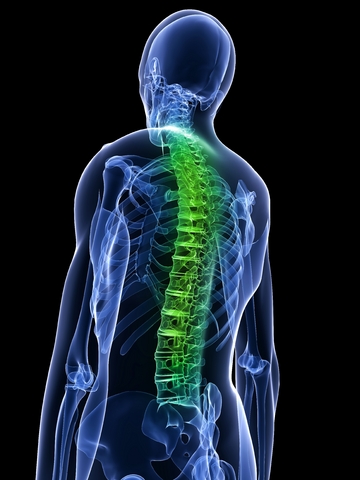

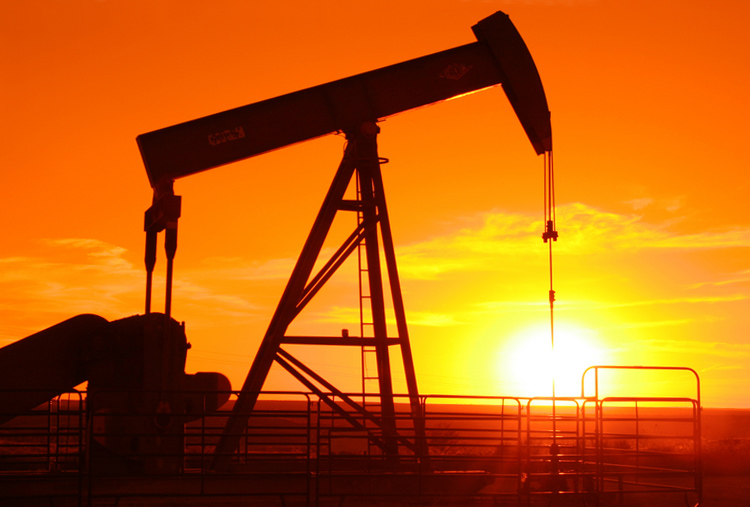
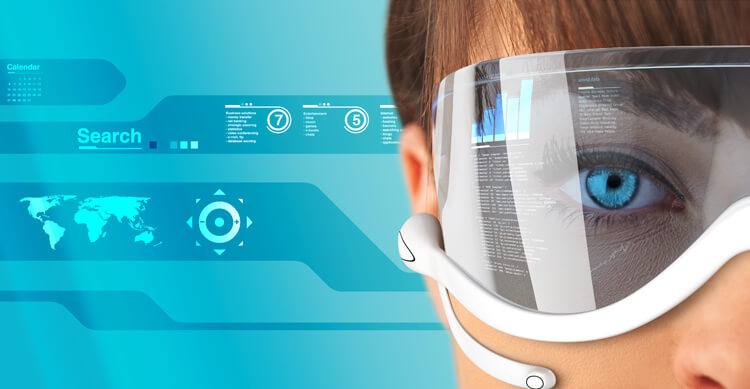
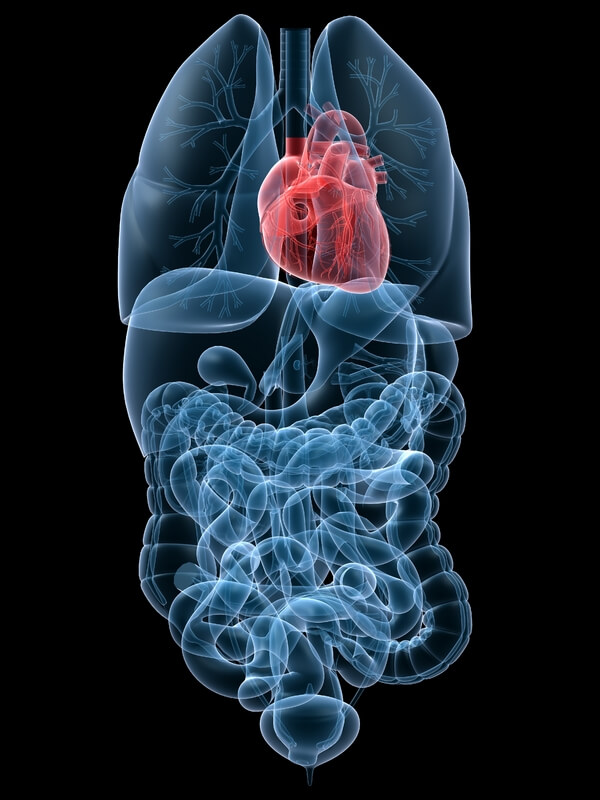
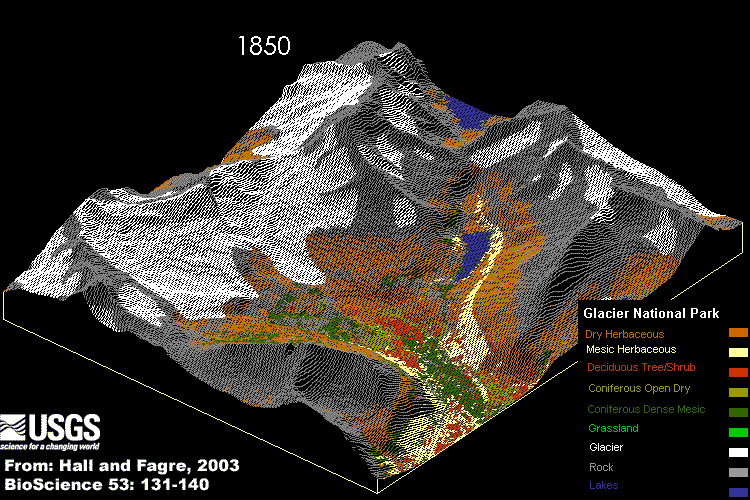
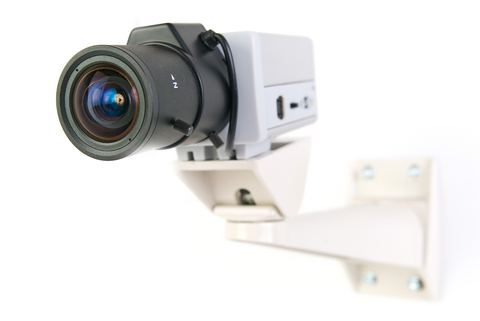
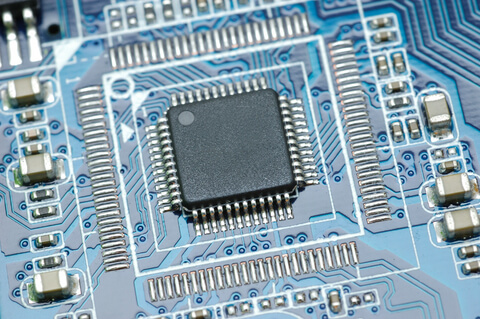

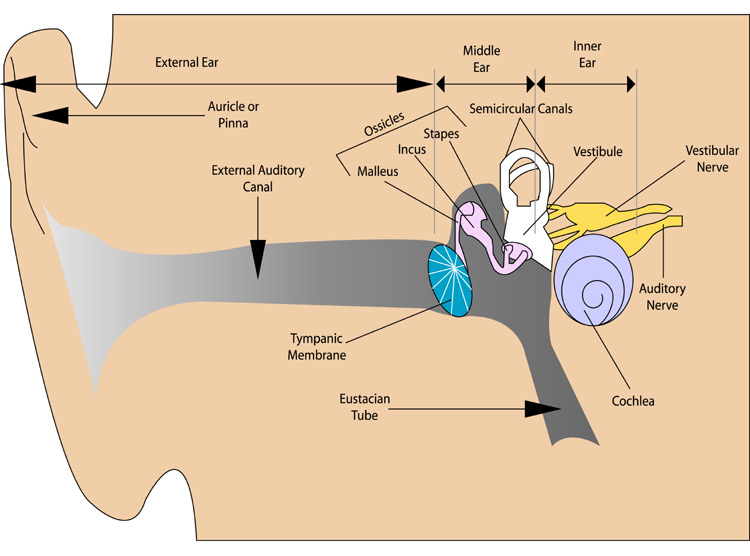
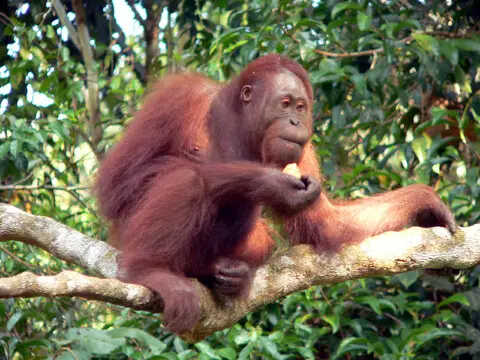

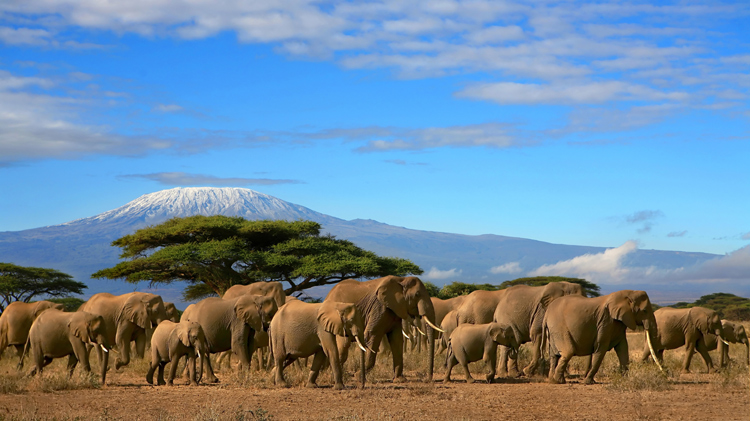
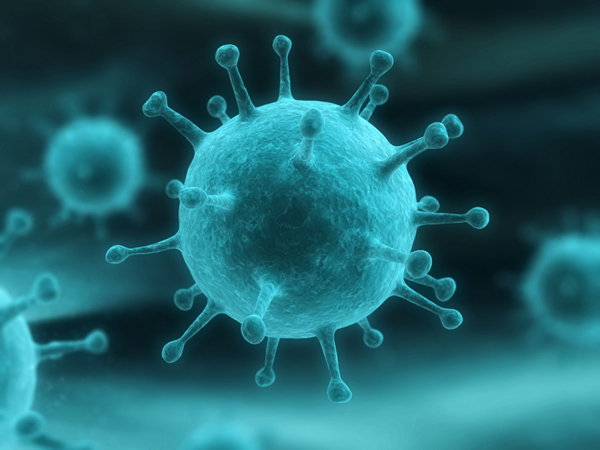
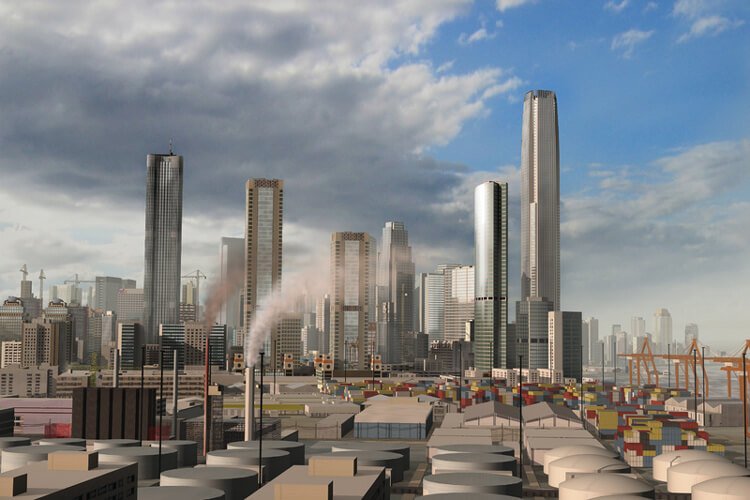
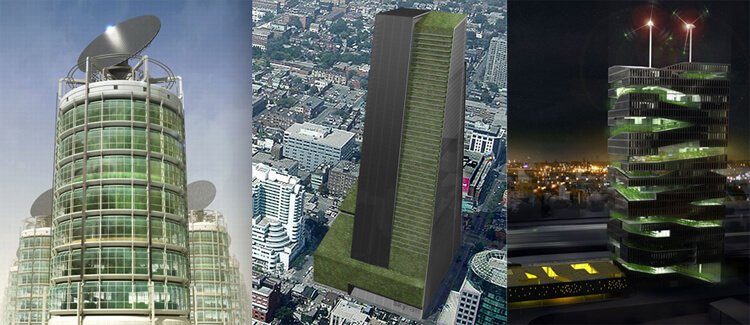
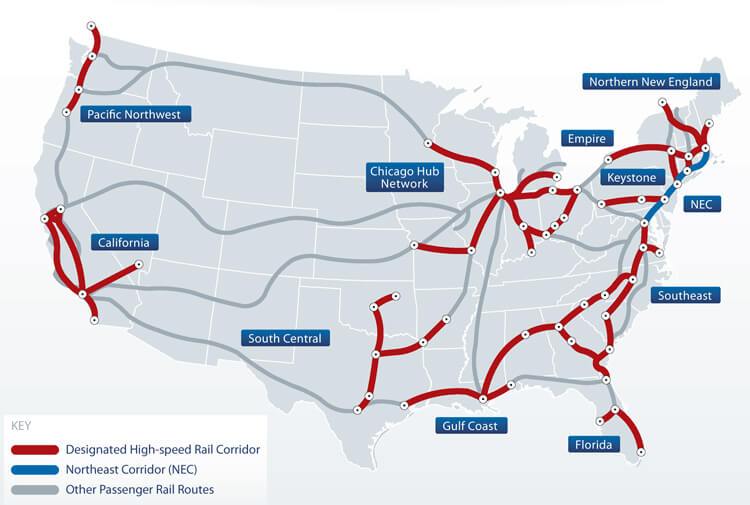
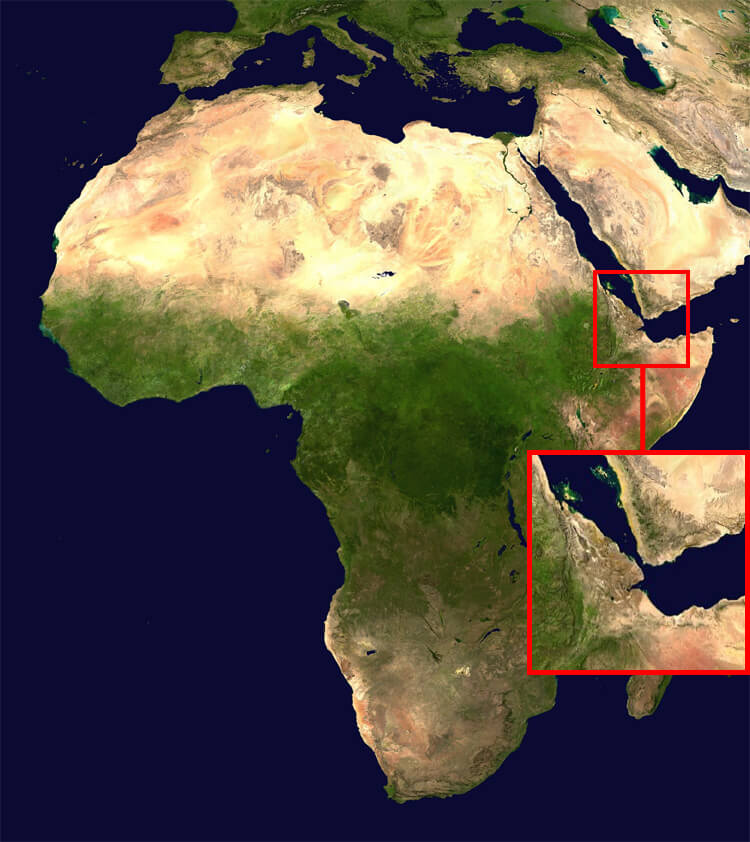

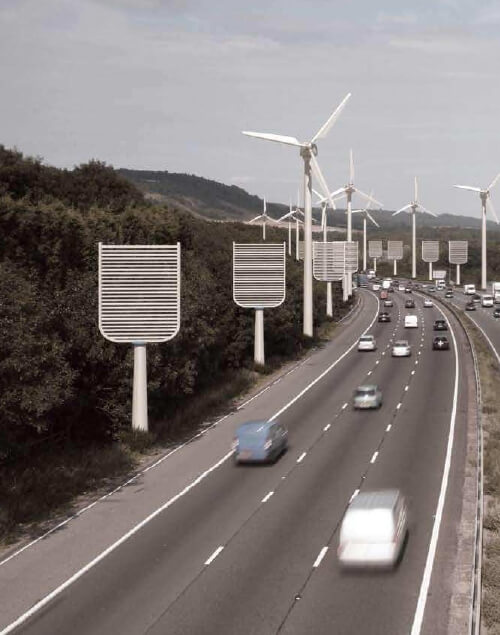
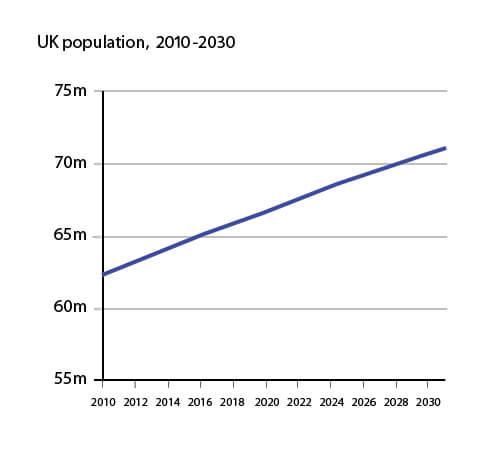
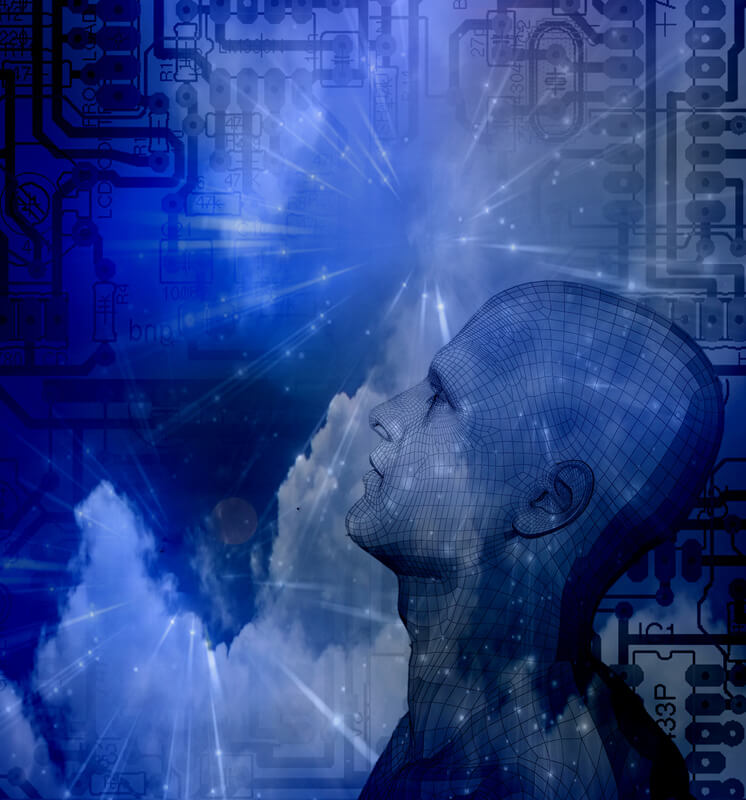
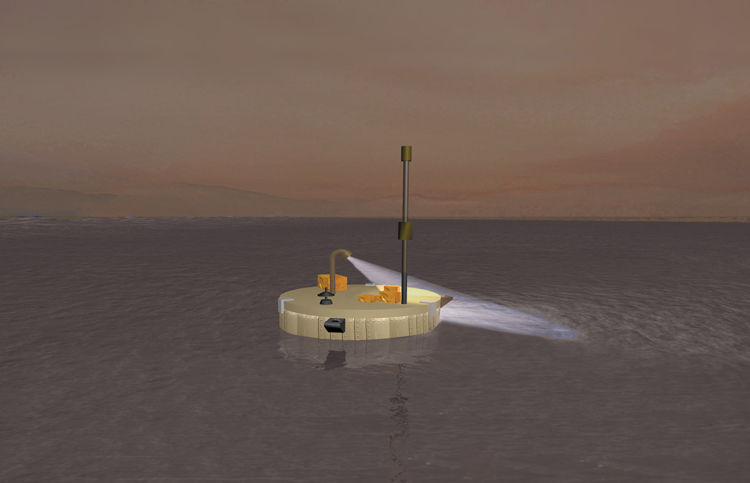
Niciun comentariu:
Trimiteți un comentariu